We’ve got our visas. We’ve got the gifts for our guides. We’ve got over 17,000 RMB (~$2,600) and a couple hundred USD. We’re checked out of our hotel in Beijing….. Strolling outside towards the subway with our luggage and goodies, wouldn’t you know, it’s an absolutely gorgeous day in Beijing. The sky a clear azure, specked with a few perfect cottonball clouds. It rains and rains for days, choking you with smog… you walk around in a dank white heat with the visibility of Silent Hill. Then, after suffering for a few days of this, you’re granted a one day reprieve. No rain, no smog, and remarkably tolerable heat. Today is that reprieve, and this beautiful day just happens to be our day of departure to the DPRK. Maybe it’s a good sign.
When we get to the airport and find our check-in counter, we get our first hints of the destination. There’s a small scattered group gathered in front of the desk. Like many places in China, there’s nothing really resembling a line, just a scattering of people moving back and forth, jockeying for position at the counter. Occasional arguments and yelling in Chinese, the usual queuing routine here. After briefly standing at the rear of the mess of suitcases and locals, planning our forward assault on the desk, a gentlemen emerged from another counter with “Can I help you? Where are you going?” …He had one of the tidy Kim Il Sung pins over his left chest. I’m pretty sure he thought we’d come to the wrong check-in counter.
“Pyongyang,” we replied.
“Right this way.” And with that, we were brought around and checked in by a couple more DPRK citizens. They’re all easily identified by the government issued pins of the “great leader” that are reverently worn every day over their heart. Their affect was a bit stiff and serious, but they lightened up and smiled a little after some polite pleasantries. One difference from much of the local service we’ve received in China… these guys really work hard. It’s clear that all of them take pride in their jobs and take their work (whatever it is) very seriously. Watching the Chinese group at the desk next to us, it was looking like our streak of no checked bags on this trip was going to end. The family was checking multiple little rollaboard suitcases that were all under the typical carry-on size. The guy at our desk asked if we had any bags to check and I reluctantly showed him my MEI bag and asked if I could carry it on. The whole DPRK group nodded “yes.” Perfect! Our record remains intact. With the gift bags and daypacks, we really were a bit more weighed down than usual, but it was still nice to keep control of all of our bags and avoid any unpleasant surprises or delays after the flight. So, we get to our gate after a quick security check, and wouldn’t you know, the duty free store there is selling Marlboros! For $15 U.S. per carton, so I guess I didn’t need to get them back in Vietnam. Oh well though, we’ve got all our gifts.
 I had certain expectations regarding our flight ahead of time. Let’s just say, they weren’t high expectations. Koryo Air, the government run airline that primarily provides service from Beijing to Pyongyang, has the distinction of the being the world’s only “1 Star” rated airline. For safety, for service, the whole thing. They’ve never had any major incidents, but many descriptions online make it seem like a flying death trap. Old decaying Russian planes being used well outside their lifespan, with many safety checks being bypassed. I recalled roaming around the tarmac in Haiti after the earthquake, trying to hitch a ride on cargo planes. That’s what I had in mind before this trip. But this was nothing like that. Not at all. We got into a very new Russian passenger jet seating people six to a row. Everything was decorated in bright communist red, from the flight attendants to the seating. Instrumental revolutionary music played as we boarded. It reminded me, just a little, of Aeroflot, the Russian airline. I was probably a little tense already as the cabin doors closed and I further processed where we were going. In that tension, after takeoff, it was more than a little jarring to really feel the landing gears as they retracted and made loud grinding noises. Visions of malfunctioning landing gears forcing a water landing or a botched landing engulfing the plane in flames danced briefly in my head. Shake that off though. Look…. What’s that? Oh, automated LCD screens that fold down and play our safety instruction video. “Koryo airlines… founded with the principles of the great revolutionary Juche spirit!” It was the most entertaining instruction video ever, for sure. After the video, the flight attendants came through with politically appropriate reading material. On the carts they had some pamphlets with Kim Jong Il traveling to schools and different places, as well as a huge stack of “The Pyongyang Times,” a weekly English-language DPRK newspaper. We grabbed a copy of the Times and I read about how Kim Jong Il has visited and and watched a few shows and met with some foreign dignitaries. That was pretty boring, but they also had an article about a “breakthrough” spinal surgery they’re doing in DPRK. It was described like a laminectomy with fusion and hardware, but the way they told it, you’d think it could’ve cured Christopher Reeves. They also talked about how a DPRK Tae-Kwon-Do group toured in the USA and amazed audiences in multiple cities, starting with Boston and New York. Oh, and a very heated rebuttal of a South Korean white paper on DPRK human rights. The Times said that South Korea has turned into a “human rights hell on earth,” a pretty interesting statement from them. No mention of how human rights are trampled in South Korea though, of course. After all that engaging and informative reading, my eyes were starting to get a little heavy. I looked to my left, and she already had a positive “Q sign” and was totally out cold. I put away the Times, taking great care to not fold the front page picture with Kim Jong Il on it, and nodded off to sleep for a while. I woke up for the in flight meal, which included beef and rice, fried fish, and boiled chicken. That’s right “and.” Three meats served on a 90 minute flight. Interesting. As we started to make our descent, I pulled up the window shade to check out the countryside. Small mountains dotted the green landscape. It looked like Guilin in China. Really beautiful. The difference here is that it’s so untouched. Farmland with fields of rice and corn… small basic houses sprinkled on hillsides. Temple structures on top of some of the mountains. The roads looked well maintained and clean. Nothing too surprising though. I expected rural, and I expected clean. Oh yeah, and no smog. I expected that too. Maybe this cough I developed in China will clear up with the good country air. I sure hope so.
I had certain expectations regarding our flight ahead of time. Let’s just say, they weren’t high expectations. Koryo Air, the government run airline that primarily provides service from Beijing to Pyongyang, has the distinction of the being the world’s only “1 Star” rated airline. For safety, for service, the whole thing. They’ve never had any major incidents, but many descriptions online make it seem like a flying death trap. Old decaying Russian planes being used well outside their lifespan, with many safety checks being bypassed. I recalled roaming around the tarmac in Haiti after the earthquake, trying to hitch a ride on cargo planes. That’s what I had in mind before this trip. But this was nothing like that. Not at all. We got into a very new Russian passenger jet seating people six to a row. Everything was decorated in bright communist red, from the flight attendants to the seating. Instrumental revolutionary music played as we boarded. It reminded me, just a little, of Aeroflot, the Russian airline. I was probably a little tense already as the cabin doors closed and I further processed where we were going. In that tension, after takeoff, it was more than a little jarring to really feel the landing gears as they retracted and made loud grinding noises. Visions of malfunctioning landing gears forcing a water landing or a botched landing engulfing the plane in flames danced briefly in my head. Shake that off though. Look…. What’s that? Oh, automated LCD screens that fold down and play our safety instruction video. “Koryo airlines… founded with the principles of the great revolutionary Juche spirit!” It was the most entertaining instruction video ever, for sure. After the video, the flight attendants came through with politically appropriate reading material. On the carts they had some pamphlets with Kim Jong Il traveling to schools and different places, as well as a huge stack of “The Pyongyang Times,” a weekly English-language DPRK newspaper. We grabbed a copy of the Times and I read about how Kim Jong Il has visited and and watched a few shows and met with some foreign dignitaries. That was pretty boring, but they also had an article about a “breakthrough” spinal surgery they’re doing in DPRK. It was described like a laminectomy with fusion and hardware, but the way they told it, you’d think it could’ve cured Christopher Reeves. They also talked about how a DPRK Tae-Kwon-Do group toured in the USA and amazed audiences in multiple cities, starting with Boston and New York. Oh, and a very heated rebuttal of a South Korean white paper on DPRK human rights. The Times said that South Korea has turned into a “human rights hell on earth,” a pretty interesting statement from them. No mention of how human rights are trampled in South Korea though, of course. After all that engaging and informative reading, my eyes were starting to get a little heavy. I looked to my left, and she already had a positive “Q sign” and was totally out cold. I put away the Times, taking great care to not fold the front page picture with Kim Jong Il on it, and nodded off to sleep for a while. I woke up for the in flight meal, which included beef and rice, fried fish, and boiled chicken. That’s right “and.” Three meats served on a 90 minute flight. Interesting. As we started to make our descent, I pulled up the window shade to check out the countryside. Small mountains dotted the green landscape. It looked like Guilin in China. Really beautiful. The difference here is that it’s so untouched. Farmland with fields of rice and corn… small basic houses sprinkled on hillsides. Temple structures on top of some of the mountains. The roads looked well maintained and clean. Nothing too surprising though. I expected rural, and I expected clean. Oh yeah, and no smog. I expected that too. Maybe this cough I developed in China will clear up with the good country air. I sure hope so.
 We disembarked from the plane down stairs onto the tarmac. I love it, it’s the presidential treatment. It connects you with the place you just arrived at, making your first impression the sky and ground and horizon and buildings instead of some sterile plastic accordion leading into an equally sterile airport. Once we were herded into the airport, we went through the motions of immigration and customs. The immigration part was very straightforward. They put a stamp on our visas, took a slip we filled out, and we were off. No checked bags for us, so skipping that, we moved on to customs. These guys were a bit more serious. The first guy yelled a bit and pointed to another slot to go to. I approached the guard at the next line and gave a timid smile and light nod. He held out his hand, made some kind of waving gesture and said, loudly and sternly, something that sounded like “Bye Bye.” She and I looked at each other. She cocked her head a little and cautiously said “Bye Bye?” Was he waving us through? We stood there for a second and he said it again more emphatically. Then he said it again. And then one more time. Oh, wait…. “MOBILE!” I quickly grabbed the iPhone from out of my pocket. Cool, ok. Our bags went through the scanner, and afterwards the guy wanted to dig through them completely. He had sniffed out any and all electronics that I had packed. Remarkably, he wasn’t at all interested in the Macbook Air (I’m typing this up right now in our hotel in Pyongyang on it). He checked out my main camera, and almost sneered at it. The old Olympus EP-2 has been through hell, and it shows. It’s been dropped more than a few times… on mountains. It’s been rained on… extensively. The paint is worn off of it. Damn I love that camera. He didn’t care about it or the extra lenses though. I could’ve had infrared telescopes for all he cared. He was fishing for “the other camera.” That’s right, we have a backup camera. A very small Casio Exilim (smaller than an iPhone). I helped him find that and he was satisfied. “Any GPS?” That’s what he was really looking for. Nope, only on that iPhone you got. We got a receipt for the iPhone, and we should get it back when we leave the DPRK.
We disembarked from the plane down stairs onto the tarmac. I love it, it’s the presidential treatment. It connects you with the place you just arrived at, making your first impression the sky and ground and horizon and buildings instead of some sterile plastic accordion leading into an equally sterile airport. Once we were herded into the airport, we went through the motions of immigration and customs. The immigration part was very straightforward. They put a stamp on our visas, took a slip we filled out, and we were off. No checked bags for us, so skipping that, we moved on to customs. These guys were a bit more serious. The first guy yelled a bit and pointed to another slot to go to. I approached the guard at the next line and gave a timid smile and light nod. He held out his hand, made some kind of waving gesture and said, loudly and sternly, something that sounded like “Bye Bye.” She and I looked at each other. She cocked her head a little and cautiously said “Bye Bye?” Was he waving us through? We stood there for a second and he said it again more emphatically. Then he said it again. And then one more time. Oh, wait…. “MOBILE!” I quickly grabbed the iPhone from out of my pocket. Cool, ok. Our bags went through the scanner, and afterwards the guy wanted to dig through them completely. He had sniffed out any and all electronics that I had packed. Remarkably, he wasn’t at all interested in the Macbook Air (I’m typing this up right now in our hotel in Pyongyang on it). He checked out my main camera, and almost sneered at it. The old Olympus EP-2 has been through hell, and it shows. It’s been dropped more than a few times… on mountains. It’s been rained on… extensively. The paint is worn off of it. Damn I love that camera. He didn’t care about it or the extra lenses though. I could’ve had infrared telescopes for all he cared. He was fishing for “the other camera.” That’s right, we have a backup camera. A very small Casio Exilim (smaller than an iPhone). I helped him find that and he was satisfied. “Any GPS?” That’s what he was really looking for. Nope, only on that iPhone you got. We got a receipt for the iPhone, and we should get it back when we leave the DPRK.
After clearing customs, we headed out to another area where a crowd was gathered by the door to the parking lot. There was a moment there where we just stood in the crowd. We looked at each other, and then looked around, and saw no one with a sign with our name. No one looking at us with any interest. “Are we free agents in North Korea right now?” I asked. Just then, a tall, sharply dressed Korean man approached and said “Mr. Seneca?” …”Yes.” Ah, that’s right, they have our pictures, of course. We don’t need to find them. They’ll find us.
 We were introduced to our guides, the tall, neatly dressed middle aged gentleman, and a Korean woman in her mid twenties. I won’t be using any real names in this blog entry, so I’ll go ahead and start with some pseudonyms. Our sharp dressed male guide is named “Harold” and our younger female guide is named “Shirley.” We piled in a large van, along with our driver of course, and headed off. Harold sat up front and Shirley sat in the second row and chatted with us during the drive. Small talk about her country, about our country, and about many of the sites and monuments we were passing on the drive from the airport to our hotel. The ride started out in a fairly rural area, as the airport is about a 25 minute drive from the center of Pyongyang. The road was pockmarked with occasional potholes, but certainly no worse than the northeastern United States. Nice sidewalks on both sides. Clean, well constructed, albeit drab, housing complexes. Spartan, Soviet-style construction, with pretty little flower planters on most of the balconies. For the outskirts, the suburbs, if you will, it was kind of bustling. Lots of pedestrian and bicycle traffic, everyone really moving with a purpose. The manner of dress is very simple. None of the gaudiness you see in China with bright pastels and reflective fabrics. Simple, solid colors in muted, neutral tones. The men wearing brown or gray copies of Kim Jong Il’s trademark suits, and the women wearing simple dresses or work clothes. And everyone, I mean everyone, of course, proudly wearing the pin with Kim Il Sung. As the drive went on, I think I may have spaced out a bit. After a minute or two, I kind of came back to reality and looked around, remembering where I was and thought to myself “Wait a minute, how the hell did all these cars get here?” I’ve read many, many trip reports, and they all talk about what a ghost town Pyongyang is. Big avenues with multiple lanes and no cars driving on them. But this was kind of busy. Not like Mexico City or New Delhi busy, but at least like Jacksonville, Florida busy. Lots of cars in a steady stream. Lots of older cheap looking asian models I’ve never seen before. A few military looking jeeps and such. But then, here and there, a sprinkling of really, really nice cars. Was that a brand new VW Touareg that just passed? Hmmm… And then, I see a gorgeous black Audi A8 cruise by. A $100k vehicle here? How the hell did it get here, and more importantly, who the hell is driving it? Shirley told us that there are councils that assign people to houses. People don’t buy houses, they’re assigned to them by the government. They can ask to change houses if they have a reason (like more kids), but it has to go through a local council. Staying somewhat on topic, we asked about the cars. Are there car dealerships? Nope, all the cars are owned by the government. How do you get a car? She replied that Koreans prefer public transit, but that if you have a need for a car you can request one. You’re also awarded a car if you win a gold medal in the olympics. Hmmm…. interesting. Then…. I went for it, I had to know.
We were introduced to our guides, the tall, neatly dressed middle aged gentleman, and a Korean woman in her mid twenties. I won’t be using any real names in this blog entry, so I’ll go ahead and start with some pseudonyms. Our sharp dressed male guide is named “Harold” and our younger female guide is named “Shirley.” We piled in a large van, along with our driver of course, and headed off. Harold sat up front and Shirley sat in the second row and chatted with us during the drive. Small talk about her country, about our country, and about many of the sites and monuments we were passing on the drive from the airport to our hotel. The ride started out in a fairly rural area, as the airport is about a 25 minute drive from the center of Pyongyang. The road was pockmarked with occasional potholes, but certainly no worse than the northeastern United States. Nice sidewalks on both sides. Clean, well constructed, albeit drab, housing complexes. Spartan, Soviet-style construction, with pretty little flower planters on most of the balconies. For the outskirts, the suburbs, if you will, it was kind of bustling. Lots of pedestrian and bicycle traffic, everyone really moving with a purpose. The manner of dress is very simple. None of the gaudiness you see in China with bright pastels and reflective fabrics. Simple, solid colors in muted, neutral tones. The men wearing brown or gray copies of Kim Jong Il’s trademark suits, and the women wearing simple dresses or work clothes. And everyone, I mean everyone, of course, proudly wearing the pin with Kim Il Sung. As the drive went on, I think I may have spaced out a bit. After a minute or two, I kind of came back to reality and looked around, remembering where I was and thought to myself “Wait a minute, how the hell did all these cars get here?” I’ve read many, many trip reports, and they all talk about what a ghost town Pyongyang is. Big avenues with multiple lanes and no cars driving on them. But this was kind of busy. Not like Mexico City or New Delhi busy, but at least like Jacksonville, Florida busy. Lots of cars in a steady stream. Lots of older cheap looking asian models I’ve never seen before. A few military looking jeeps and such. But then, here and there, a sprinkling of really, really nice cars. Was that a brand new VW Touareg that just passed? Hmmm… And then, I see a gorgeous black Audi A8 cruise by. A $100k vehicle here? How the hell did it get here, and more importantly, who the hell is driving it? Shirley told us that there are councils that assign people to houses. People don’t buy houses, they’re assigned to them by the government. They can ask to change houses if they have a reason (like more kids), but it has to go through a local council. Staying somewhat on topic, we asked about the cars. Are there car dealerships? Nope, all the cars are owned by the government. How do you get a car? She replied that Koreans prefer public transit, but that if you have a need for a car you can request one. You’re also awarded a car if you win a gold medal in the olympics. Hmmm…. interesting. Then…. I went for it, I had to know.
“So who do you think is driving cars like that Audi?” I asked carefully.
“Oh, probably someone that works for the government.”
Remarkably honest, but I don’t think she sees that quite the same way I do. It makes sense though.
We got to our hotel, the Yanggakdo Hotel, which is on an island in the center of Pyongyang. It’s 47 stories tall, built in 1995, and is considered the finest in the DPRK. I also had low expectations for this hotel. Walking inside though, I was taken aback. The revolving doors were just like the ones at the Grand Mercure in Beijing, with floral displays inside the flange. The lobby opens up with the ceiling five stories above you and these massive, matching chandeliers. To the right are huge aquariums with little sharks and even a sea turtle! There are multiple shops, selling a much greater variety of goods than I expected. There’s a bookstore with all the party line texts and pamphlets, as well as pins, flags, and hand painted posters. Another shop sold traditional Korean dresses and a variety of handicrafts. One of the items up for sale are the metal chopsticks that Korea is known for. They only had sets of gold ones though, and we’re hoping to find some silver ones. We’ll see. What else….. Cigarettes, lots of North Korean brands. I’ll have to bring back a carton for our smoker friends =) They also had a general store and a pharmacy. Both were well stocked, maybe a little too well stocked. The pharmacy had several bottles of IV Mannitol for sale for about $2 each. Why in the hell would anyone need Mannitol? That was a little baffling.
So, checked in and having toured the place, we also reviewed the itinerary for the week with our guides. Everything looks good on that front, no issues. Our hotel room is more than adequate, comfy beds and a clean bathroom. Plenty of space, no complaints here. We had dinner around eight, which was a really formal affair. It was a full five course meal with appetizers, salads, chicken soup, a fish course, and a beef course. It was all really, really good. No B.S., everything was fresh, simple in appearance, and complex in flavor. We both loved it. Even the beer was crisp and aromatic and refreshing. Maybe we were just thirsty and hungry and tired, but we both really enjoyed the dinner. One thing to note in particular was the Kimchi here. I like Kimchi. Like it. But the Kimchi here, I love it. Adore it. Savor it. Everything the salty chemically poisoned stuff I’ve had before wishes it could be and never is. It’s that complex spicy flavor with a light seafood undertone. It was perfection. These people know how to make it for sure. So yeah, dinner was a nice affair in a classy setting, with a backdrop of DPRK television…… singing, Kim Jong Il, dancing and instrumental music, more Kim Jong Il, that sort of thing. As it stands right now, I really like this place. It’s like stepping into the Twilight Zone. It’s so completely weird, so completely different from anywhere I’ve been. At the same time though, it’s clean, it’s organized, and the people are kind and polite.
Day 2:
Good nights sleep, and I was awakened early by her, already almost ready and really excited to start the day. In that brief post-awakening haze, I had to reprocess where we were. A glance out the window from our 30th floor hotel room quickly brought me into reality. The Taedong River winds past to give a prominent view of The Juche Tower and May Day Stadium. We needed to meet Harold and Shirley in the lobby at 0800, and we made it downstairs to the restaurant by 0730. The restaurant is buffet style, and serves a mix of western and Korean dishes: toast, sweet rolls, eggs, omelets, fried potatoes…. and then cucumber and beef, clear noodles, pickled carrots and cucumbers, spiced beef and pork and chicken and fish, Kimchi, etc. Morning coffee, instant of course.
 We met Harold and Shirley and headed out with our driver. Our first stop was the Mansudae Art Theatre, mostly to get a look at the fountain and statues outside. Today covered many of the requisite DPRK propaganda spots…. monuments and statues and buildings that convey the message of the ruling party. Well, really everything in DPRK conveys that message, but these first sites are the ones they’d take a visitor to if they only had one day here. To me, my sense ahead of time was that today would be a necessary chore to get to some of the sites of greater personal interest later in the trip. So, this first site (fountain with statues) was pretty and I grabbed a few pictures of it. She chatted with Harold and I had a few minutes to pace around and fret over how to photograph it. Then, it was time to move on. At every point on this trip, there have been forces working to sabotage good travel photography. In most of the countries, it was simply an issue of crowds. In Vietnam, there are also legitimate concerns of theft that warrant a little more caution with street photography. In China, in addition to the normal crowds, you also have rude and oblivious locals wandering right in front of your camera. In the DPRK though, you don’t have to worry about any of those things. It isn’t crowded, not anywhere. Not crowded with people, and not crowded with cars. Theft is a non-issue. Tourists are mostly kept separated, so no matter how much Chinese people love walking in front of other people’s cameras, they really can’t do it here. No, photography should be pretty easy here, but it’s not. Not for me. The limiting factor here is time. The itineraries that are dictated are always hurried. It gives you only a few minutes to get your ass in gear and get your photographs. Then, it’s off to the next site. We quickly saw how this was gonna go after the first fountain, so we agreed on a photography prioritization schema. 1: Photo of us with appropriate monument backdrop 2: HDR shot of major scene/monument, and 3: Snaps of smaller details of interest.
We met Harold and Shirley and headed out with our driver. Our first stop was the Mansudae Art Theatre, mostly to get a look at the fountain and statues outside. Today covered many of the requisite DPRK propaganda spots…. monuments and statues and buildings that convey the message of the ruling party. Well, really everything in DPRK conveys that message, but these first sites are the ones they’d take a visitor to if they only had one day here. To me, my sense ahead of time was that today would be a necessary chore to get to some of the sites of greater personal interest later in the trip. So, this first site (fountain with statues) was pretty and I grabbed a few pictures of it. She chatted with Harold and I had a few minutes to pace around and fret over how to photograph it. Then, it was time to move on. At every point on this trip, there have been forces working to sabotage good travel photography. In most of the countries, it was simply an issue of crowds. In Vietnam, there are also legitimate concerns of theft that warrant a little more caution with street photography. In China, in addition to the normal crowds, you also have rude and oblivious locals wandering right in front of your camera. In the DPRK though, you don’t have to worry about any of those things. It isn’t crowded, not anywhere. Not crowded with people, and not crowded with cars. Theft is a non-issue. Tourists are mostly kept separated, so no matter how much Chinese people love walking in front of other people’s cameras, they really can’t do it here. No, photography should be pretty easy here, but it’s not. Not for me. The limiting factor here is time. The itineraries that are dictated are always hurried. It gives you only a few minutes to get your ass in gear and get your photographs. Then, it’s off to the next site. We quickly saw how this was gonna go after the first fountain, so we agreed on a photography prioritization schema. 1: Photo of us with appropriate monument backdrop 2: HDR shot of major scene/monument, and 3: Snaps of smaller details of interest.
Our next stop was a big one: The Kumsusan Memorial Palace. It’s the Mausoleum for the founder of the DPRK, President Kim Il Sung. If you’re not familiar with the leadership structure in DPRK, it’s actually a little bit interesting. Kim Il Sung died in 1994, somewhat unexpectedly, but of natural causes. During the national mourning that followed, changes were made in the constitution to declare him the eternal president of DPR Korea. So, even though he’s been dead for nearly twenty years, he’s still referred to as the president. Kim Jong Il, his son, is referred to as “General” or as “Dear Leader.” We were heading to the palace where Kim Il Sung resided before he died and where his body is kept now. When we arrived, there was a brief period in a waiting area before being brought outside and lined up in formation, in little rows of four. We were outside in a parking lot, and to our right was a covered area where trains could arrive. Just then, a train pulls up carrying hundreds of female military personnel. As soon as the train stopped, they all piled out of the train cars and got into formation, stiff posture, eyes forward. A military officer walked up and down the rows of soldiers, inspecting them up and down carefully. His face was stern, and he’d yell every few steps. He kind of seemed like at any moment he might just randomly punch one of the female soldiers in the face, you know, just to make sure everyone knew who was in charge. I wouldn’t say the display was scary per se, but it did have my full attention. As our formation started to move, we started passing more DPRK soldiers… many, many hundreds of them. Shirley told us that the mausoleum is visited regularly by soldiers from all around the country. We saw soldiers from several branches: female and male infantry with simple green fatigue uniforms and hats with a red star, female non-combatants with green fatigue skirt, blouse, and beret, air force with different shaped hats and emblems with wings around the star, and navy in all white uniforms. The numbers just at this one site were pretty overwhelming. All of them with expressions as hard as stone… you really don’t want to screw with these guys. They’re fully invested. They didn’t join the military just to get a couple years of college paid for.
As we came to the end of a covered walkway and went indoors for the first time, we walked over very fancy machinery that had automated scrubbing and washing of the bottom of your shoes. At the end of the shoe washing steps, there were dry mats before entering in the next room. Here, we merged into a single file line that moved a little slower. Eventually we came to a part of the hallway where black glass was on our sides through a narrow walkway. We were in there for a little while. The line moved forward just a little, and I stood talking to Harold momentarily there. Then Harold said, “come on out of there, you don’t want to be in there long.” Ahh, X-rays. Full body X-rays. Great. I guess I can blame the DPRK later on if I have to have my thyroid taken out. Maybe I can get it done for free in their socialized medicine setup. So, now glowing a bit from the radiation, we moved to another security checkpoint. Here, we surrendered all belongings: bags, cameras, everything but my wallet. Then we moved on to the next checkpoint: full body metal detectors, then metal detectors with a wand, and finally, a thorough pat down. Man, that’s almost as bad as a U.S. airport! Next up: a really, really long motorized walkway. Like one kilometer. Harold and Shirley told us all the party line talking points on the place: Kim Il Sung would stroll through the orchard there and think deeply about matters of state. A tradition still stands to distribute the grapes from the orchard there to the kindergarteners in Pyongyang. The square outside the building has measurements significant to the leaders birthday. They love that kind of symbolism here. The Palace was Kim Il Sung’s residence before he died, and after he died they covered over all of the windows except one. This window faces the Revolutionary Martyrs Cemetery. It is said that Kim Il Sung would sit on the top floor of the place and stare out this one window with binoculars and view the cemetery off in the distance. Or some such story. I suppose we have plenty of the same drivel about the “founding fathers” in the U.S. The real difference in the U.S. though is it’s perfectly ok to be completely irreverent and make fun of our leaders. It’s really kind of a national past time. Here though, umm, that’s maybe not the best idea. In fact, it would be a terrible idea to make fun of the Kims here.
Once inside the main building, our first main sight was a huge white stone statue of Kim Il Sung at the rear of an equally huge room. Pastel lighting and revolutionary instrumental music sets the tone in the room as we approached the statue in rows of four. Once you come to the foot of the statue, you’re to stand and gaze upon it without moving. No bowing, no saluting…. just pause and look at the statue. We were prepped on the etiquette ahead of time. After the statue room, they take you into another room where audio guides are handed out. The narrator had a nice British accent and talked about how the unexpected death of Kim Il Sung sent all of Korea, in fact all of the world, into deep mourning. He said that people from all over Korea, wracked with grief, came to the spot we were standing to mourn. They shed so many tears that their tears hardened on the very floors we were standing and turned into sparkling jewels. You know, I guess the floor was a little sparkly. At least, now that the narrator mentioned it. Anyway, after the sentimental bit with the narrator and passing some bronze statues of Korean people wailing and pleading to the sky to return their beloved leader, we returned our audio guides and hopped in the elevator. We were now headed to the actual mausoleum. After exiting the elevator and crossing another large room, we were all corralled through little slots that rapidly blew air all over us. Think, like, one of those restroom air dryers for your hands, except for your whole body. A short wind tunnel. Now, with any pesky loose hair or lint removed, we were ready to behold the great leader. There was a group of Swedish guys in front of us, and they were acting like total chuckleheads at this point, giggling and poking at each other. Keep some distance from those guys. Maybe Swedish people are allowed to joke at the DPRK president’s mausoleum, but I’m pretty sure Americans aren’t allowed to. Well, and even if we were, it’s kind of a dick move at anybody’s mausoleum. We’ll be on our best behavior, hopefully contrasting a little with the American caricatures with beak noses, long finger nails, and beady little eyes. Besides looking unappealing, another reason to NOT be one of those caricatures is because they’re usually depicted with a soldier’s bayonet being rammed through their chest. So, we’ll stick to overly polite and well behaved. We’re even wearing DPRK flag pins on our left chest while here. That’s a move that seems to be absolutely loved by locals, especially when they know we’re American. A small gesture that’s a real olive branch and conversation starter. Anyway, here we are at the “great” leader’s mausoleum behind some Swedish chuckleheads. We walk through a large dimly lit room, moving in a circle around the coffin. Kim Il Sung looks just as pictured, and is well preserved, not much else to say there. We bow at the feet and on each side (not at the head) as instructed, and then we’re out. Earlier, we had discussed some of our prior travels, and Harold was very interested in how this mausoleum compared with Lenin and Mao. I told him (completely truthfully) that this site was far more impressive and reverent. Lenin’s mausoleum, while certainly reverent and nicely presented, is small and simple, and there is a glitzy shopping mall right across the square, the irony of which is hard to ignore. Mao’s mausoleum is chaos, crowded with loud-talking, line-cutting Chinese. I’m pretty sure Harold was quite pleased to hear this. Look, I can B.S. with the best of them, but I also have no problem giving credit where credit is due. I know it plays right into the whole mythology here, but the fact is, the shrine they’ve built here for their founder is pretty incredible. I bet it even rivals the tombs of Egyptian pharaohs in their time. No photos of course on the inside of the place, but we grabbed a couple on the outside, even though it had started to rain. After that, we headed out to the next site.
 Next up was the Revolutionary Martyrs’ Cemetery. The Cemetery is located on a very scenic hill overlooking Pyongyang. The people buried there are very significant to the DPRK version of history. That is, it’s not for anonymous soldiers. It’s for people with stories. All related to the fight against Japanese colonization and the “U.S. Imperialists.” Every grave site has a bronze bust of the person and some data related to their contribution. Many of the graves are high-ranking military officers, but they have a few notable exceptions. One is a woman who lost all her sons in the fight against the Japanese. They have her buried next to one of her sons. At the top of the hill, Kim Jong Suk, the mother of Kim Jong Il, is buried. She’s venerated as kind of the “mother of the revolution” in the DPRK, so she has a prominent place in the cemetery. We laid bouquets of flowers at the bottom and top of the hill (it’s kind of mandatory on a visit). After that, some nice views looking down towards Pyongyang.
Next up was the Revolutionary Martyrs’ Cemetery. The Cemetery is located on a very scenic hill overlooking Pyongyang. The people buried there are very significant to the DPRK version of history. That is, it’s not for anonymous soldiers. It’s for people with stories. All related to the fight against Japanese colonization and the “U.S. Imperialists.” Every grave site has a bronze bust of the person and some data related to their contribution. Many of the graves are high-ranking military officers, but they have a few notable exceptions. One is a woman who lost all her sons in the fight against the Japanese. They have her buried next to one of her sons. At the top of the hill, Kim Jong Suk, the mother of Kim Jong Il, is buried. She’s venerated as kind of the “mother of the revolution” in the DPRK, so she has a prominent place in the cemetery. We laid bouquets of flowers at the bottom and top of the hill (it’s kind of mandatory on a visit). After that, some nice views looking down towards Pyongyang.
Our last stop before lunch was a tour of the USS Pueblo. This was a U.S. “spy ship” that was captured by the DPRK in North Korean waters. It sounds like it was quite an incident at the time. The North Koreans had the personnel from the ship held in custody and the initial U.S. reaction was that they’d captured a U.S. fishing vessel. Eventually though, the U.S. issued an apology for entering DPRK waters and promised to not do it again in order to have the soldiers from the ship returned. North Korea kept the ship as a trophy and gives tours of it. It seems to be something they’re quite proud of. They have it next to a monument commemorating the sinking of the “General Sherman,” another U.S. ship, from the 1800s.
Lunch on our first full day here was in the revolving restaurant on the 47th floor of the Yanggakdo Hotel. Korean barbecue on a hot stone. Pretty good. Oh, and it seems a liter of beer accompanies every meal here. Well, at least it’s good beer. Even she likes it. Before the meal they do ask you if you’d “like some beer.” One time we asked if we could get something else…. soda, juice, tonic, whatever. “No, just beer.” Ok, hmmm…. I guess I’ll take a beer then. In the DPRK, it seems that beer is actually part of the “essential” food items that are provided by the government (I’m not joking). Citizens get vouchers for rice, chicken, general groceries….. and beer. It’s good beer though, no complaints other than the fact that we end up going through 2 liters of it every day =)
In the afternoon, we went for a walk in Moranbong Park. It’s basically just a nice green space in the city that leads to a scenic hill. There’s an old building at the top, built in the traditional Korean style. We were surprised to see a vendor at the top selling drinks and candies and toys. They weren’t there for us, at least not solely, as they deal in DPRK Won, a currency not allowed to be used by foreigners. That got us talking with Harold and Shirley a bit about financial transactions in the DPRK. First I asked about banks: Do they have them? How does that work here? Shirley was quick to tell me that they have savings accounts and that it’s the same as the U.S. Well, it seems Harold has spent some time overseas in Germany (before the Eastern Bloc collapse) and he knows a thing or two about this. He started arguing with her in Korean (for a while) and then finally switched back to English with: “No Michael, they’re completely different here.” Basically, they get housing, essential food, education, and healthcare provided. They have a job, one dictated by the government, and they get paid for that job. Not that much though, because remember that they have essentials provided, or at least they’re supposed to. They get paid the spending money in cash, and they can use that as they like, albeit in very limited shops. They have savings accounts, but they don’t use banks for like writing checks or borrowing money or anything like that. In fact, individuals can’t borrow money at all, only businesses to cover short term transactions. No credit cards or anything like that in the DPRK. No ATMs either. We also talked about American politics a bit. Our guides seemed like pretty smart people, so I tried to take every tactful opportunity to tell stories that might kind of hold a mirror up to them. That is, if they’re paying attention, and they certainly seemed to be. An example was the sort of stifling of dissent that seemed to happen in the early years of Bush Jr’s presidency. Anyone opposed to Bush or his policies at that time was “Un-American.” So, you know, blah blah blah about how terrible that was that you couldn’t have an open critical discussion about the leaders without being attacked. That’s a bad thing right? It doesn’t have to be said that I know damn good and well that no one here would dare utter a single critical word against the Kims. But we can talk about it just fine if it’s in the context of other countries. So that’s the kind of stuff I went with when conversation steered in that direction. Never a negative statement about the DPRK, but just discuss issues in the U.S. in a way that might reveal just how open of a system we live in. We can criticize our leaders. We can and we do. We can even like our leaders and still disagree with certain policies. That sort of thing. We talked about some current issues: healthcare reform, the housing crisis, financial collapse, etc. There were a lot of U.S. and world issues that Harold didn’t seem very familiar with, but on a few things he really surprised me. When I mentioned some of the modern American news outlets he said: “Fox News: Fair and Balanced.” So the North Koreans get to see clips from Fox News huh? Read into that however you like. Whenever I steered things towards issues in the DPRK though, I tried to do so carefully, especially this early in the trip. We seemed to be off to a good start.
After walking through the park a bit, we headed over to “Mangyongdae Native House.” This is the house where president Kim Il Sung grew up, and it’s a highly revered place of national importance. We heard a story at our briefing about a foreigner who, without thinking, rested his foot briefly on a ledge there to take a picture. One of the guards observed this and thought it was disrespectful, and made quite an ordeal out of it. Apparently it took a number of hours to calm that situation down, and lots of paperwork and reports were filed regarding it. I knew this ahead of time, so I was definitely not gonna be “that guy.” When we got there though, the place was really not very interesting. It’s a couple small structures with straw roofs. It’s been so heavily painted and cleaned that it looks like a fake exhibit where they might show “how native people lived” at some cheap museum. It had tarps by all the steps, ugly blue ones. One look at the place, and I was immediately not interested in taking any photos. If this place is so sacred, don’t you worry, I won’t sully it up through the lens of my imperialist camera. There was a guard at the place giving us the stink eye, so I stayed very well clear of any steps or anything. Then, when starting to leave, our guides insisted “take a photo here.” Ok, if you insist. Meh. The place is depicted quite beautifully throughout the country in tile mosaics, paintings, and stitch work, so it’s definitely important to DPRK citizens. Not important to me though.
 Ok next: The Juche Tower. The what tower? Well, Juche, specifically “The Juche Idea” is what underlies the principles of the ruling party in the DPRK. The short version is that Juche = self reliance, that man is the master of his destiny. Juche, like other communist systems, is an Atheist system. It seems though, that with the masses there is a still a need for some kind of worship, and in this case it’s hero worship instead of spiritual worship. Just like Lenin, and Ho Chi Minh, and Mao, the Kim’s in the DPRK are godlike figures, responsible for all that is good in the world, and fighting against all that is evil. The Juche Tower is a monument built to celebrate this “idea.” It was completed in 1982 to commemorate the 70th birthday of Kim Il Sung. It’s 170 meters tall and has one block for every day of Kim Il Sung’s life. *single tear* It was designed after the Washington Monument, but they made it just a little bit taller (by less than a meter). You can ride an elevator to the top (which we did) and you get great panoramic views of Pyongyang. The monument sits right across the Taedong River from Kim Il Sung square, so it’s a really scenic spot. She got to chatting with the local guide at the tower, mostly just small talk though. A nice lady, but maybe just a little bit like a “Stepford Wife.” Like, a little too cheerful and glowing for no good reason. Wait, no good reason? I mean, she gets to talk about the Juche idea all day. Ok, I guess that’s a good reason. I did notice that she had a very nice pair of rimless eyeglass frames and a high prescription with the very thin glass. A pair of glasses that would set you back $500 for sure. I think she’s doing ok, all things considered.
Ok next: The Juche Tower. The what tower? Well, Juche, specifically “The Juche Idea” is what underlies the principles of the ruling party in the DPRK. The short version is that Juche = self reliance, that man is the master of his destiny. Juche, like other communist systems, is an Atheist system. It seems though, that with the masses there is a still a need for some kind of worship, and in this case it’s hero worship instead of spiritual worship. Just like Lenin, and Ho Chi Minh, and Mao, the Kim’s in the DPRK are godlike figures, responsible for all that is good in the world, and fighting against all that is evil. The Juche Tower is a monument built to celebrate this “idea.” It was completed in 1982 to commemorate the 70th birthday of Kim Il Sung. It’s 170 meters tall and has one block for every day of Kim Il Sung’s life. *single tear* It was designed after the Washington Monument, but they made it just a little bit taller (by less than a meter). You can ride an elevator to the top (which we did) and you get great panoramic views of Pyongyang. The monument sits right across the Taedong River from Kim Il Sung square, so it’s a really scenic spot. She got to chatting with the local guide at the tower, mostly just small talk though. A nice lady, but maybe just a little bit like a “Stepford Wife.” Like, a little too cheerful and glowing for no good reason. Wait, no good reason? I mean, she gets to talk about the Juche idea all day. Ok, I guess that’s a good reason. I did notice that she had a very nice pair of rimless eyeglass frames and a high prescription with the very thin glass. A pair of glasses that would set you back $500 for sure. I think she’s doing ok, all things considered.
Our last stop for the day was the Party foundation monument. The symbol of the Workers’ Party in North Korea has three elements: a hammer, a sickle, and a brush. Normally, you think of the communist symbolism using just the first two, for the factory worker and the farmer. In the DPRK, they added a third, the brush, to recognize the artist and the intellectual. I gotta say, that seems a hell of a lot smarter than regimes in other countries that have made a policy of eliminating intellectuals as a class (ie: Cambodia). Don’t kill off the intellectuals…. just “reeducate” them a little and bring them into the fold. You’ve gotta have somebody to keep the workers and farmers in line right? I mean, there has to be somebody in the DPRK making all the rules. Oh wait… right, that’s the military. So maybe they should’ve added a fourth symbol to the monument, like a big rifle. Too late now I suppose.

For dinner we had Korean hot pot. A change for dinner on this night was that we actually ate with our guides and driver. Normally, they kind of drop us off at a place and leave us, having their dinner separately. We were told ahead of time that their dinner is more “authentic Korean” and that they westernize our meals a bit. That may be true, but we’ve begun to get the impression that maybe their meals are also a bit smaller and less showy. In any event, tonight we ate together. The choices for the hot pot were either pork or fish. Everybody except me went with the pork, and I went with fish. Shirley said “Fish?” with a little surprise when I said it. Maybe that should’ve been a warning. It wasn’t very good. Just a heads up for anyone, go with the flow in DPRK. Special requests (as in, anything remotely varying from the crowd) are usually not the best option.
Day 3:
Another night at the Yanggakdo. Some of polished veneer has begun to wear off a bit. They have several restaurants on the ground floor of the place (at least five different ones) and we’ve started to cycle through them. They each have a sign out front that says “Korean” or “Chinese” or some other name like “Rainbow” (with a Japanese theme). The thing is, they all serve us the same dishes. Cucumber with beef, chicken soup, fried fish, and then some other grilled meat. Oh, and at the end, a large bowl of white rice. Who knows why it’s at the end. We’ve decided that they’re really not taking us to new restaurants, just new dining rooms. Thinking of it that way is easier. We really loved the food the first couple times, but they really need to change things up, geez. Oh, and one other slightly troubling observation at the hotel: We’re pretty sure we’re being monitored. Actually, we’re almost certain. We noticed from check-in that the room next to us had the door ajar all the time. One time, I went up to our room by myself in the middle of the day to grab something we forgot, and the door was all the way open. Inside the room was a group of North Koreans, and they had the room set up like a high tech office. A large desk blocked the entrance into the room and there were several computers set up on the desk. Pictures of Kim Il Sung and Kim Jong Il hung on the wall. As I walked by the open door, one man came and shut it abruptly. Hmmm. Then, last night as we were returning for the evening, we observed that every other room, for several rooms, had setups like this. We came to the DPRK to observe their bizarre practices and beliefs, but it looks like the tradeoff is that we’ll be observed as well. So, we just kept that in mind in our hotel room. It doesn’t mean we didn’t say critical things, just that certain lines were not crossed. No bad talking the Kim’s, and no talk, even hypothetical, of people revolting against the current powers there.
We started off the day with a ride on the Pyongyang Metro. I was a little surprised as we entered the first station at how busy the place was. It was rush hour on a week day, and the place was pretty crowded with people on their morning commute. The station tunneled deep underground and was devoid of any advertisements whatsoever (just like the rest of DPRK). All the stations have names like “Victory” and “Paradise” and “Revolution.” They all have elaborate tile mosaics depicting scenes related to the theme of the station. Of course, they all also contain many elements aimed to glorify the Kims. There are statues and pictures of them at all the stations and on all the trains. At one of the last stops, we encountered our first “American” visiting the DPRK. One of the other guides asked where we were from and when she told him, he said “Oh, then you must know Mike.” Well, Mike was an older unaccompanied man at the station who just so happened to already be videotaping us. He was wearing a “Hilton” polo shirt. She already insisted we must have made it onto some U.S. government watch list by going to North Korea in the first place. Now, this gray haired man with an ex-military air about him, videotaping us from a distance without interacting had us wondering “Are we being monitored by Americans too?” Paranoid, I know. You kind of get that way in the DPRK. We never saw “Hilton Mike” again for the rest of our trip, and when we described him to a couple of other tourists we encountered, nobody knew him. Weird. Well, it was fun and interesting to ride the subway and explore the stations. We went through five stops. Everything was immaculate, and everyone behaved in a very polite and orderly manner. Whenever we noticed local people really staring at us, we’d give them a smile and a wave. Usually, they all erupted in smiles as well and some would say “hello,” maybe some of the only English many of them know. The reactions from locals in these encounters seemed to transition from shock to suspicion to surprise to friendliness. The DPRK flag pins we wore may have really helped with interactions with locals. Their eyes would shift to the flag pins immediately, and it seemed to send the right message. The message that we are friendly and intend to be respectful of their country and their culture. Respect is a big thing in DPRK. Saving face. It’s really similar to Japan in that way.
 After we got off at our last stop, we exited the station to visit “The Arch of Triumph.” This is a memorial for the victorious return of Kim Il Sung to his homeland of Korea after the defeat of the Japanese. Well, that’s the DPRK version of it, at least. That’s the only version that matters when you’re in the DPRK though. We grabbed a few shots at this monument and moved on to the next stop.
After we got off at our last stop, we exited the station to visit “The Arch of Triumph.” This is a memorial for the victorious return of Kim Il Sung to his homeland of Korea after the defeat of the Japanese. Well, that’s the DPRK version of it, at least. That’s the only version that matters when you’re in the DPRK though. We grabbed a few shots at this monument and moved on to the next stop.
Next up was a visit to the “finest hospital in the DPRK,” called “Pyongyang Maternity Hospital.” It’s a hospital that only cares for women, although it does care for all manner of illness and injury, not just obstetrical issues. Basically, women patients throughout the lifespan. The tour seemed very staged, with each area we visited already busily in the middle of some respective procedure. Also, the place was completely immaculate. I can’t knock that though, it’s no different from when JCAHO makes an announced visit to an American hospital. Everything is magically perfect. All the halls are cleared, that sort of thing. They took us to mammography and radiology (they have one X-Ray setup, and not a CT scanner), and they described the machines as though they were state of the art. What would you expect though? The truly state of the art machines these days require people with very specialized training to even run them, probably an unrealistic expectation in the DPRK. We feigned amazement though. Remember, respect. Next up was a “visitation room,” which was a very interesting concept. It seems that they’re concerned enough about post-delivery infections that women are not allowed to have any outside visitors for seven days after delivering. When people visit during this time, they interact with the patient through a closed circuit video phone setup. Think, prisoners in America. I think their heart is in the right place with this, it’s just maybe a bit of an extreme approach for that goal. We just put up hand washing signs and antiseptic dispensers. In the DPRK though, you’re not limited by concerns like freedom. People do what they’re told, so a policy like this is no problem. Who knows, maybe it’s a nice break for the patients to not be bothered for a week because of “doctor’s orders.” Another part of the post-delivery routine in DPRK is immediate dental care. With calcium loss throughout pregnancy and potential for dental issues after delivery, this is maybe a nice setup. Completely government run healthcare, they can skip the bureaucracy and implement it however they like I guess. For better or worse. It was a little odd to have them describe the dental care though and say “our leader Kim Jong Il noticed a problem with dental loss after delivery and instructed us to implement this system.” This would really prove to be a recurring theme on the trip. The Kims are everything: they are engineers, doctors, farmers, scientists, poets, artists, politicians, military strategists, culinary experts, history experts, archaeologists…. you name the profession, and they can guide the work to make things better. Like I said, they are truly god figures in the DPRK, responsible for all that is good and fighting hard against all that is bad. At the hospital they have copies of a short note from Kim Jong Il from a 1993 visit where he basically said “keep up the good work.” They have that note enlarged and framed all over the hospital. Everywhere. That note next to the solemn pictures of Kim Jong Il and Kim Il Sung in every hallway and treatment area is just a little creepy. The rest of the tour included the laboratory areas (small and basic), some specialized treatment areas with acupuncture and heat lamps and UV lamps, and finally, the neonatal area. In the neonatal unit, there was a special area where triplets and quadruplets are cared for. These babies are required to achieve a 5 kg weight before discharge from the hospital, which means they get to spend a little time there. In the rare instance of quadruplets (remember, no fertility treatments in DPRK), the parents get special gifts from the governnment. The mother gets a gold ring and the father gets a gold knife, you know, for “doing a good job.” Kind of funny. I’m sure the symbolism in the gifts is intentional. That was pretty much it on the hospital tour, we saw some patient rooms and toured around a bit. Like I said, the routine definitely felt staged, but regardless it was a clean hospital with caring people who seem to be doing the best job they can with limited means under very restrictive conditions.
 After the hospital tour, we checked out a bookstore and took a walk to Kim Il Sung square. This is the large square in Pyongyang where big military parades are held. It’s no Red Square or Zocalo, but it’s clean and empty. One of the government buildings had portraits of Marx and Lenin prominently displayed outside, which we found interesting. There actually are outsiders that are permitted to be held in high esteem, just not many of them. After a few minutes for pictures in the square, we walked to the “Fatherland Liberation War Museum.” The “Fatherland Liberation War” is the name of the “Korean War” in the DPRK, so that was the topic at hand in this museum. As you might imagine, their version of the Korean War is a little different from the version we learn in America. Actually, it’s a little different from any objective and referenced version that you might read anywhere. Ok, actually, it’s completely and totally different. The short version is that after the defeat of the Japanese in World War II, the Americans invaded Korea and quickly started oppressing, killing, and exploiting the Korean people. America went into a depression after World War II (interesting), so in order to maintain war profits we needed to start another war. We made preparations and secretly invaded North Korea. The only reason it looks like the North Koreans started it (because they so quickly pushed south) is because of their superior military power and strategy. The part in the latter half of 1951, when the U.S./U.N. forces pushed the KPA all the way across the Yalu river into China, was kind of glazed over. They also pretty much skipped over 1951-1953, where the war was largely fought by Chinese troops in what amounted to a stalemate. Basically, Kim Il Sung was the most amazing fighter and military strategist to have ever lived, and the U.S. was a bunch of cowards and war criminals. There was a “group tour” that visited the museum along with us. It consisted of a German lady, a Swedish man, and a Nepalese lady. None of them knew each other before the trip, they just booked the same “group” tour. Their junior guide was a timid young lady that possibly didn’t speak English very well. If I haven’t made this clear, every “group” (can be a group of one) has two North Korean guides (a senior and junior). At each major site visited, there is also typically at least one “local” guide. For example, at this museum we had a young lady with a pretty decent command of English showing us the museum and giving us the talk. Of course, she had all of the talking points down perfect. Remember of course, this lady is in her twenties, removed by the Korean War by generations. She’s only repeating to us what she’s been told to say. When we first got to the museum, they sat the five us down for a video about the evil American imperialists and the brave and victorious Korean Peoples’ Army. During the video, we start to the hear the German lady huffing and chuffing and shifting in her seat. I shift a glance her way and make eye contact briefly and she says (pretty loudly) “can you believe this garbage?! I mean, as Americans, how can you stand this???” You know, at a different place, at a different time, this is a discussion we could have. A lively, comedic discussion. I could scoff at this garbage with the best of them. The thing is, we’re in North Korea right now. This is their version of history, and one person’s outrage doesn’t undo decades of programming and filtering of information. We gave the lady a shrug and disengaged from her as much as possible. She’s right, we are Americans. In North Korea. All the more reason to measure our words and behavior. As the tour of the museum went on, German lady would challenge our local guide repeatedly and sarcastically. It was a bit uncomfortable. We did want to have one bit of interaction with the German lady though.
After the hospital tour, we checked out a bookstore and took a walk to Kim Il Sung square. This is the large square in Pyongyang where big military parades are held. It’s no Red Square or Zocalo, but it’s clean and empty. One of the government buildings had portraits of Marx and Lenin prominently displayed outside, which we found interesting. There actually are outsiders that are permitted to be held in high esteem, just not many of them. After a few minutes for pictures in the square, we walked to the “Fatherland Liberation War Museum.” The “Fatherland Liberation War” is the name of the “Korean War” in the DPRK, so that was the topic at hand in this museum. As you might imagine, their version of the Korean War is a little different from the version we learn in America. Actually, it’s a little different from any objective and referenced version that you might read anywhere. Ok, actually, it’s completely and totally different. The short version is that after the defeat of the Japanese in World War II, the Americans invaded Korea and quickly started oppressing, killing, and exploiting the Korean people. America went into a depression after World War II (interesting), so in order to maintain war profits we needed to start another war. We made preparations and secretly invaded North Korea. The only reason it looks like the North Koreans started it (because they so quickly pushed south) is because of their superior military power and strategy. The part in the latter half of 1951, when the U.S./U.N. forces pushed the KPA all the way across the Yalu river into China, was kind of glazed over. They also pretty much skipped over 1951-1953, where the war was largely fought by Chinese troops in what amounted to a stalemate. Basically, Kim Il Sung was the most amazing fighter and military strategist to have ever lived, and the U.S. was a bunch of cowards and war criminals. There was a “group tour” that visited the museum along with us. It consisted of a German lady, a Swedish man, and a Nepalese lady. None of them knew each other before the trip, they just booked the same “group” tour. Their junior guide was a timid young lady that possibly didn’t speak English very well. If I haven’t made this clear, every “group” (can be a group of one) has two North Korean guides (a senior and junior). At each major site visited, there is also typically at least one “local” guide. For example, at this museum we had a young lady with a pretty decent command of English showing us the museum and giving us the talk. Of course, she had all of the talking points down perfect. Remember of course, this lady is in her twenties, removed by the Korean War by generations. She’s only repeating to us what she’s been told to say. When we first got to the museum, they sat the five us down for a video about the evil American imperialists and the brave and victorious Korean Peoples’ Army. During the video, we start to the hear the German lady huffing and chuffing and shifting in her seat. I shift a glance her way and make eye contact briefly and she says (pretty loudly) “can you believe this garbage?! I mean, as Americans, how can you stand this???” You know, at a different place, at a different time, this is a discussion we could have. A lively, comedic discussion. I could scoff at this garbage with the best of them. The thing is, we’re in North Korea right now. This is their version of history, and one person’s outrage doesn’t undo decades of programming and filtering of information. We gave the lady a shrug and disengaged from her as much as possible. She’s right, we are Americans. In North Korea. All the more reason to measure our words and behavior. As the tour of the museum went on, German lady would challenge our local guide repeatedly and sarcastically. It was a bit uncomfortable. We did want to have one bit of interaction with the German lady though.
“How did you know we’re Americans?”
We hadn’t said a word out loud at the museum when she’d asked us our opinion as Americans, so we were curious. She replied that it was our accent, that she’d overheard us at the restaurant at lunch. Apparently the American accent is a process of elimination. You hear it, and you know: not British, not Australian, not South African, must be American. We ended the tour like we came to end it with every local guide, with polite thanks, pleasantries, and a small gift to the guide, in this case a pouch of assorted western candies and chocolate.
That night we were taken to a new restaurant across town that had a “department store” on the bottom floor. Even though the restaurant was miles away from the Yanggakdo hotel, it had the same furniture and we started out with the same spread of appetizers and small dishes. The main course was different though. I got Dolsot Bibimbap (a beef/egg/rice dish that I love) and also Pyongyang cold noodles, a local specialty. The cold noodles were delicious and unique. As far as the Bibimbap…. well… it wasn’t the best and it wasn’t the worst. It’s been made better at home, and I’ve definitely had it better at restaurants in the U.S. There was no love in this Bibimbap…… but there wasn’t hate either. It was made with care for sure. Rather, this was a Bibimbap filled with anguish, and the suffering of a nation. It was still delicious though.
After dinner, we checked out the “Department Store” downstairs. It was a very small store that had a basic selection of a variety of goods ranging from clothing to groceries. Think, Super Wal-Mart, except in the size of a convenience store. We did find one item at this store that we were specifically after: our metal chopsticks! They had some top quality stainless steel chopsticks for about $8 a pair. They were stamped the same way we’d seen them everywhere in the DPRK, so we were pretty happy to get them. We grabbed six pairs… who cares about lucky numbers right? That’s a bunch of superstitious Chinese garbage. Three pairs is just stupid, and eight pairs is too many. We’ll make our own luck with six pairs. Another interesting part of the transaction here, the cashier gave her a “free” bonus for buying a bunch of stuff. That might sound like no big deal, but it is. This is the DPRK, and stores like this are quite a new concept here. The government sets prices, so there is no haggling anywhere. It’s only been quite recently, and now only occasionally, that shopkeepers may throw in little “extras.” Little baby seeds of Capitalism just starting to take root. During the years that Kim Il Sung was alive (until 1994), the DPRK adhered to a very strict Stalinist variant of communism. Markets and retail stores didn’t exist. During the 1960s when there was a split between the Soviet Union and China because of Soviet reforms, the DPRK sided with China. Of course, after the death of Mao Zedong in 1976, even China began to make large economic reforms. The economic reforms in China began with small openings in the market, and here we are a few decades later and China looks like any other capitalist country (economically, at least). In the last decade in North Korea, some very small economic changes have also occurred. Certainly not on the scale that’s happened in China, but changes nonetheless. Maybe in a few decades, if chaos doesn’t break out on the Korean peninsula, the DPRK will start to look like China. From an economic standpoint, that is, I sure hope they don’t ever look like China in any other way.
After completing our little capitalist transactions, it was off to opening night of the Arirang Mass Games. This was, for us, the biggest draw to the DPRK on this trip. We went with “first-class” seats, and they proved to be a good choice. The “super-class” seats were only one row down and were double the price. The second and third class seats start to get away from the center of the field and have small seats without a tabletop like first class. May Day stadium was pretty packed when we arrived. All branches of the military were arriving by the truckload. School kids of all ages from around the country. DPRK tourists from around the country by the busload. It was a spectacle, but it was mostly pretty organized. As far as the show….. Wow. Unbelievable. All the bluff and bluster of the DPRK government aside, this really is an incredible show. There’s nothing else like it on earth. No really, they’re in the Guinness Book of World Records with this show, and they make sure you know it. The most performers, performing in the biggest stadium on earth. It’s a sight to behold. And the energy, my god. After the show as we were coming out, I was approached by an anchor and cameraman from DPRK state television. They interviewed me on video about my impression of the show, what I liked, how I thought it compared to performances elsewhere in the world. I’m sure I gave them exactly what they wanted to hear. Of course, I was being completely honest because the show was awesome and unlike anything I’ve ever seen.
I shot a lot of video at the Mass Games, and hopefully it gives at least a rough idea of what the show looks like. It doesn’t do it justice though, especially with my novice shaky jake attempts at recording it. Maybe I should stick to still photography =) In any event, check out the videos, they’re fairly long clips, skip around as you see fit. I did try to cut anything too shaky or with zooms and such. Before this trip, I recall there not being any really clear Mass Games clips on YouTube, so I wanted to make sure to record a lot of video to post something current on there. If this is something that interests you, I should also point out that next year is Kim Il Sung’s 100th birthday (dead or not), and it’s a really, really big deal in the DPRK. I imagine the Mass Games next fall will be even more incredible. Just to repeat how much we loved the show, we actually ended up seeing it twice on the trip to the DPRK. It was amazing both times.

Here are some clips from opening night. It’s a 90 minute show in total. I shot a lot of video and tried to edit down to highlights and minimize shakiness/pans/zooms. There’s 45 minutes of edited video split into three parts, each clip is available in 720p HD:
Day 4:
We started out with a walk alongside the Taedong River in Pyongyang. Before getting there, our driver needed to get some gas for the van, so we made a little detour to the fuel station. I was very interested to see this setup, but alas, not for foreigners. We all got out of the van on the road near the fuel center while the driver drove into the compound to fuel up. So, no comments on the the fuel situation. I’m sure it’s better than Cambodia though, refueling at the roadside with 1 liter soda and liquor bottles filled with gasoline. I had noticed the absence of obvious fuel stations around town though. The walk along the Taedong was scenic and calm. We’ve driven along it plenty of times, and the scene always looked similar. I don’t think anything was staged there. Just some old men fishing and little kids playing. It was a nice day to be outside. We got picked up again by the driver when we reached Kim Il Sung Square in the middle of Pyongyang.
Next up for the morning was called the “Great People’s Study House.” Basically, it’s a public library. A really big and really expensive library. Also, it has some classes that citizens can take there in foreign languages and a few other subjects. The first room they took us to had the complete works of Kim Il Sung. Hundreds of books. There were only like two people in that room. Surely the whole “great leader” bit has to get boring with even these guys eventually. The local guide directed our attention to the desks in the room…. they had tabletops that were adjustable in angle and height. It seems that the great leader paid a visit to the place decades ago and said that it was unacceptable to have the study chairs and tables be only one height. Other people would have just went with adjustable chairs, but these guys tore apart the tables and modified the tables instead. That’s the self reliant Juche spirit! They told that story like it was the most amazing insight from the president. To me, he just sounded like a caricature of an impossible to please boss. Every place you go though, they can tell you the day and time of any visits by the Kims (they make plaques about these visits) and will cherish every utterance from them. One thing at the library that was interesting to me was the computer area. They had lots of computers and they were all networked on this special DPRK-specific intranet. I think that might just be a little scarier than no internet, because this setup gives the appearance to many people of free access to information. They let us check out the computers a bit and prompted us to search for “anything.” I didn’t want to do any politically loaded searches, so I opted to do a literature search on one of the “newer” (20 years) inhaled anesthetic agents to see what would come up. Plenty of articles did, but nothing more recent than ten years ago. I think every single document in that system has been filtered and approved. Like everything we’re allowed to see here, it felt a bit staged. Even still, it’s not too hard to read between the lines.
 Next stop was a hospital that specialized in traditional medicine. In DPRK, they call it “Koryo Medicine,” but it shares plenty with Chinese and other traditional approaches to medicine. Acupuncture, Cupping, burning herbs, etc. It was interesting I suppose. They brought us through all the treatment rooms and demonstrated some of the techniques. They did cupping on a lady and used “Koryo Medicine.” First, they injected this yellow, oily “medicine” under the skin, and then they used the cups to suction it back out. I just can’t imagine the benefit of getting your back all bruised up from that, but plenty of people do it, and they come back for more.
Next stop was a hospital that specialized in traditional medicine. In DPRK, they call it “Koryo Medicine,” but it shares plenty with Chinese and other traditional approaches to medicine. Acupuncture, Cupping, burning herbs, etc. It was interesting I suppose. They brought us through all the treatment rooms and demonstrated some of the techniques. They did cupping on a lady and used “Koryo Medicine.” First, they injected this yellow, oily “medicine” under the skin, and then they used the cups to suction it back out. I just can’t imagine the benefit of getting your back all bruised up from that, but plenty of people do it, and they come back for more.
After lunch, we went on a tour of the “Children’s Palace.” There are facilities like this one all over the country (we also saw one in Kaesong), but the one in Pyongyang is the largest. This was a pretty cool little setup. Kids who demonstrate an aptitude in some creative outlet (art, music, crafts, etc.) are invited to spend time at the “palace” and will visit after school and on days off. We toured some of the art and music classrooms, and ultimately everyone (multiple small groups) gathered in an auditorium for a skit show performed by the kids from the palace. The equipment and facility were all very nice, and…. for appearances only or not, resources are definitely being used for the place. It really makes sense though, you have to heavily invest in the children to maintain a system like that. You need true believers. Not only that, these kids will eventually be creating the art and music that will elevate and glorify the leadership for the rest of the population.
After finishing up at the palace, we headed north out of Pyongyang a couple hours to Mt. Myohyang, where we stayed the night. The food was a little different (for once), the beer was a different brand (the Pyongyang brand is better), and the hot water and electricity were a bit more sketchy. We slept ok though, no problem.
Day 5:
On the agenda was a visit to a Buddhist temple, the “International Friendship Exhibition,” and hiking on Mt. Myohyang.
 The Buddhist temple was pretty and well maintained. Nothing particularly amazing objectively if compared against, say, Thailand. But that’s not what’s interesting in this case, it’s the system in which it exists. Officially, freedom of religion exists in the DPRK. Unofficially though, maybe not so much. But here we were, being taken to a Buddhist temple to meet a “monk,” complete with a Kim Il Sung pin. He said that Kim Il Sung believed that Juche and Buddhism are beliefs that compliment each other and sort of, gave the religion his blessing, so to speak. There’s not a lot of Buddhists in DPRK though. Coincidence? Doubtful. Everyone is religious in DPRK, it’s just that their religion is Juche. It was interesting to see the temple here, and it’s nice to see that these places are maintained.
The Buddhist temple was pretty and well maintained. Nothing particularly amazing objectively if compared against, say, Thailand. But that’s not what’s interesting in this case, it’s the system in which it exists. Officially, freedom of religion exists in the DPRK. Unofficially though, maybe not so much. But here we were, being taken to a Buddhist temple to meet a “monk,” complete with a Kim Il Sung pin. He said that Kim Il Sung believed that Juche and Buddhism are beliefs that compliment each other and sort of, gave the religion his blessing, so to speak. There’s not a lot of Buddhists in DPRK though. Coincidence? Doubtful. Everyone is religious in DPRK, it’s just that their religion is Juche. It was interesting to see the temple here, and it’s nice to see that these places are maintained.
Next up was the “International Friendship Exhibition.” This is a complex out in the mountains with a couple very secure buildings that tunnel into the hillside. Each building houses the many thousands of “gifts” to the Kim’s from countries around the world. We had already read plenty of accounts of this place, so we kind of knew ahead of time what to expect. Lots of the gifts, a majority even, are from communist parties and supporters from around the world, as well as from governments with really authoritarian dictators (ie: Libya, and Mubarak-led Egypt). The gifts from the U.S….. well, not too many. Several tacky sculptures from the Rev. Billy Graham. Several glass paperweights from CNN. Some plaques from wackjob supporters in the U.S. And most interesting…. a basketball signed by Michael Jordan presented by Madeleine Albright to Kim Jong Il. We also asked to check out the sections with gifts from South Korea (electronics, furniture, a top of the line Hyundai, some other oddities), Japan (Seiko clocks, paintings, pottery), and Mexico (tacky tourist stuff given by communist supporters in Mexico). The place is really huge and visiting is a really formal affair. All belongings are checked and you have to put cloth covers over your shoes. It’s a really odd shrine to the personality cult that exists in DPRK. Very weird.
After spending all that time looking at the now somewhat ironic gifts from prior leaders in Iraq, Egypt, Lybia, Tunisia, Syria (and plenty of others)….. I had to ask. When we were outside away from other ears (I think), I asked Harold:
“Have you heard about what has been going on in the middle east this year, starting in the spring?”
He replied that he had in fact. He said that “they” had been following it. Then, he gave a fairly long and most definitely scripted answer about the government needing to meet the needs of the people and if they don’t they’ll be removed. It was a nice answer. The scripted nature of the answer though told me it’s not a topic worth exploring. I think the guides go through extensive briefings on talking points to make sure they’re able to “stay on script” with us rabble-rousing foreigners. The candid discussions come from random things. They can’t be briefed on everything.
To close out the day we did some hiking up Mt. Myohyang. We were never above treeline, just a brisk, well marked hike up alongside waterfalls and on bridges across ravines. Very pretty unscarred natural landscape. Harold came with us on the hike, and we were pretty sure he was getting a bit winded with our pace. He didn’t/wouldn’t say it though, he just waved us on. It’s the pride. I can relate to that. We had fun, it was a nice hike, albeit a little drizzly off and on. Afterwards we headed back to the Yanggakdo in Pyongyang for the night.
The long drives were really an incredible opportunity to interact with our guides in a way more informal and relaxed way. At every site we visit, there’s an unspoken tension, since we have a “local” guide as well with us. It really keeps you from talking too freely because you just met the local person and you don’t want to say anything to get your guides in trouble. In the van though, every indication is that it’s a safe haven that’s not being monitored. The questions and the conversation are way more candid. Shirley saw we had an iPod with us and was interested in listening to what we had on it. It’s a rare opportunity to hear things they haven’t ever (and can’t) listen to. If I’d thought about it ahead of time, I would’ve loaded a way more diverse playlist on that thing. As it stood, I had an eclectic mix of electronica and synth pop. The Korean music they listen to is decidedly bland, so I knew there were plenty of tracks on there that would make her ears bleed…. so, I set it for her to listen to some of the older stuff like Depeche Mode and Electric Light Orchestra. She liked both of them. Techno of any sort is a no go. The most ironic song in the playlist (and subsequently my personal theme song for the DPRK) is “I’m Afraid of Americans” by David Bowie. I think on a future visit, I’d pick up a secondhand shuffle or nano and load it with like a “pop hits” playlist from the 1950s to the present. If I had a guide that was cool and interested, it’d be an awesome (and, I guess, slightly contraband) gift. Really though, they live in a completely insulated society that’s been on a completely separate trajectory from the rest of the world since 1953. You name it…. and they haven’t heard of it. It’s pretty weird.
Day 6:
The mission control center in the next hotel room is kind of a joke to us at this point. We feel certain we’re being monitored, so we just make light of it as best we can. All our small talk has got to be boring.
Today we headed south out of Pyongyang first thing in the morning. The first stop was a large dam finished up in the 1980s called the “West Sea Barrage.” Basically, a large dam that keeps the ocean saltwater from flowing back into the river with the tide, permitting the river water to be used as irrigation for the surrounding farms. It was nice and all, a testament to the massive flow of Soviet money that came in to the DPRK pre-1991. Living in, and having visited other industrialized countries though, engineering feats like this are pretty easy to take for granted. It was a quick stop though. Couple pictures, and off to the next place.
Then we visited Sinchon village and the museum there. If you’re familiar with the “Sinchon Massacre” (if not, just check out Wikipedia for a mostly objective version) that’s what the museum was related to. It was pretty anti-American (as expected) and the plot read like a Hollywood script, complete with heinous villains and heroic martyrs. The delivery, to me, seemed a little over the top. Who knows though, it was their version of things.
After the museum and memorial sites, we drove the rest of the way to Kaesong to spend the night. We checked out a large bronze statue of Kim Il Sung and also went through some woods to a scenic overlook of old Kaesong. Kaesong is unique in that it is one of very few cities that were completely spared from bombing during the Korean War. Both sides thought the city would be theirs at the close of the war, so they both left it untouched. Well, Kaesong went to the north, and it looks, I think, much the same as it ever did. The city is the closest major city to the DMZ on the north side. As we started to walk towards the scenic overlook in Kaesong, I commented that it smelled like fireworks. Yeah, definitely a strong smell of fireworks. Harold quickly replied that no, there were definitely no fireworks. Wait, did he chuckle a little when he said that? Hmmm…. We hadn’t heard any explosions or anything. I know they do plenty of testing and practice near the DMZ to rattle the nerves of the other side. We just hoped that there wasn’t any actual developments. I’m pretty sure they wouldn’t tell us if there were developments, but I’m also pretty sure that would cancel our DMZ visit scheduled for the next day. No worries I guess. Ignorance is bliss.
As soon as we got to the scenic overlook, I heard some noises from the city below, like a small child imitating a bird. I saw the street where it was coming from, and a boy was running uphill towards our area. Then I noticed groups of elementary school-aged boys flanking us from the left and right. Both groups had toy guns and slingshots. The group on the left took cover from a safe distance, and the group on the right settled behind some rocks maybe 15 yards away. One of the boys yelled “Hello! What’s your name?” We replied with our names and he yelled back “Nice to meet you.” Very cute. He was the brave one out of the bunch. They got skittish with pictures at this point, and she pulled out one of our candy filled “gift bags.” She gestured to Harold if she should try to bring it to them, but the kids immediately retreated a little. Harold said we should leave it on our rock and then we’ll leave. This now became: “Operation Candy Drop.” We left the candy and chocolate, and I lagged behind to try and steal a few pictures of them making off with the goodies. The brave boy ran out first, but then one of his friends screamed bloody murder in Korean, probably “STOP! You’re gonna get killed!” The kid made a fast retreat back to their rocks, and then after we got a little higher he ran out again and grabbed the candy. I managed to see them regrouping at another rock with their spoils, dividing up the candy.
 The hotel in Kaesong is absolutely beautiful. It’s like a traditional Japanese Ryokan (hotspring resort). Well, except it’s Korean. Oh, and there’s no hot water or electricity. Other than that though, basically a resort. I got some nice sunset pictures there. Tomorrow is our last day in DPRK, and we’re scheduled to visit the DMZ before heading back to Pyongyang.
The hotel in Kaesong is absolutely beautiful. It’s like a traditional Japanese Ryokan (hotspring resort). Well, except it’s Korean. Oh, and there’s no hot water or electricity. Other than that though, basically a resort. I got some nice sunset pictures there. Tomorrow is our last day in DPRK, and we’re scheduled to visit the DMZ before heading back to Pyongyang.

Day 7:
Today was a pretty relaxed day, all things considered. We headed out first thing to the DMZ. Seeing it from the north side….. maybe some of the fear is removed. Isn’t that the attraction…. the unknown? We know what’s on the south side, and it’s not scary to us. Now, here we are on the north side, getting along fine, looking back towards what we already know. “Scariest place on earth.” Nah, I don’t think so. Maybe Clinton should have visited from the north. We drove past beautiful green farmland (really, like much of the DPRK), huge fields of rice and corn. There’s a little, kind of, waiting area at the DMZ border where the tour groups (mostly Chinese) all wait for their turns to move forward. If you’re not familiar with the setup, basically each side, north and south, have a 2 km zone where heavy military weapons are not permitted, only sidearms. There is an area where the two sides meet called the “Joint Security Area.” When you think of the DMZ, the JSA is probably what you picture. Seven plain buildings, each split exactly in the middle between North and South Korea. On each side, a large building overlooking the small buildings where the talks are held. Before we went to the JSA, we went to an outpost where the original armistice agreement was signed in 1953. Some nice photo ops there, and we even got to take photos with the DPRK military officer. He was really nice and surprisingly laid back. At the table where the armistice talks were held, a group of Chinese tourists posed for pictures shaking hands with an older German couple that was there. Our guide Shirley told them “my tourists are real Americans.” Lol, as opposed to white-skinned stand-ins. It kind of sounded like she was bragging =) Pretty funny. Once we got to the JSA, it got a little more uptight and formal. We went through the usual routine, go inside the building, take pictures of you standing on the “other” side (in this case, south). You know, her sitting at the table, halfway in South Korea. Then, we went up to the top of the DPRK building and took some pictures. The south side is the one with all the cameras. Honestly, I think the south side looks more threatening. After a quick visit, we were off. A couple packs of cigarettes and some fresh fruit for our friendly military officer, and we started heading back. On the way back to Pyongyang, we stopped by another Korean tomb. Earlier in the trip we saw the tomb of King Kongmin, now we saw a rebuilt complex with multiple tombs. It was in a very scenic area, and it was nice to break things up with sites that don’t completely revolve around the Kim’s and the current government.
When we got back to Pyongyang, we made a quick stop at “Paradise Department Store” before dinner. This was actually a real department store (sorry, no pictures allowed though). A couple stories and maybe the size of like a Sears. They had a grocery section with imported groceries, liquor and cigarettes, cosmetics, clothing, furniture, appliances, and home goods. Everything in the store was imported, and everything was very expensive. This is the store where the “upper class” Pyongyang citizens shop. The only problem with that though is that there’s not supposed to be any classes in the DPRK. Interesting. They had Shiseido and Lancome products priced 2-3 times higher than you’d expect in the west. Most of the clothing was Chinese designer knock-offs, but priced higher than real designer stuff. They had a junky, used, knock-off Disney, child’s backpack for $110 equivalent. Basic sofas cost about $10,000 equivalent. This place was pretty surprising. Not sure how to process where a place like this fits in. I don’t know if seeing this even helps with their talking points, since this is a private retail endeavor that seems to contradict the ideals their government was founded on. In reality though, it has to be a good thing. It fuels demand for the world outside of DPRK…. for the people that buy the stuff, for the people that window shop, and for everyone else that sees people with the stuff.
 For dinner, we were told we were heading to a farewell meal of…. say that again…. “DOCK Barbecue.” Shirley said it was usually “the foreigner’s favorite.” I got a little pit in my stomach. Dock? I mean, that’s the same way she pronounced “Dog” earlier when was telling us how delicious it is and that they don’t see it the same way as Westerners. But that can’t be a foreigner favorite, right? Right? We walked into the restaurant and every table had plates of raw meat next to the grill in the middle of the table. Bowls of raw flesh, two per table. I think my horror may have been slightly visible. Gulp. Shirley must have recognized this, and she said “You’ve have Beijing Duck before, right?” Ok, sigh. Duck, not dog. Yeah, that sounds more like a foreigner favorite. And it was, damn delicious. Maybe even better than Beijing duck. Spicy, and not as oily. I’m not sure if it’s better than barbecued dog though =)
For dinner, we were told we were heading to a farewell meal of…. say that again…. “DOCK Barbecue.” Shirley said it was usually “the foreigner’s favorite.” I got a little pit in my stomach. Dock? I mean, that’s the same way she pronounced “Dog” earlier when was telling us how delicious it is and that they don’t see it the same way as Westerners. But that can’t be a foreigner favorite, right? Right? We walked into the restaurant and every table had plates of raw meat next to the grill in the middle of the table. Bowls of raw flesh, two per table. I think my horror may have been slightly visible. Gulp. Shirley must have recognized this, and she said “You’ve have Beijing Duck before, right?” Ok, sigh. Duck, not dog. Yeah, that sounds more like a foreigner favorite. And it was, damn delicious. Maybe even better than Beijing duck. Spicy, and not as oily. I’m not sure if it’s better than barbecued dog though =)
After dinner, we caught another showing of the Arirang Mass Games. Maybe not as much energy as opening night, but still incredible. Back at the hotel….. last minute shopping…. and we played a round of bowling downstairs at the hotel. Up to that point we had mostly stayed away from downstairs. They have a Chinese casino in one section, and in the other a bowling alley, swimming pool, and then billiards and table tennis and such. Packing up that night, it started to sink in that we were gonna be heading out the next morning. Sad? Maybe a little. Just when we were starting to get used to the place. We weren’t too sad though. There was always a feeling like every move, every utterance, was being monitored. It was convenient to have guides to tell us when and where to go…. but that’s not how we normally travel, so it was starting to feel a little oppressive. Overall, we were ready to head out and regain at least a perceived sense of privacy and freedom of movement.
I slept good on the last night knowing we’d seen what we came to see, did what we came to do, and bought all we’d wanted to buy. It was time to start transitioning home.
Day 8:
Not much to say. Straight to the airport. We got our passports back and got back the iPhone. Immigration took our visas and left our passports unmarked. I think that’s the routine in most countries that have taken on the international role of pariah. The flight back to Beijing was uneventful (Still no checked bags!!!)….. and that’s that.
 In the time since we got back, we’ve kind of slowly decompressed over a few days, trying to make sense of North Korea. It’s like a cult…. except, it’s a whole country. How can that be? We keep wondering, who enforces things? Where are the thought police? So many things there just don’t make sense. And yet, it’s existed in that state for decades… for generations now. Kim Il Sung laid the foundation in the DPRK for politics as the religion. Worship of the national leaders. It’s really, really scary. I know that a lot of the American policy was misguided during the cold war, but after this trip I think I better understand what they were fighting against, and what they were afraid of. They were afraid of a world that looks like the DPRK. If that sounds like a terrible trip, it absolutely wasn’t. To me, to us, it’s at the essence of what travel should be…. experiencing a way of life different from your own. I can’t imagine anything more different from our way of life than North Korea.
In the time since we got back, we’ve kind of slowly decompressed over a few days, trying to make sense of North Korea. It’s like a cult…. except, it’s a whole country. How can that be? We keep wondering, who enforces things? Where are the thought police? So many things there just don’t make sense. And yet, it’s existed in that state for decades… for generations now. Kim Il Sung laid the foundation in the DPRK for politics as the religion. Worship of the national leaders. It’s really, really scary. I know that a lot of the American policy was misguided during the cold war, but after this trip I think I better understand what they were fighting against, and what they were afraid of. They were afraid of a world that looks like the DPRK. If that sounds like a terrible trip, it absolutely wasn’t. To me, to us, it’s at the essence of what travel should be…. experiencing a way of life different from your own. I can’t imagine anything more different from our way of life than North Korea.
Riding home on the Air Koryo plane, in addition to the usual excessively noisy engines, we experienced some turbulence. She said the noise and turbulence were because we weren’t on a plane. No, we weren’t on a plane. We were in a time machine to another dimension. It’s funny, kind of, but that’s how it felt, especially a couple of days later, back in the “real” world. I recommend a visit to anyone though. You interact with people far more than you might think. Your presence there is a contradiction to everything these people have grown up learning. The little seeds of capitalism that sprout from these visits may just serve to erode the foundation of power there. The people seeing and hearing little hints of the outside world that contradict all that they’ve been told. These things can only serve to bridge the gap that exists between this country and these people and the rest of the world. The tourist revenue, in the short run, may provide funds to a fanatical, despotic regime. But…. in the long run, I think this is very, very expensive money for the government. The people see things. The people want things. The people will get things…. and you can’t govern without consent. Who knows though, maybe the DPRK will go on just like it is for another 100 years. For the sake of the population there, I sure hope not.

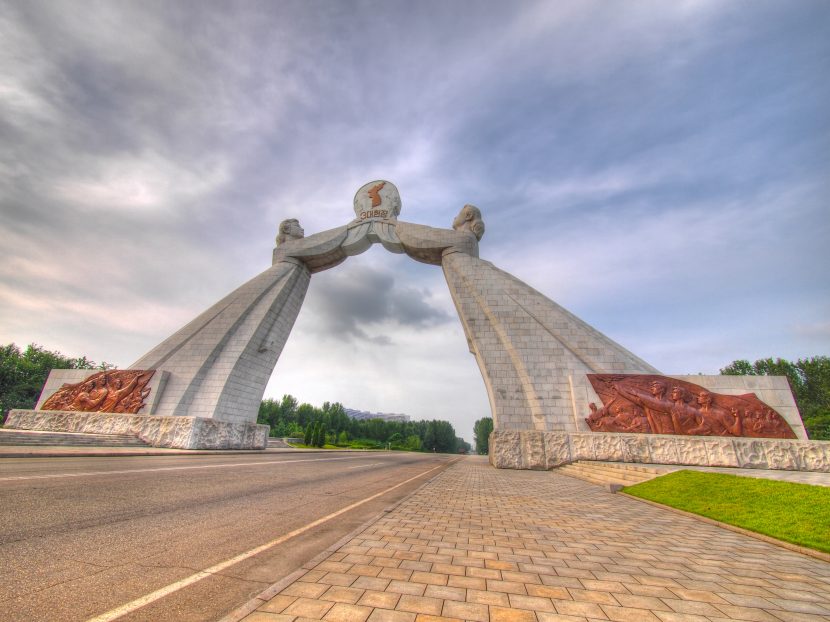
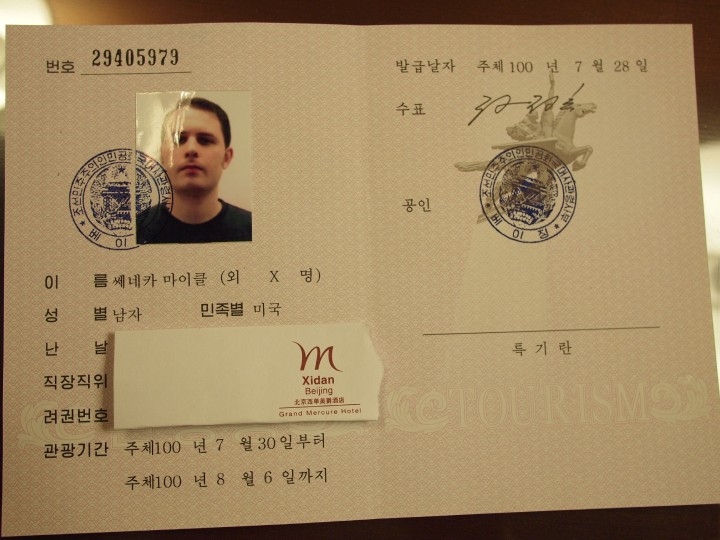
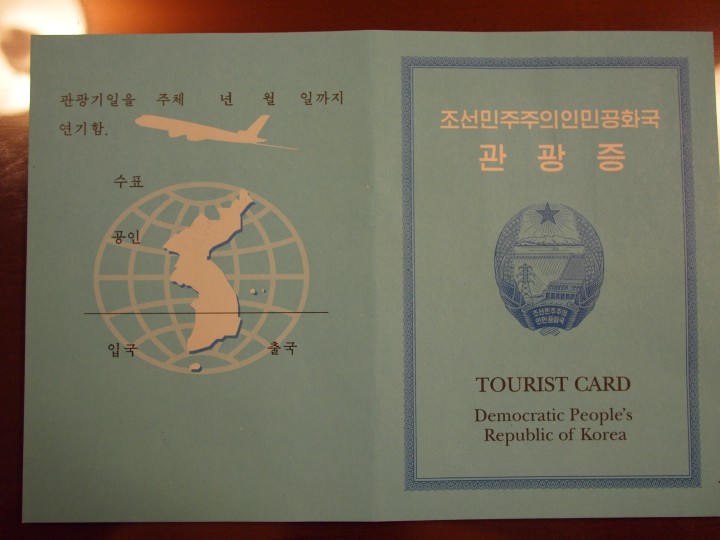
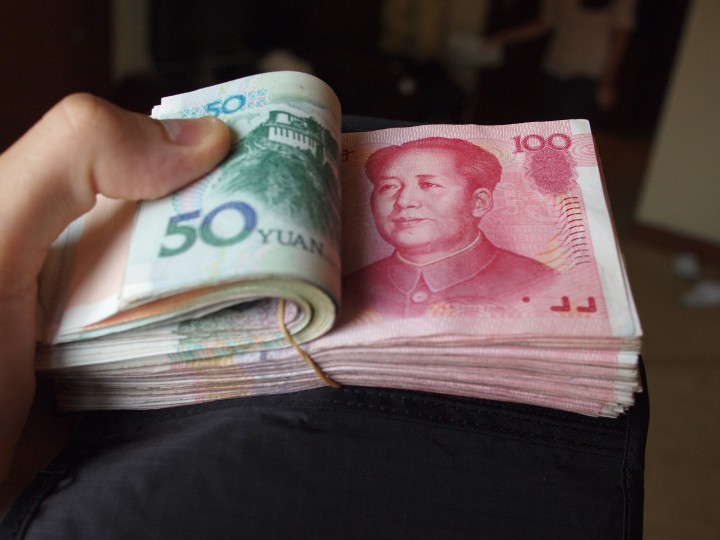
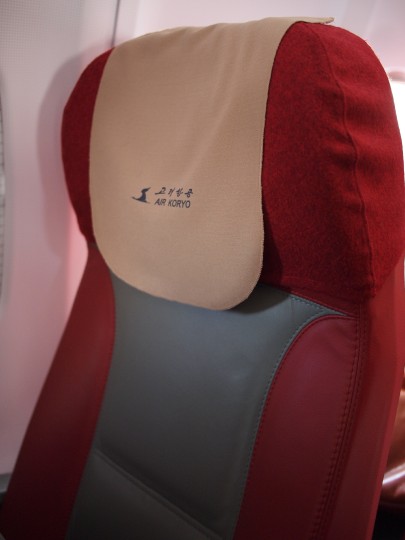
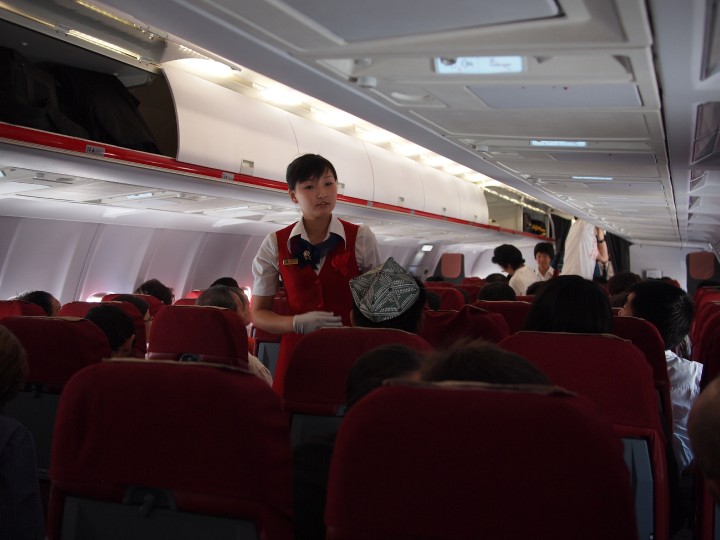
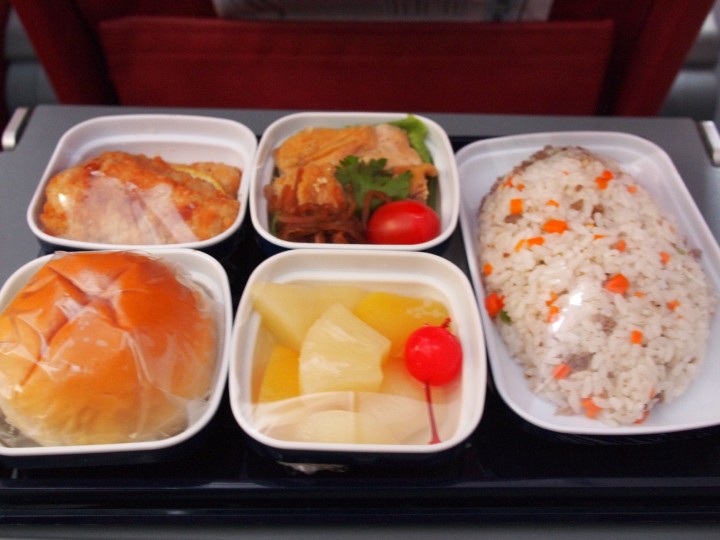
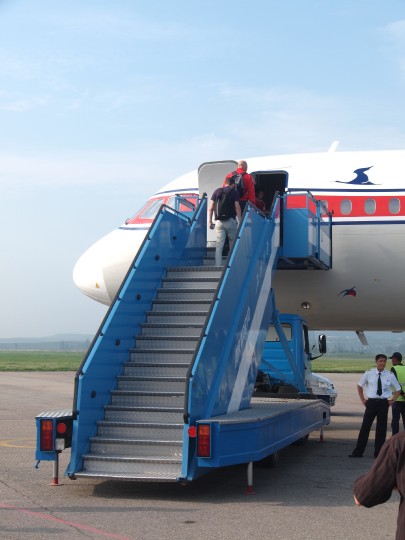
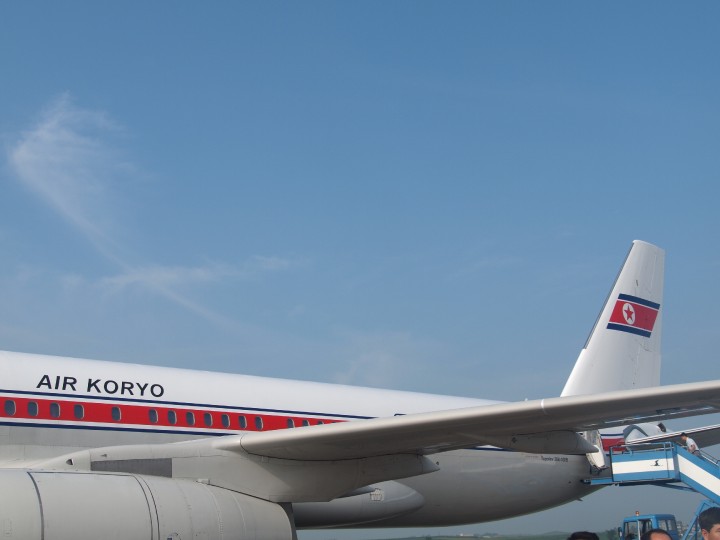
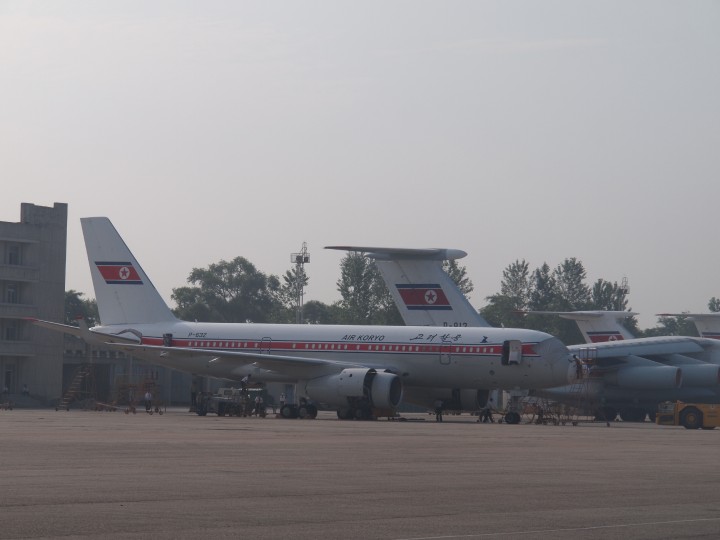
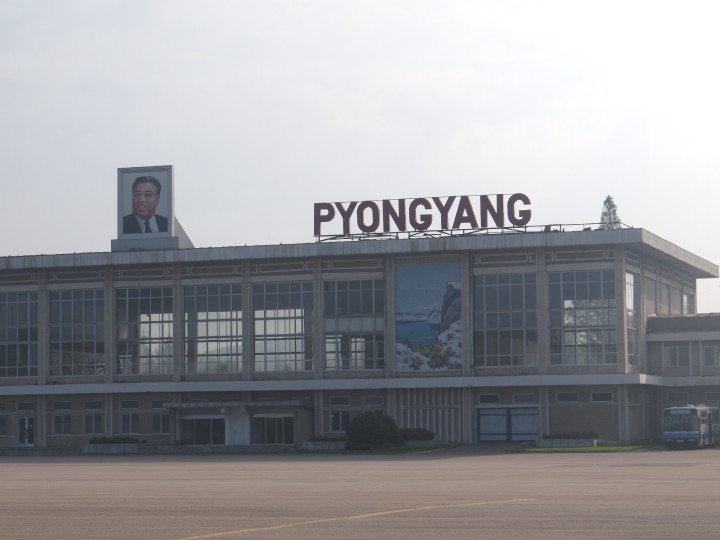
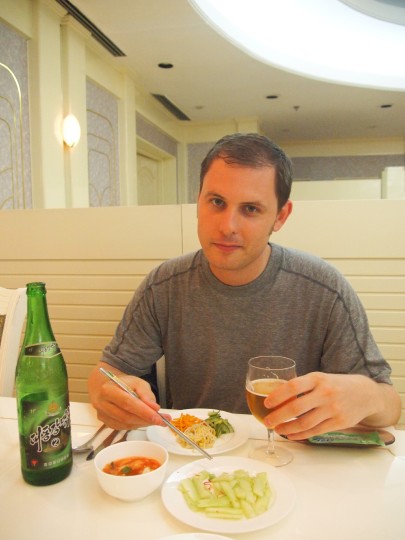
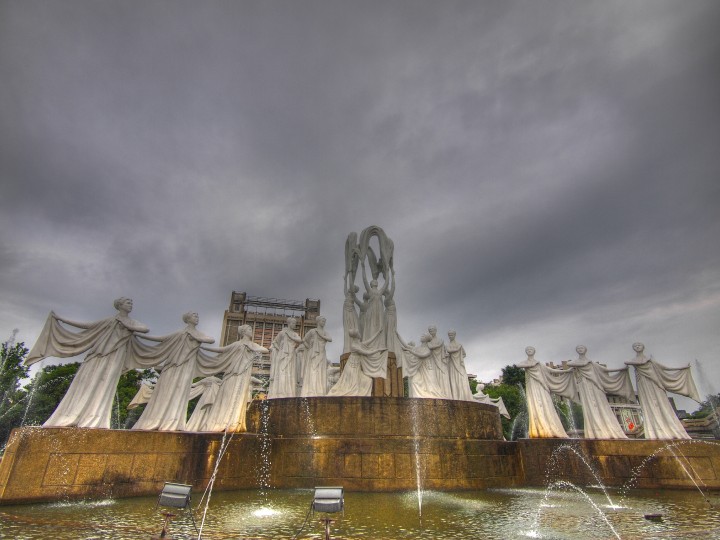
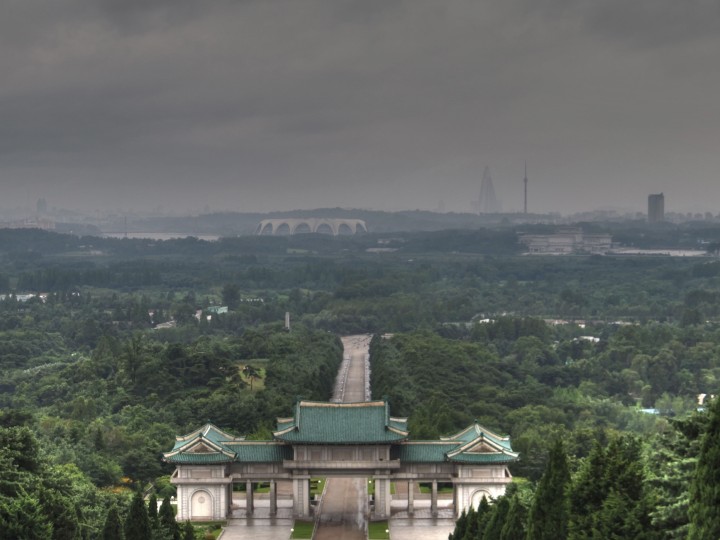
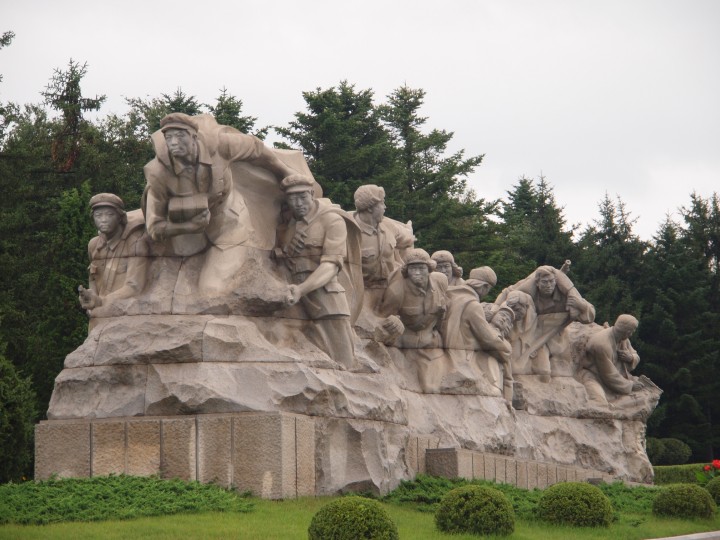
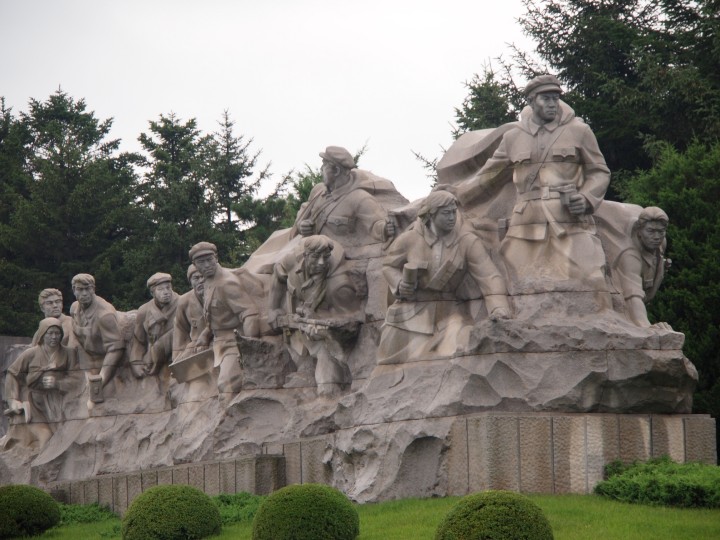
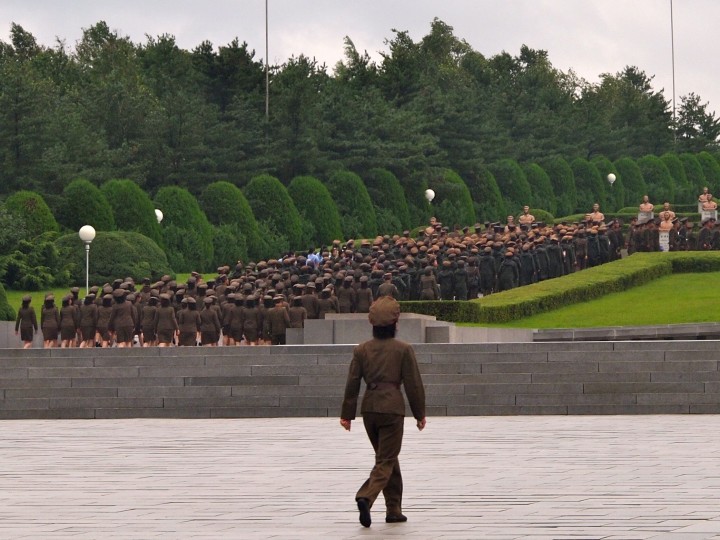
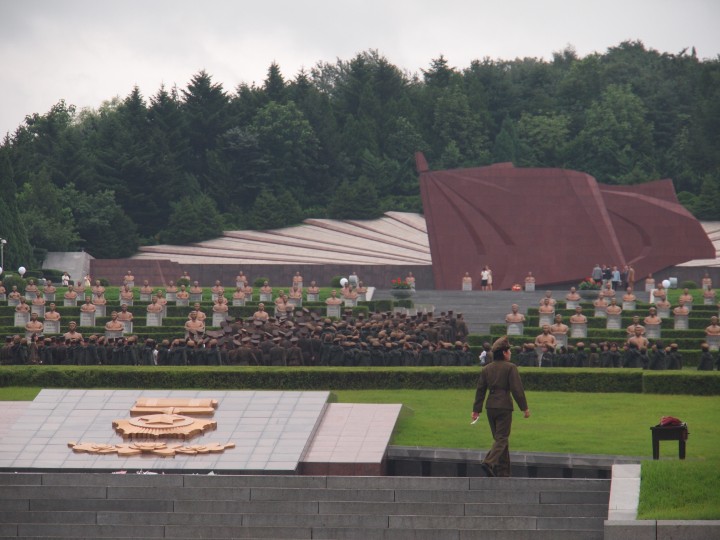
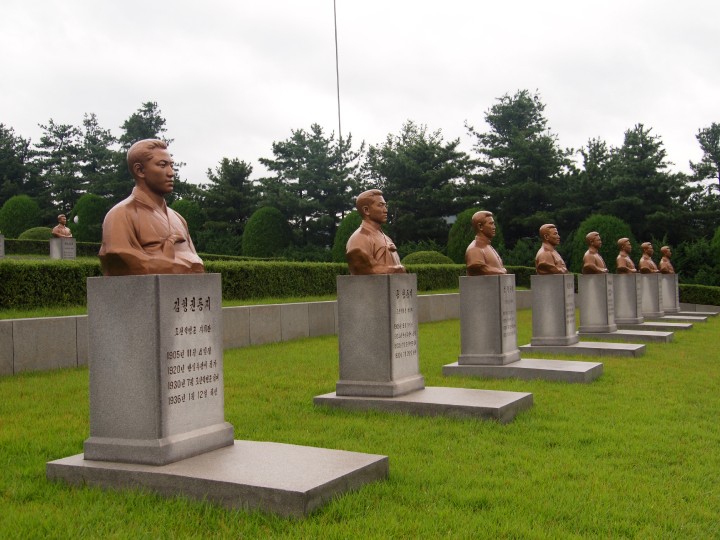
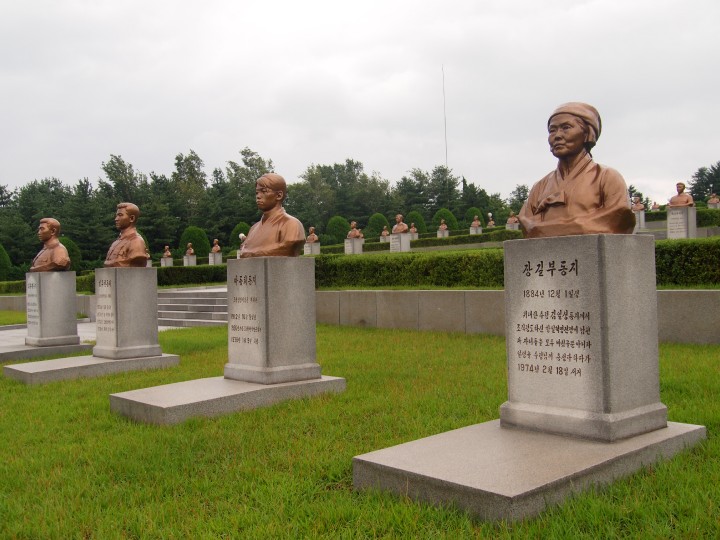
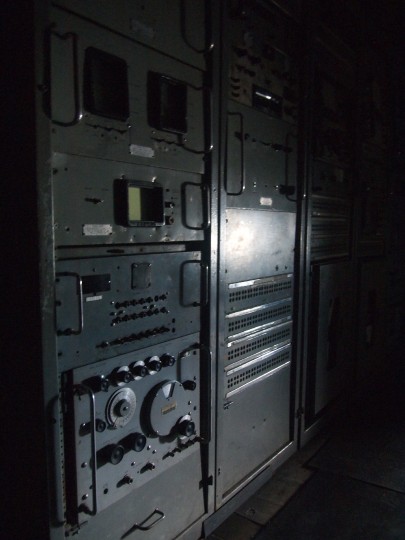
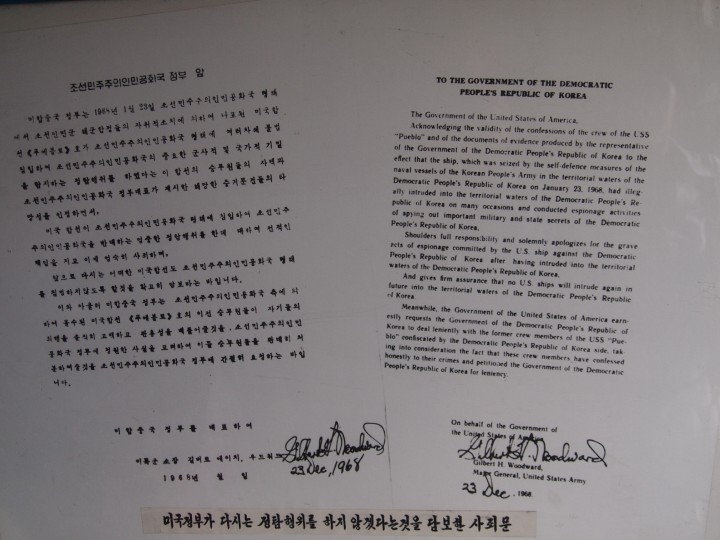
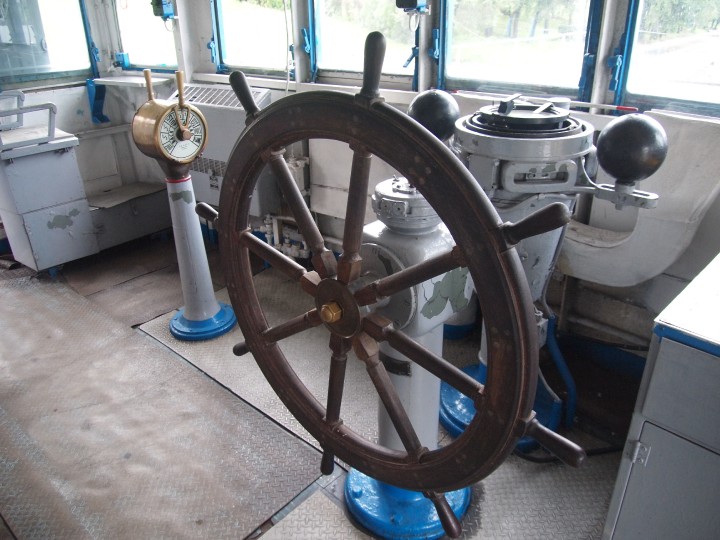
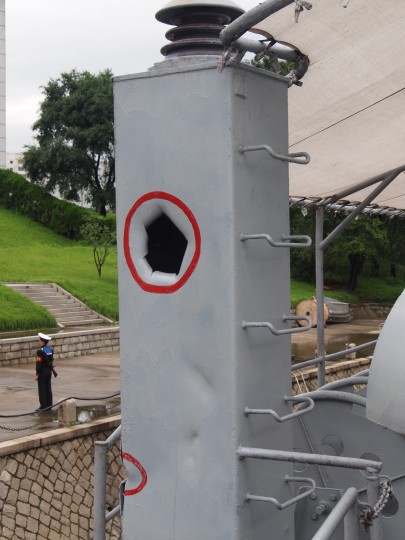
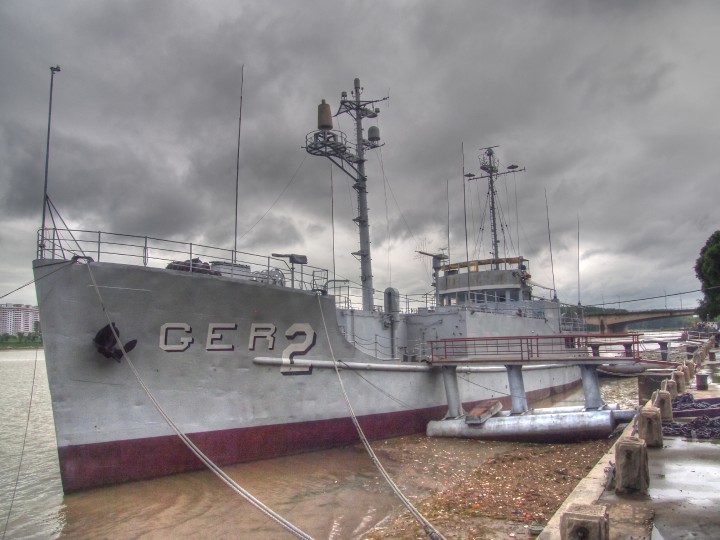
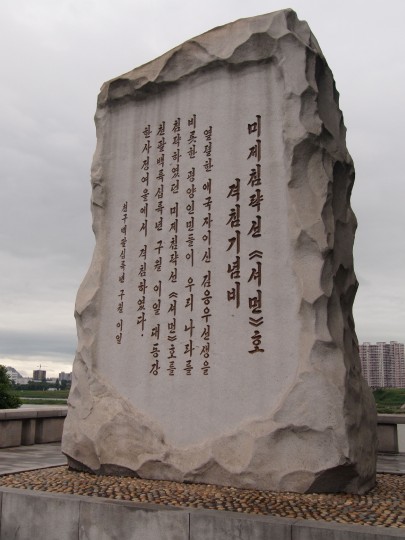
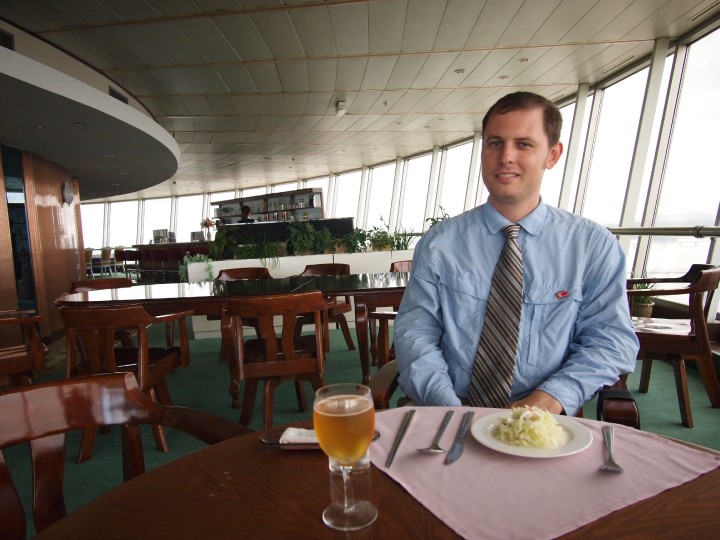
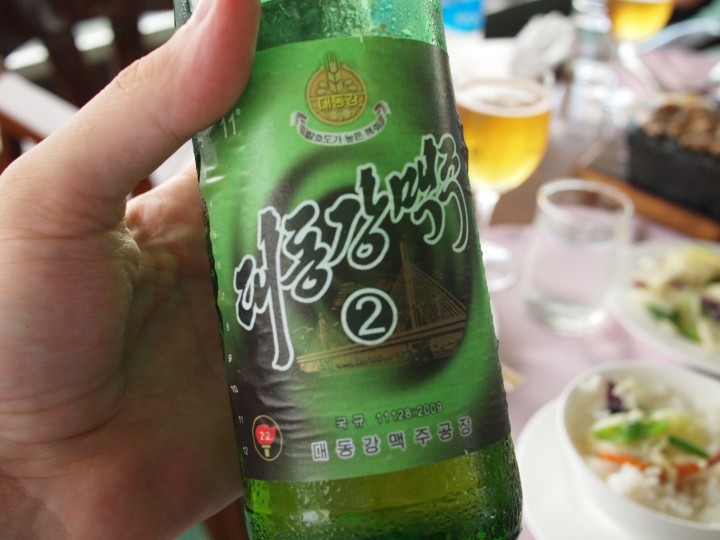
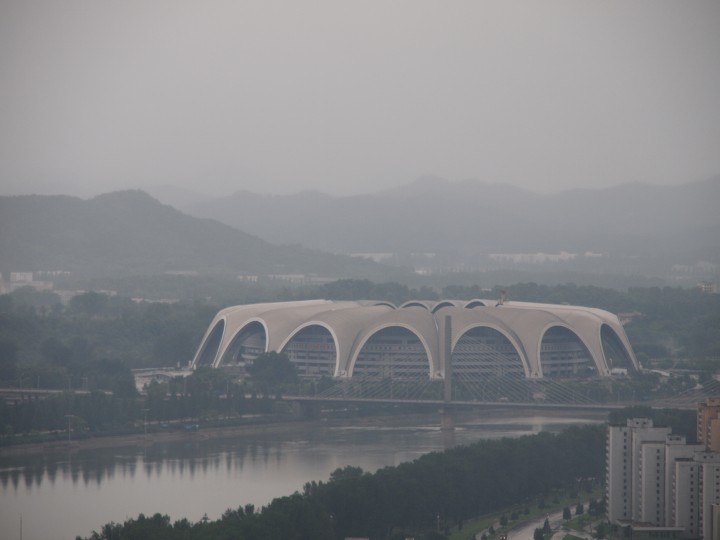
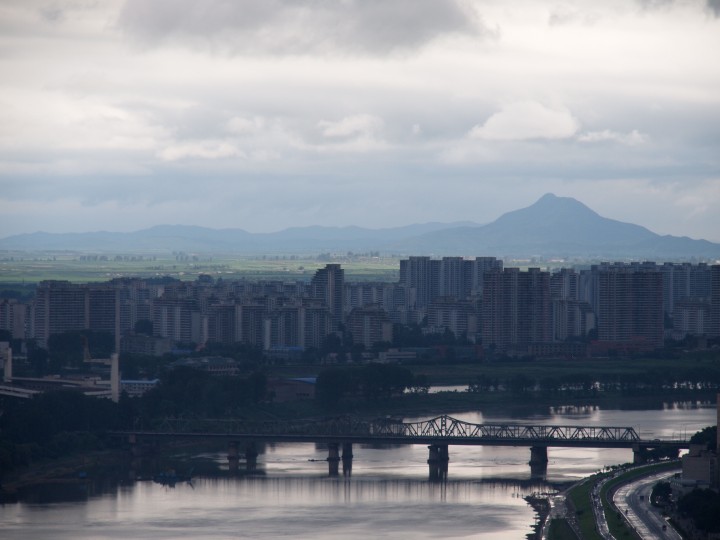
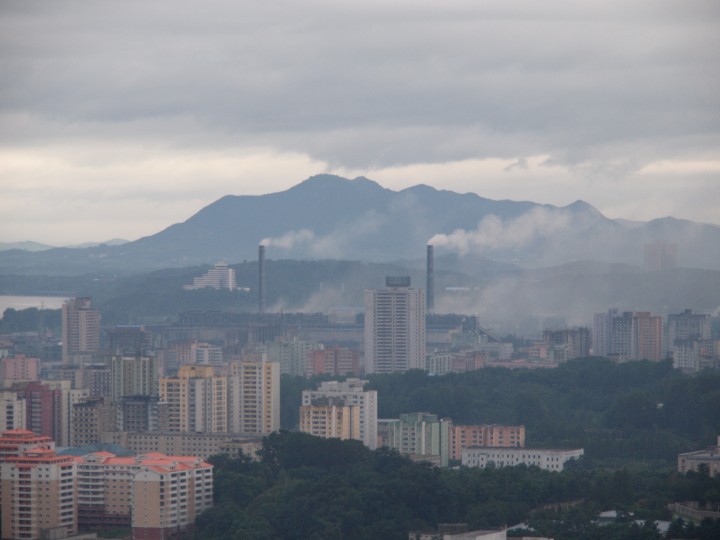
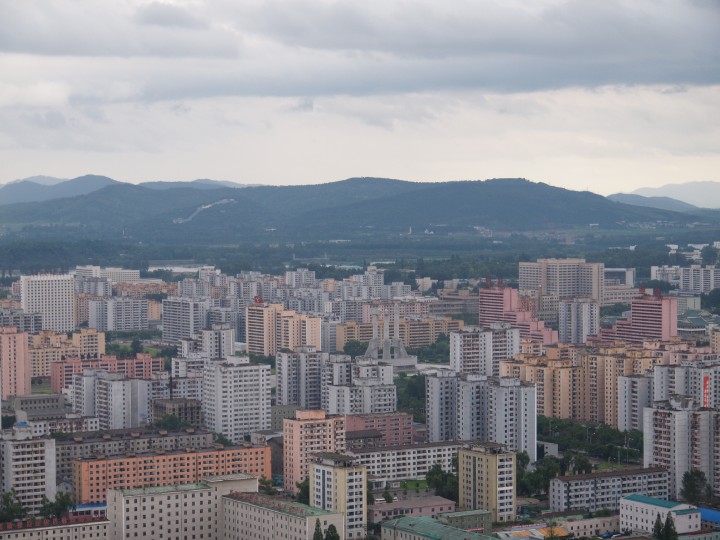
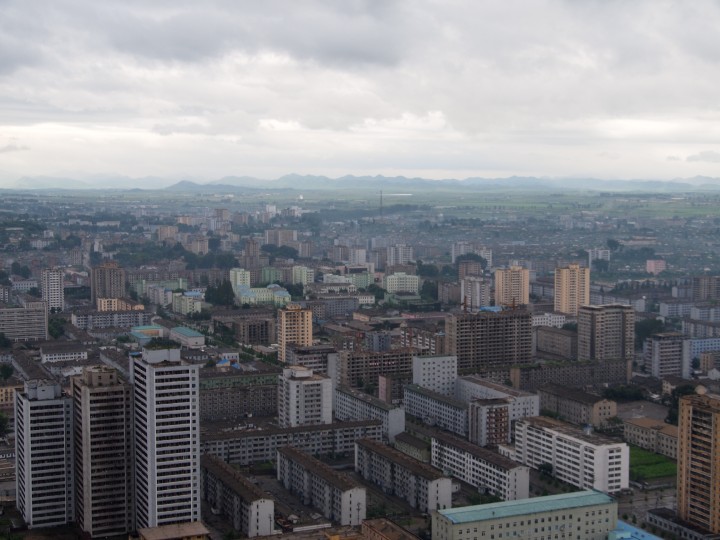
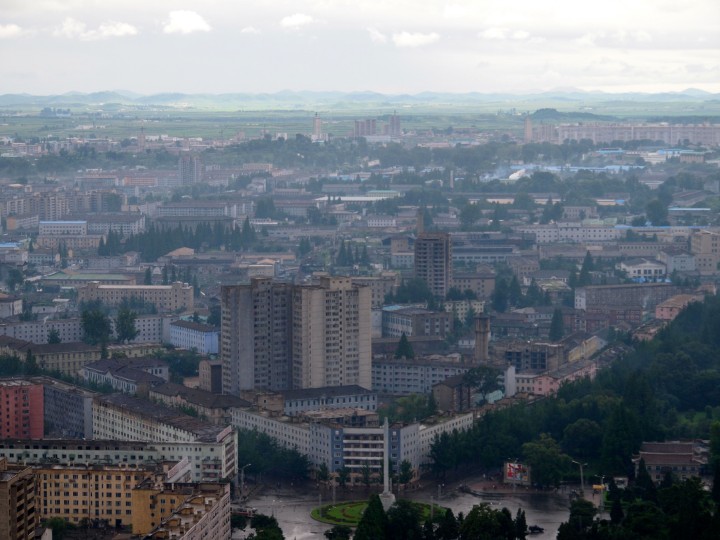
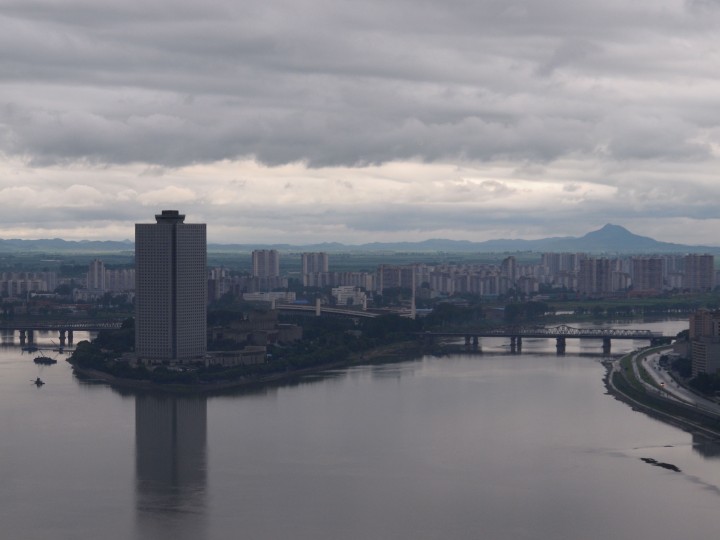
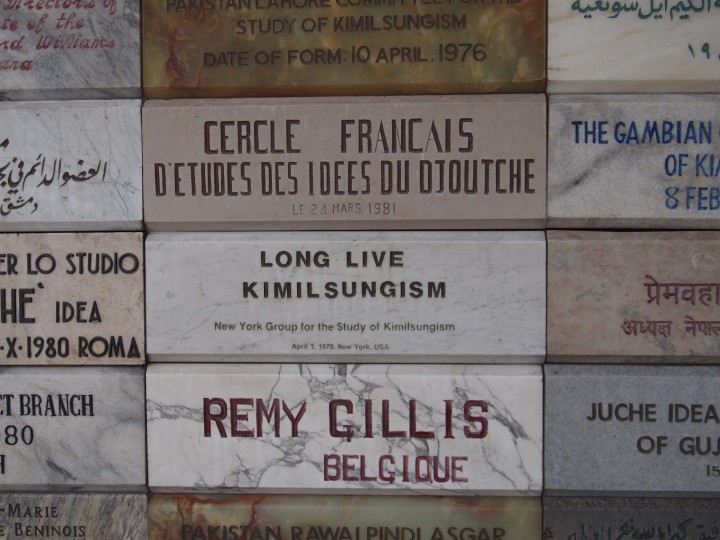
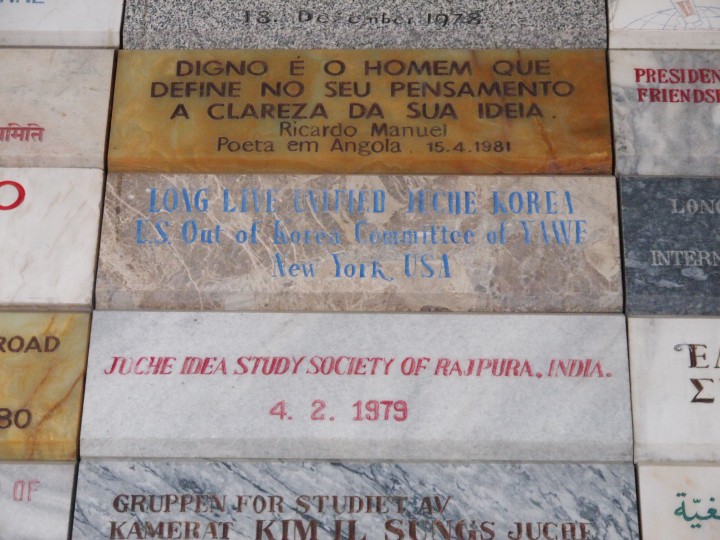
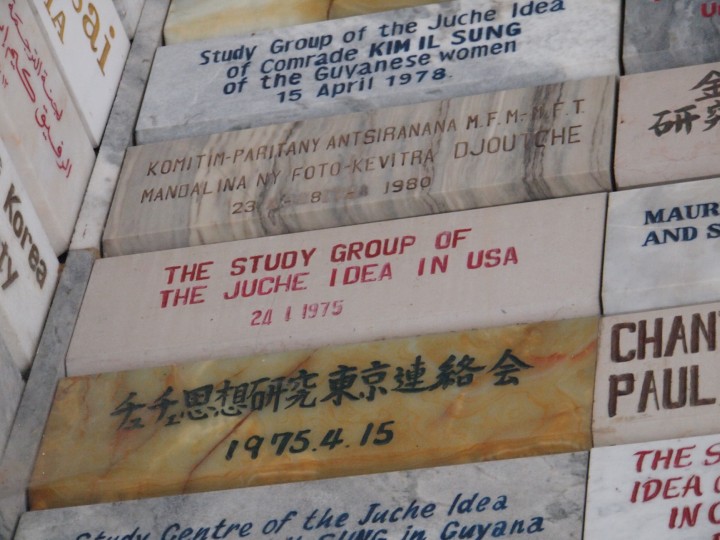
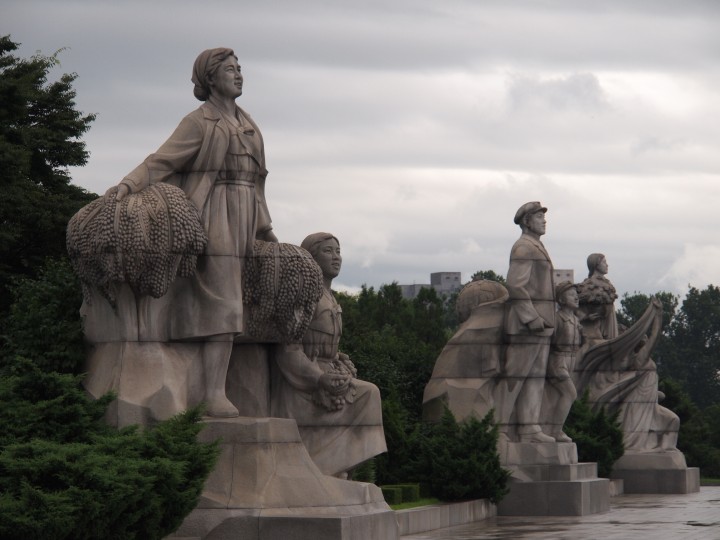
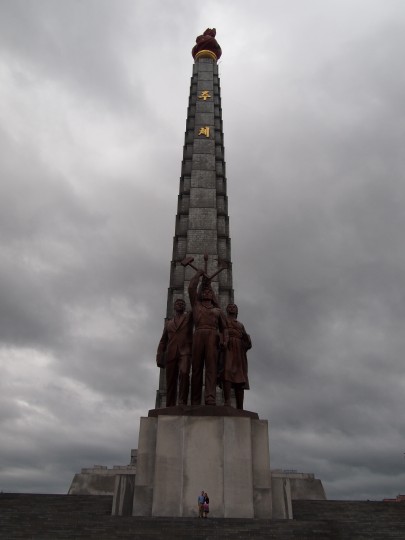
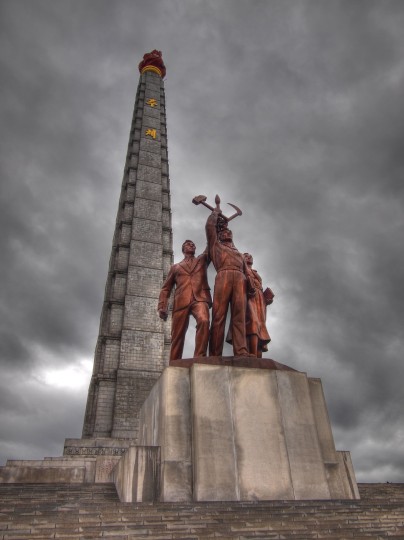
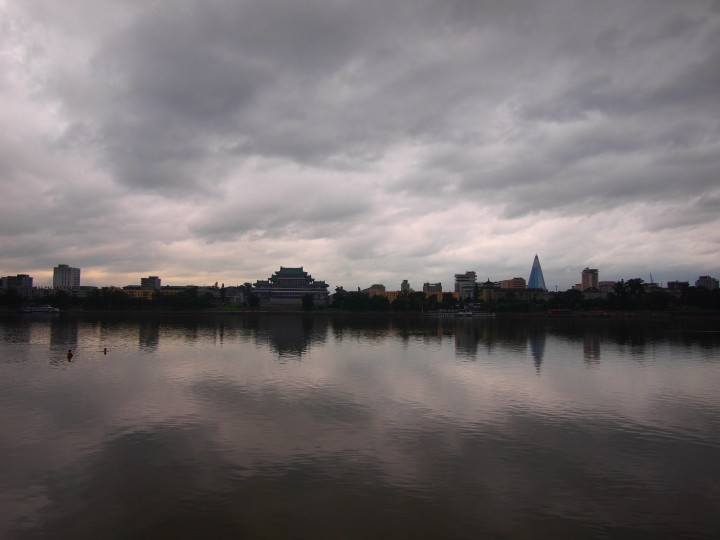
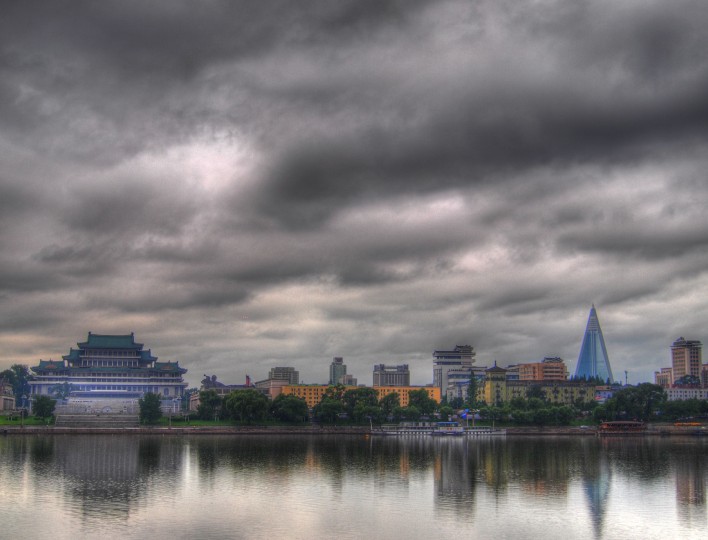
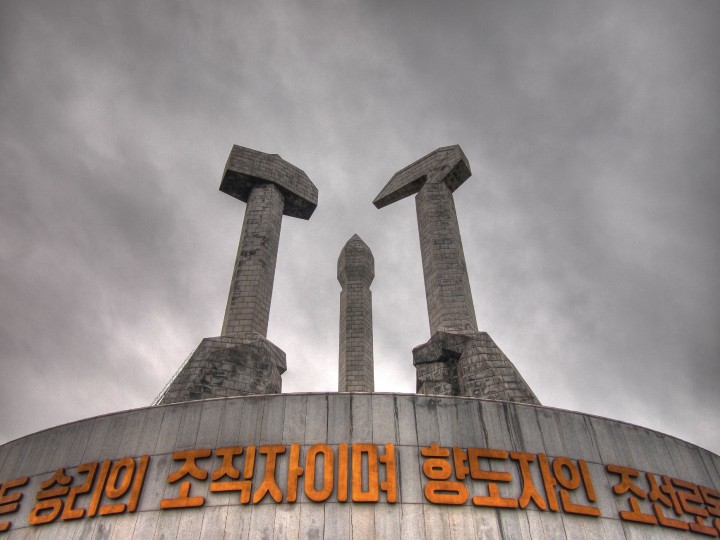
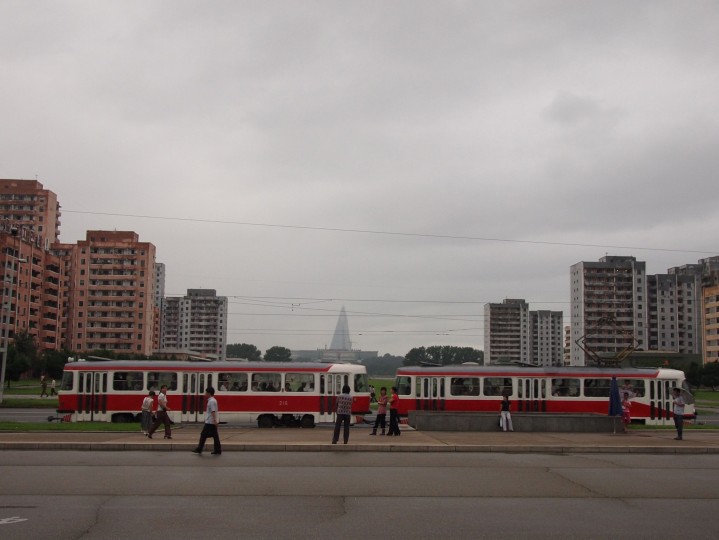
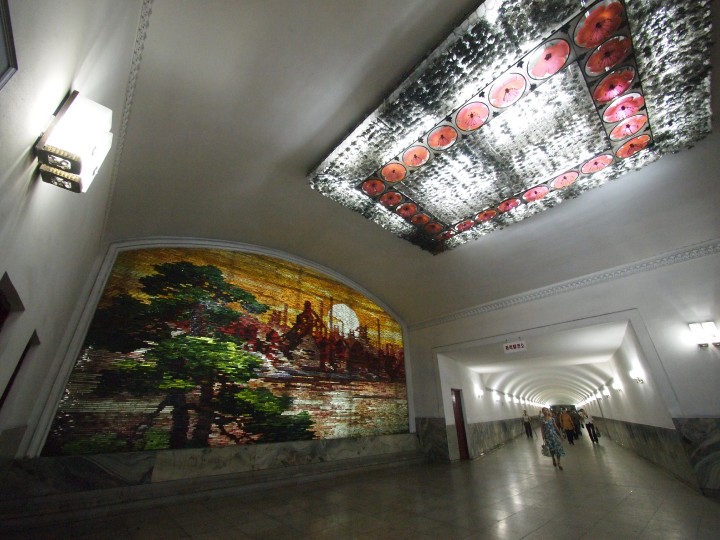
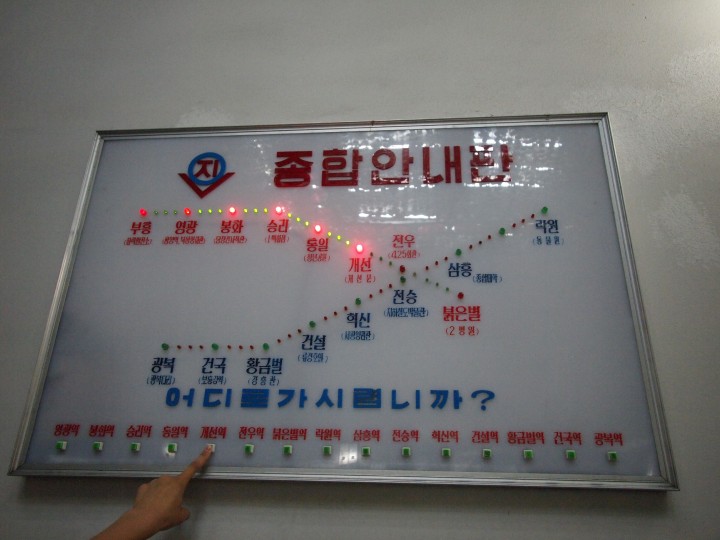
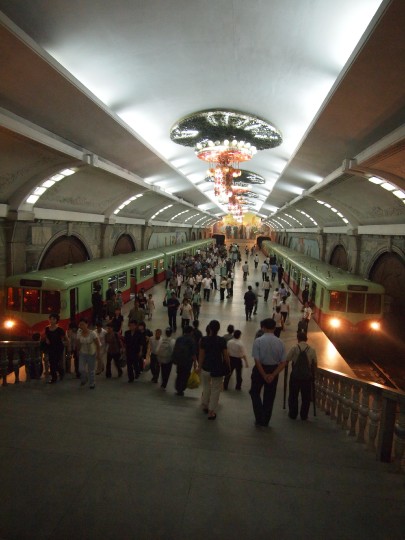
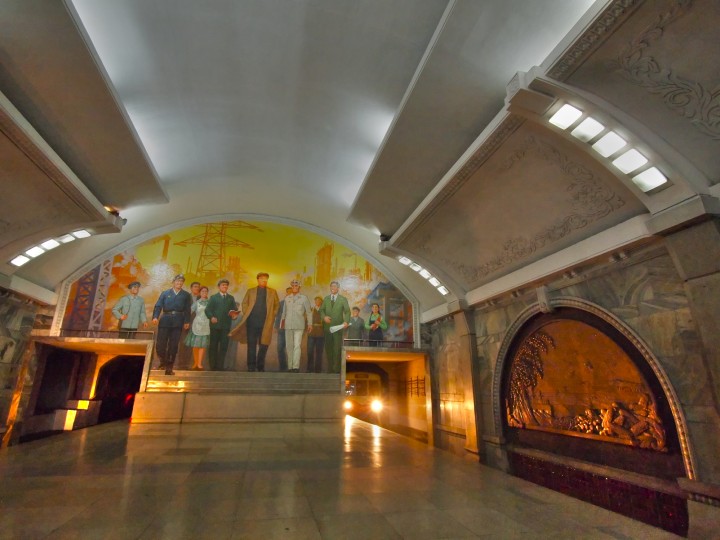
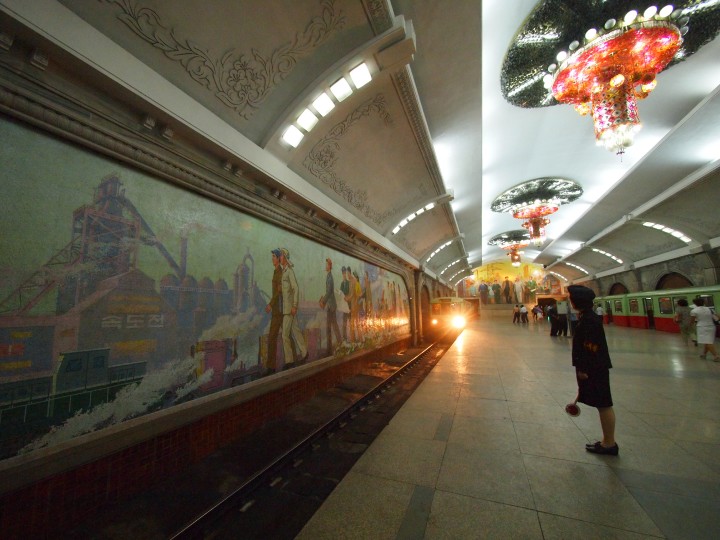
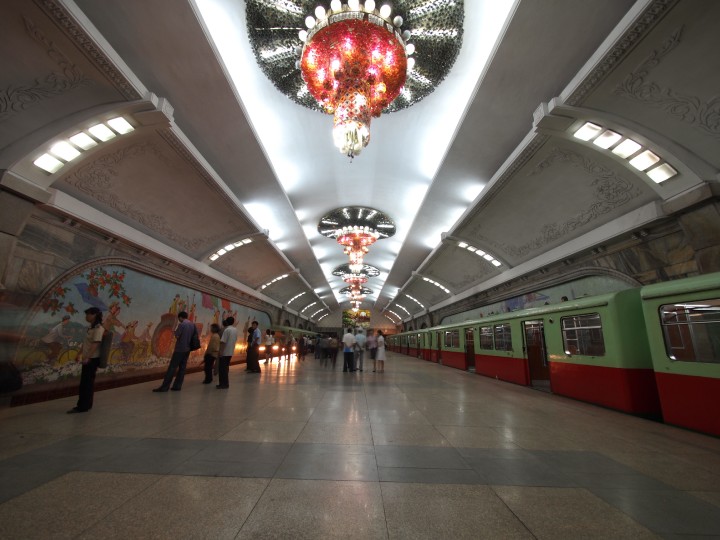
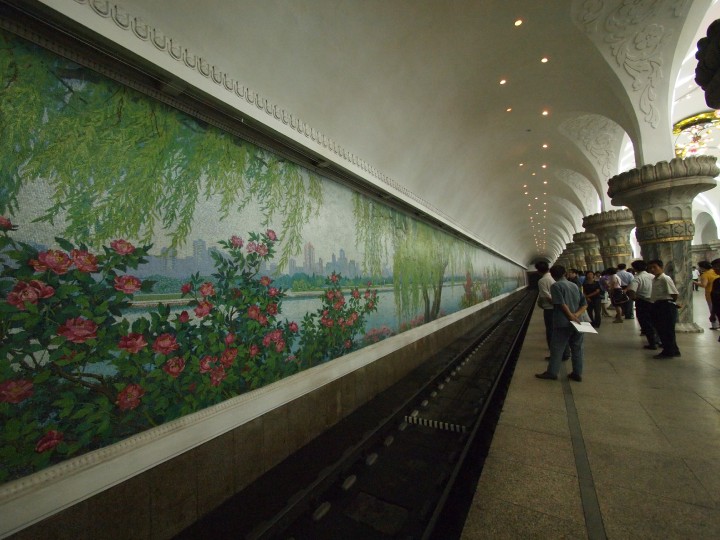
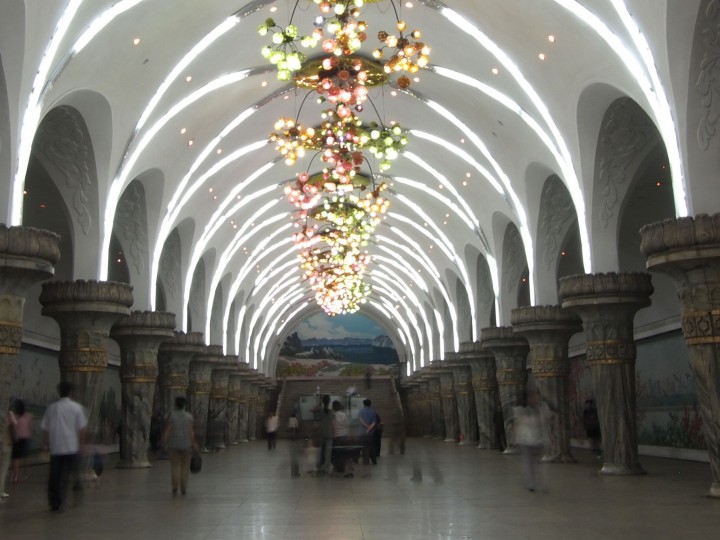
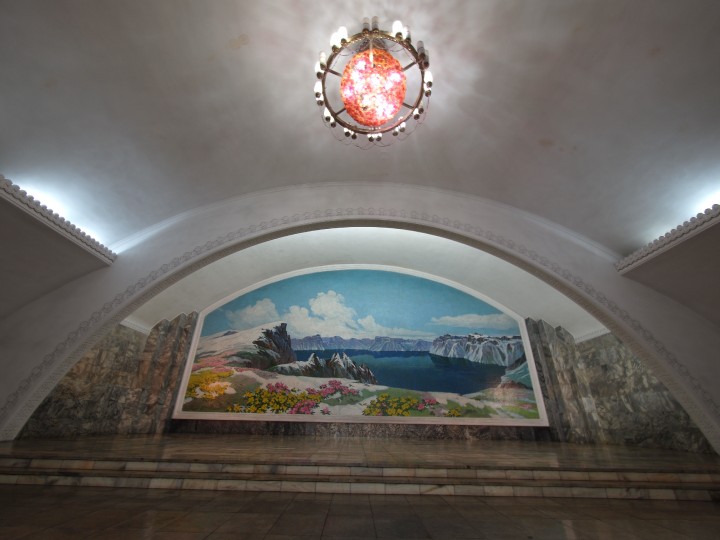
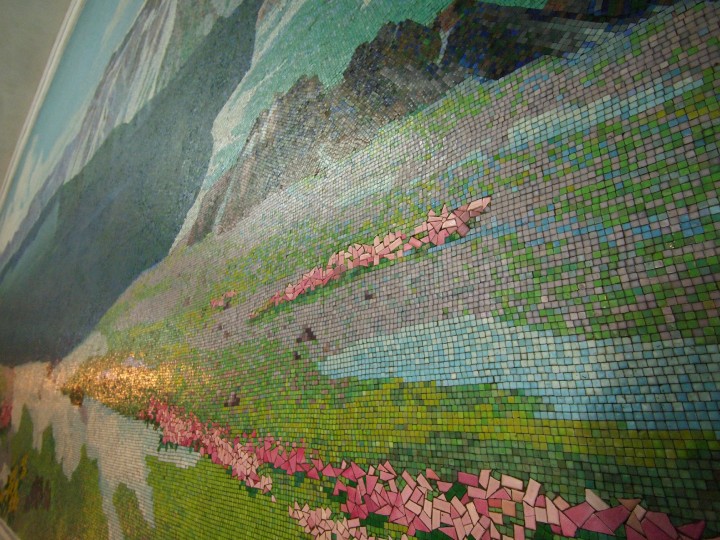
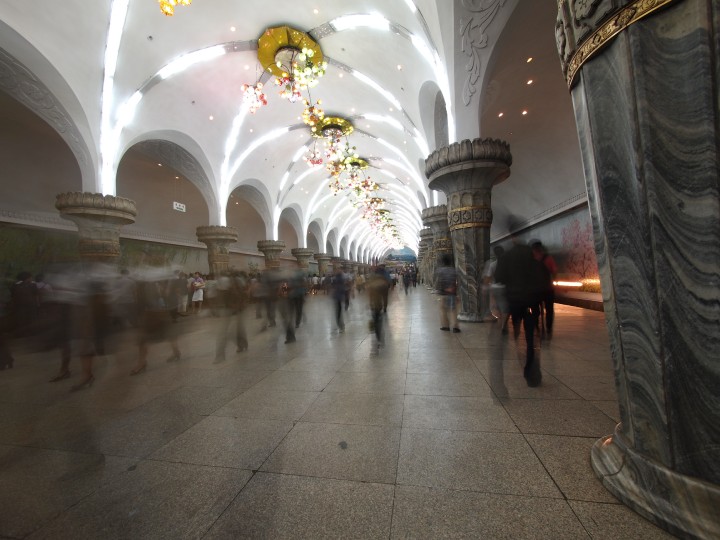
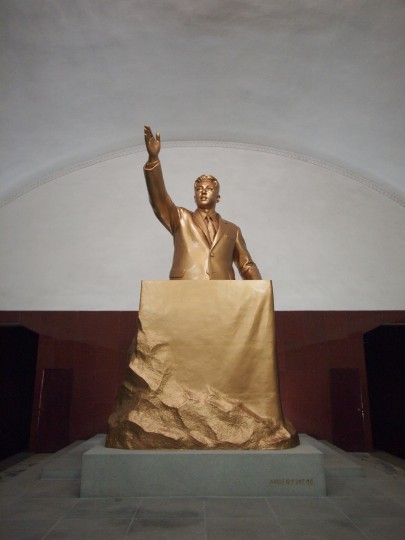
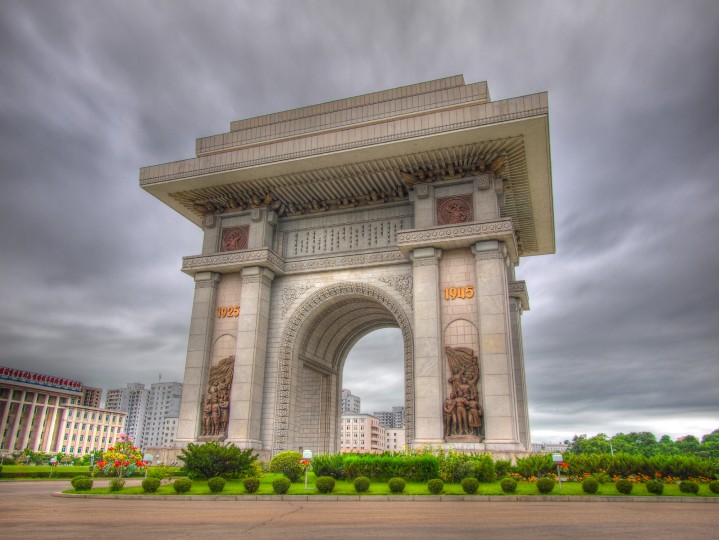
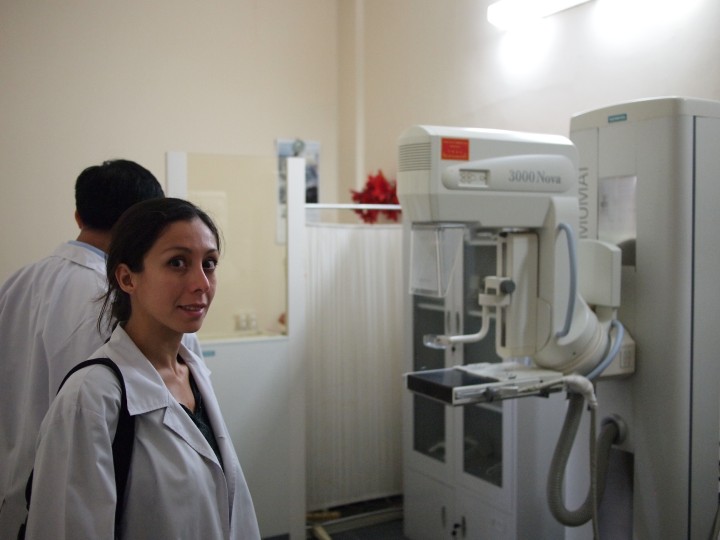
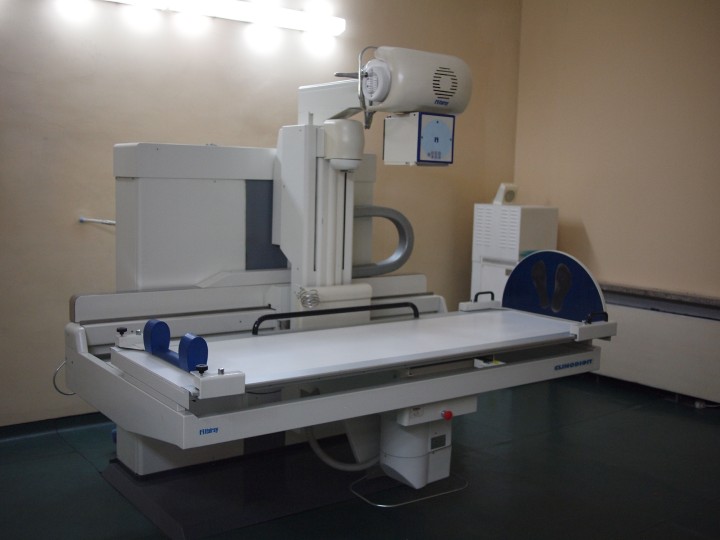
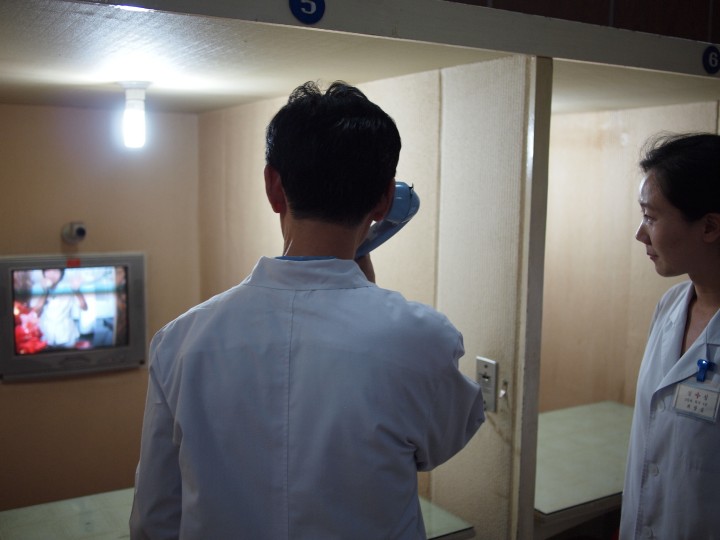
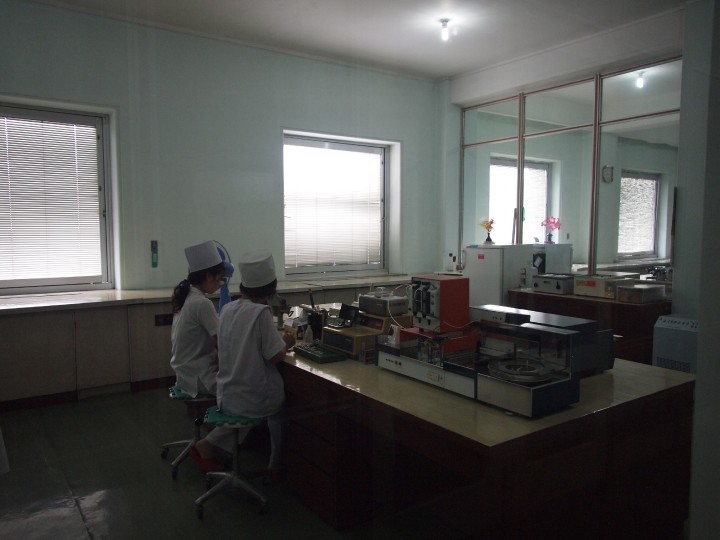
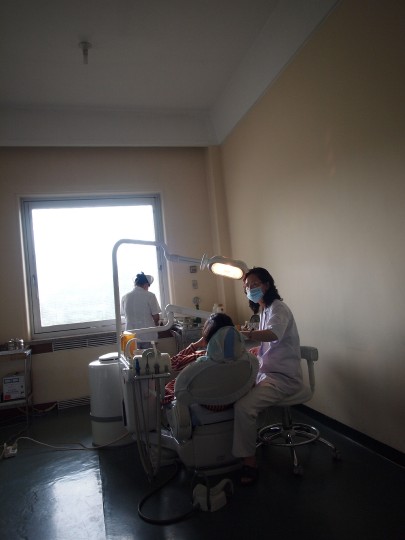
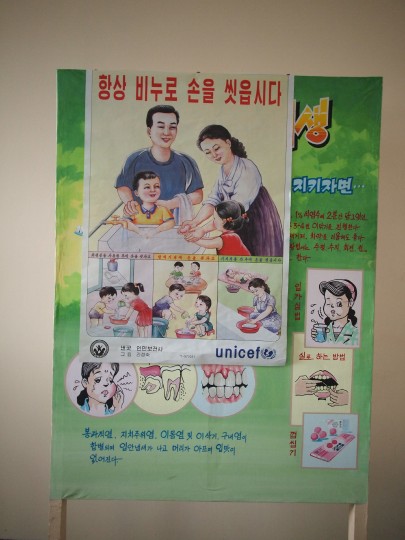
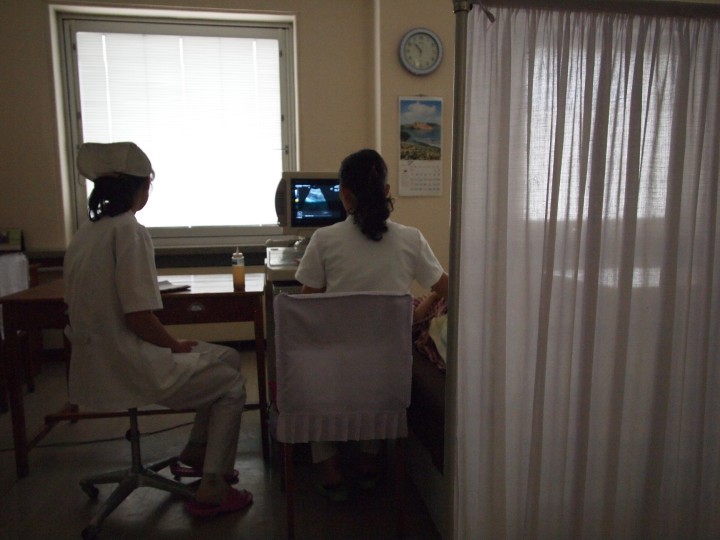
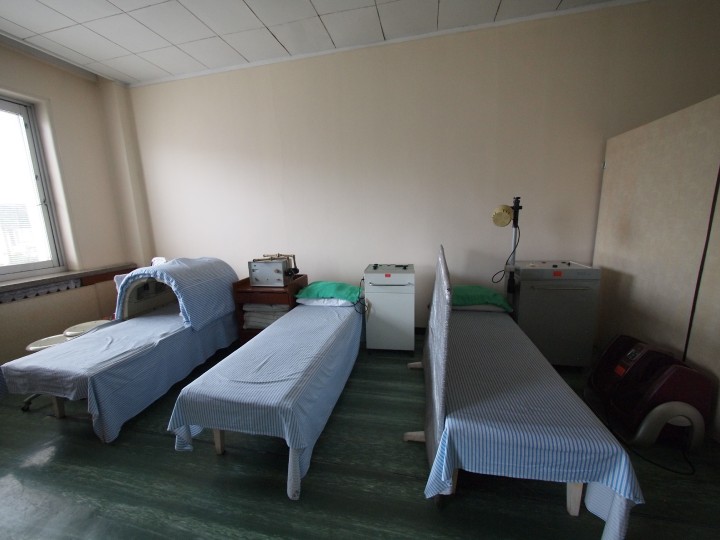
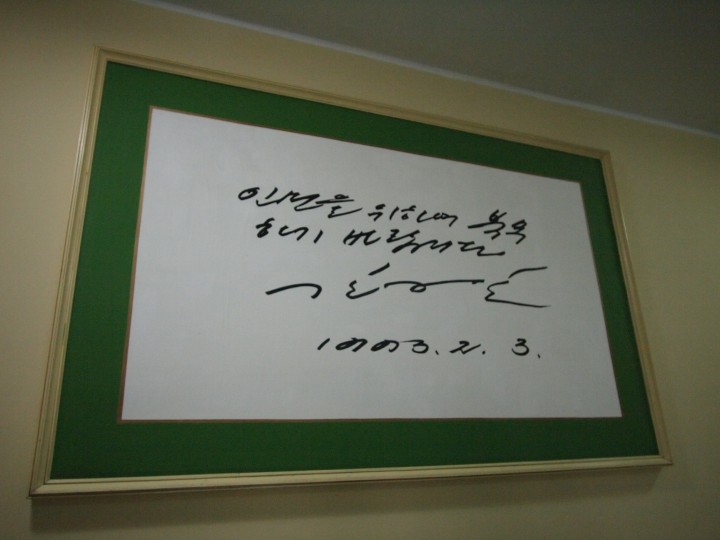
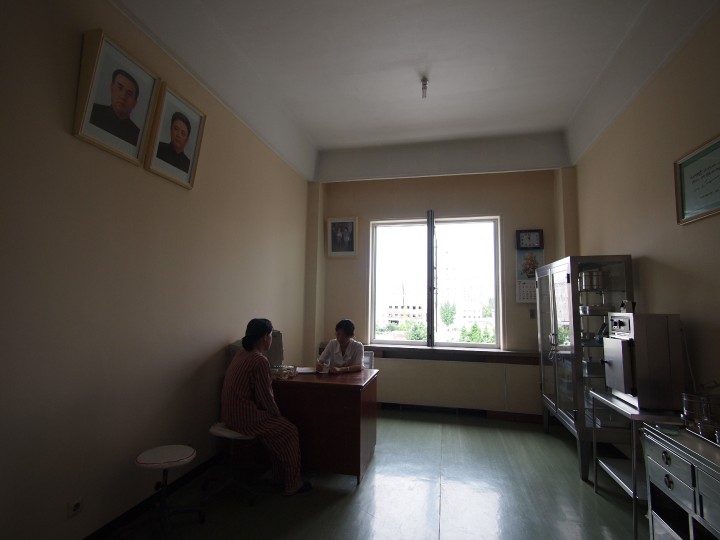
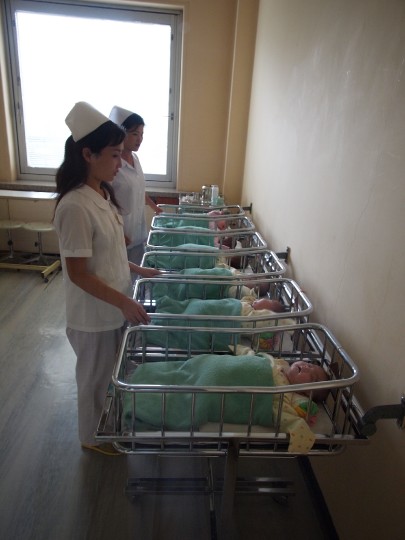
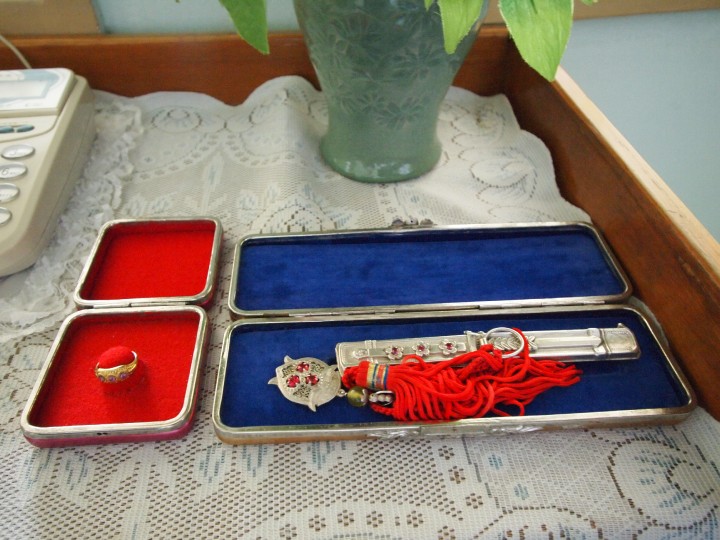
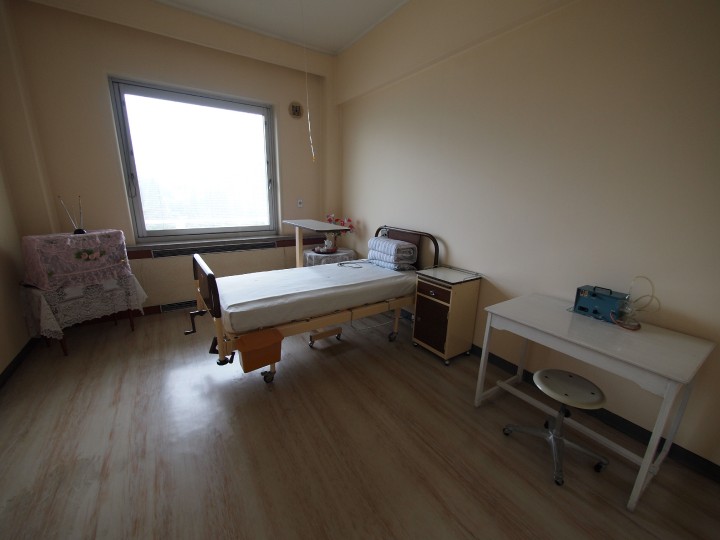
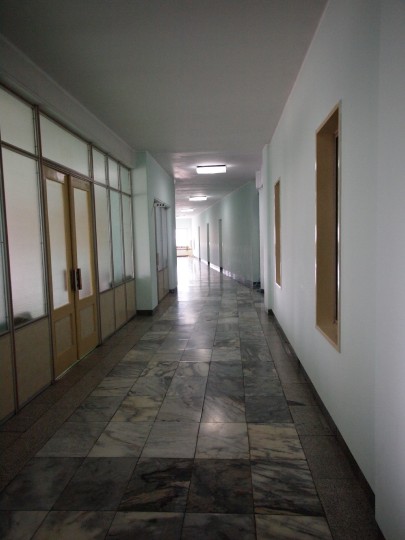
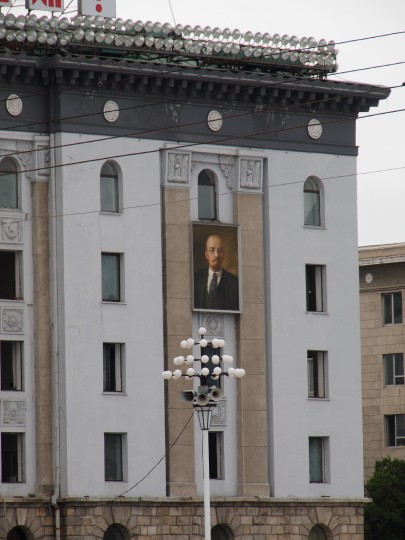
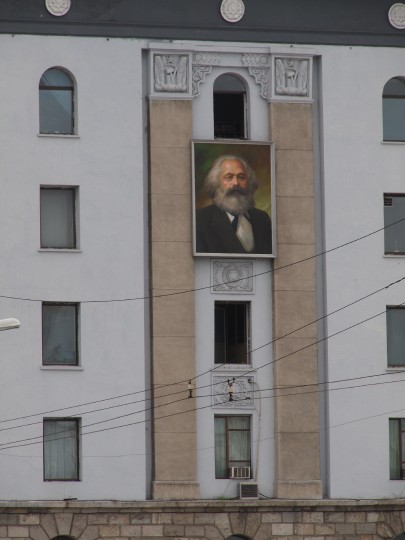
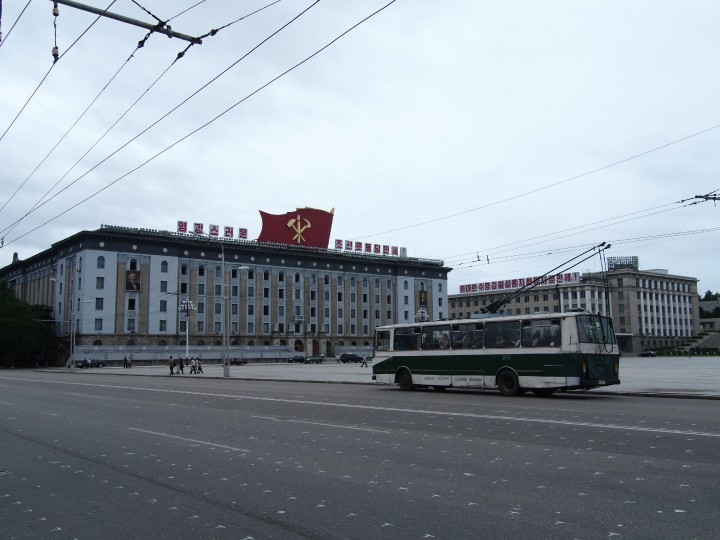
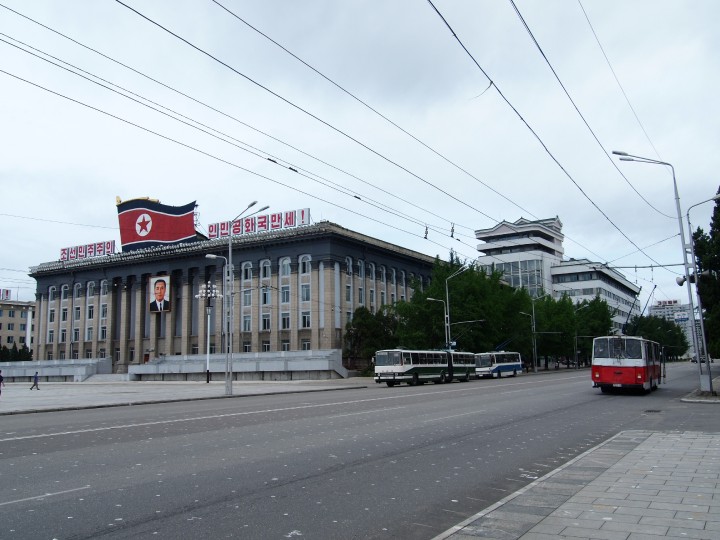
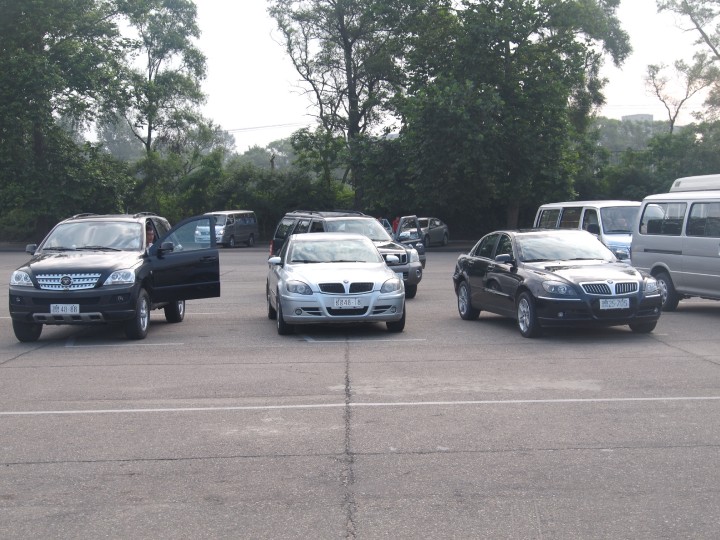
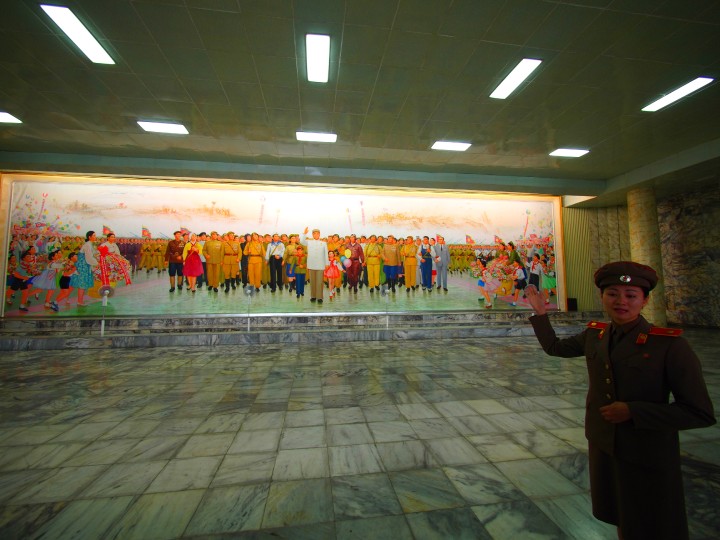
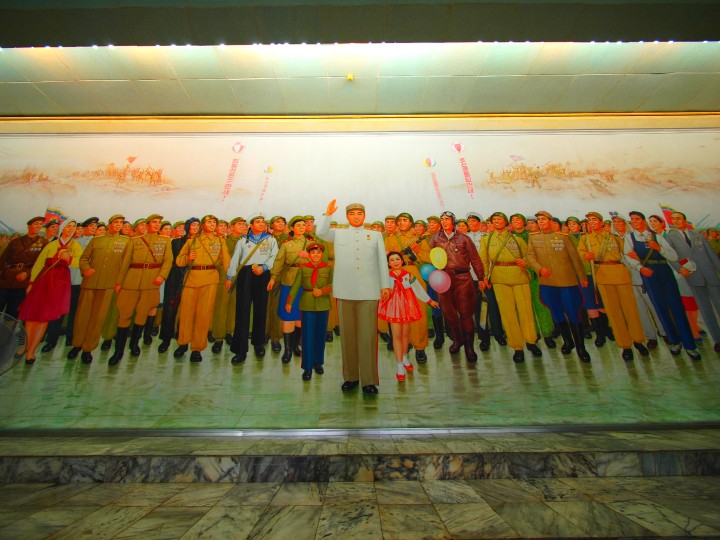
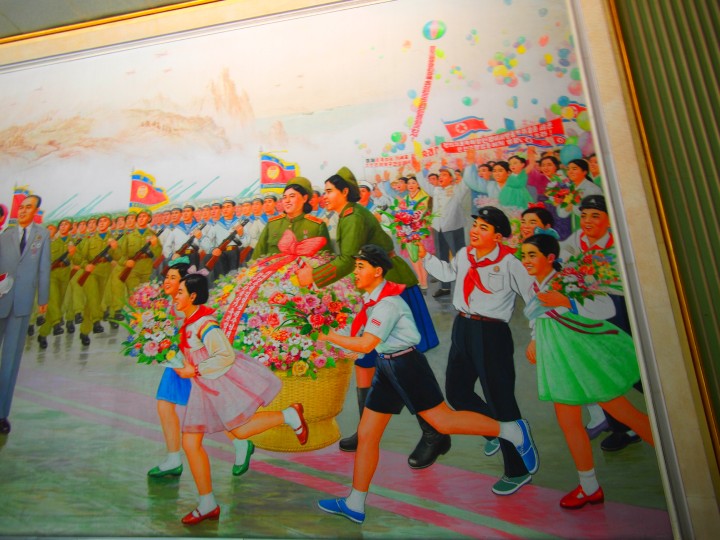
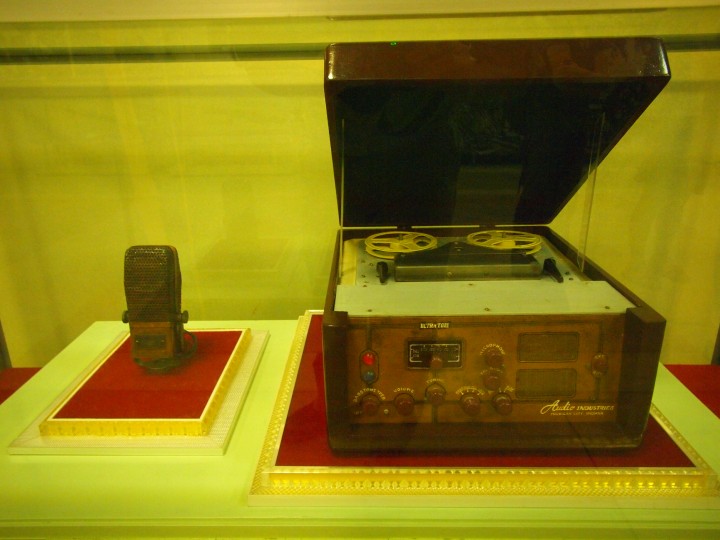
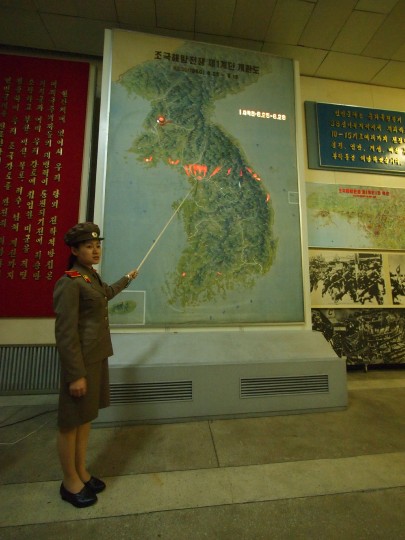
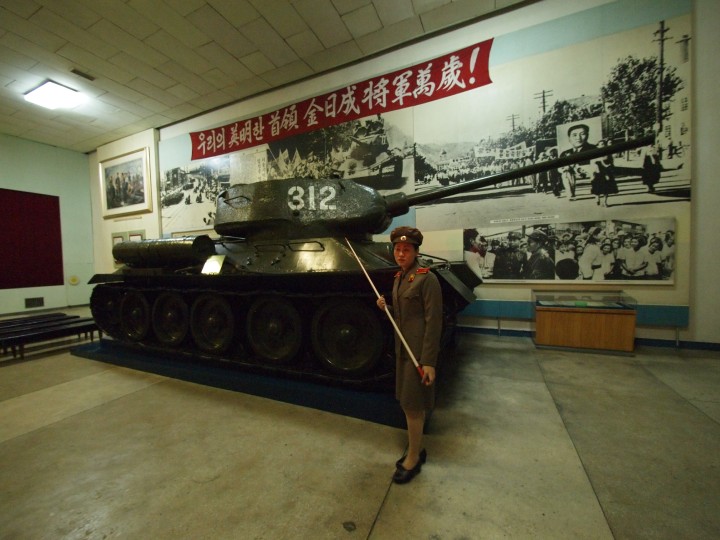
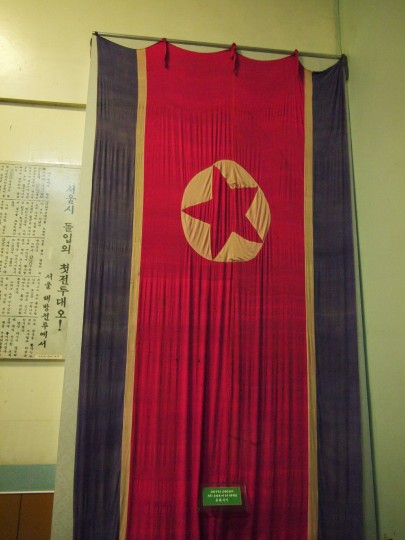
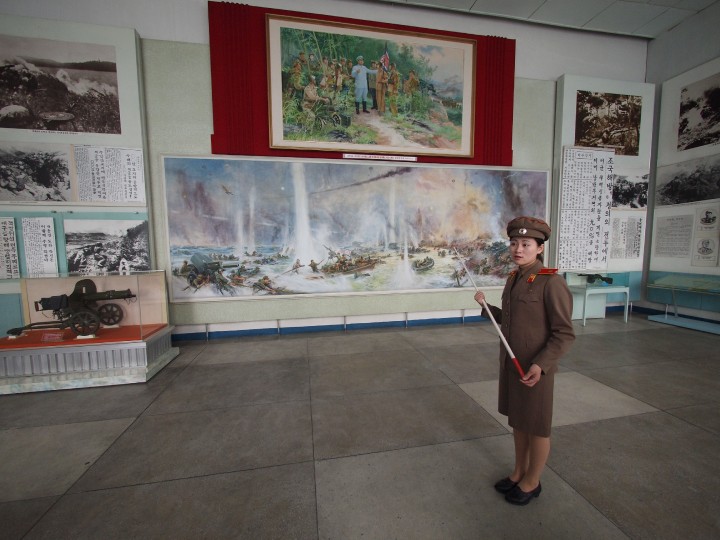
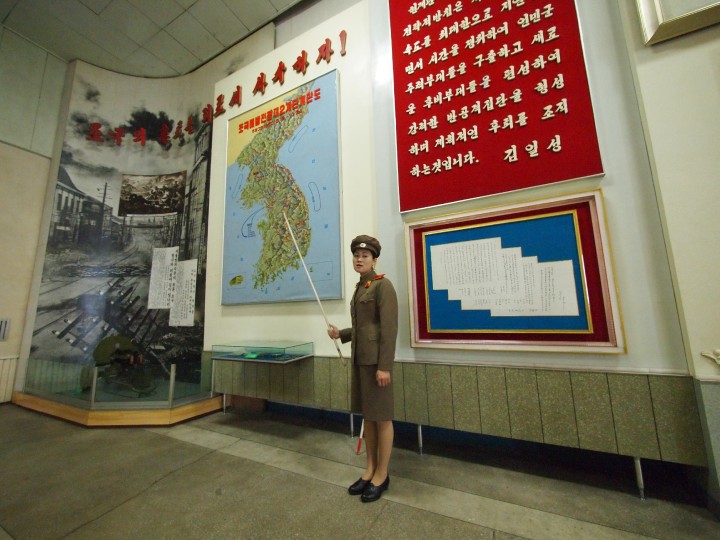
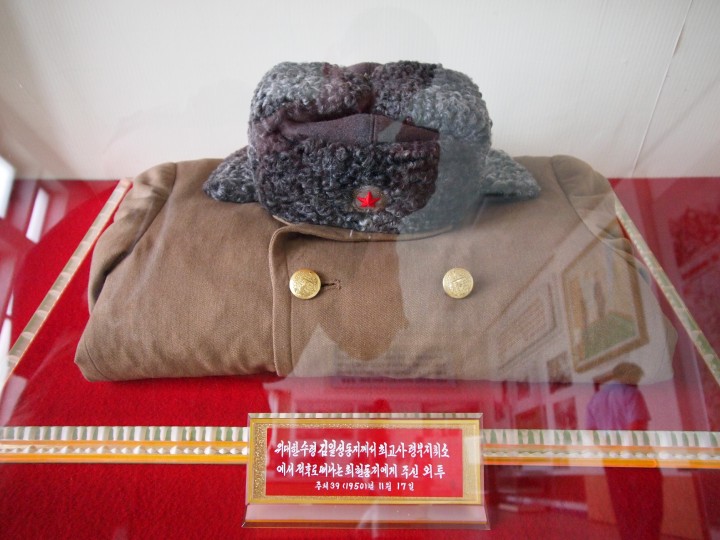
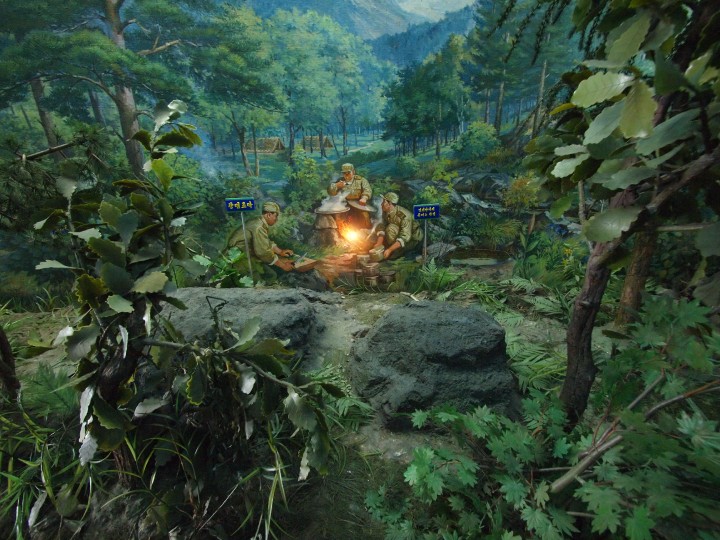
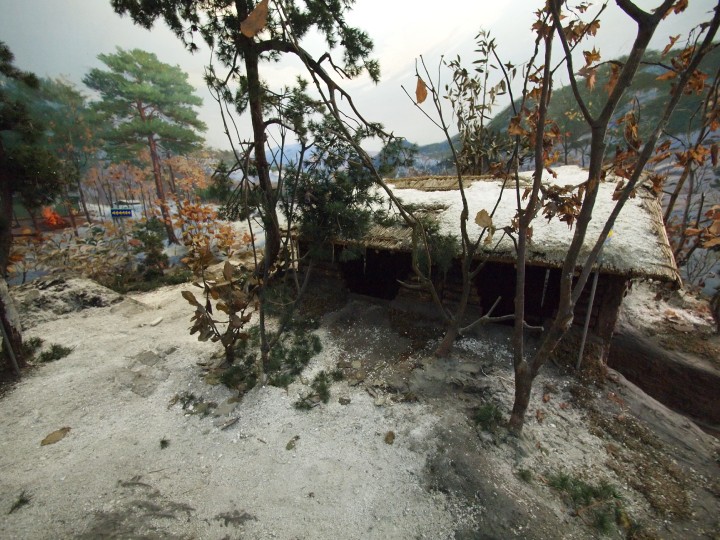
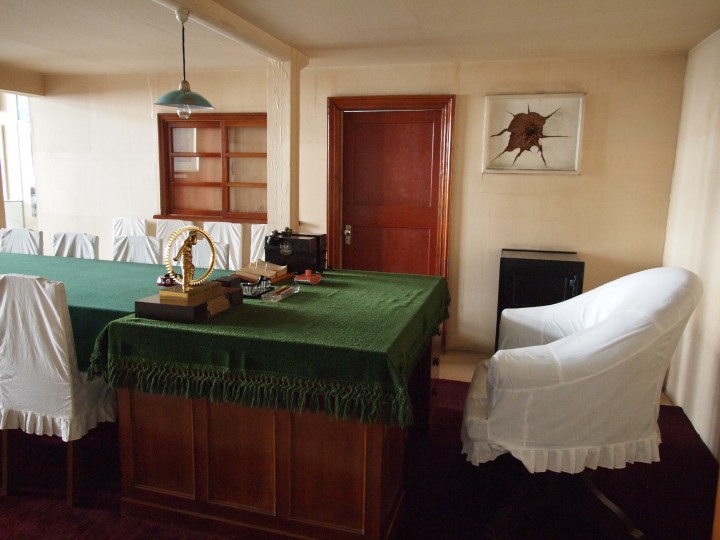
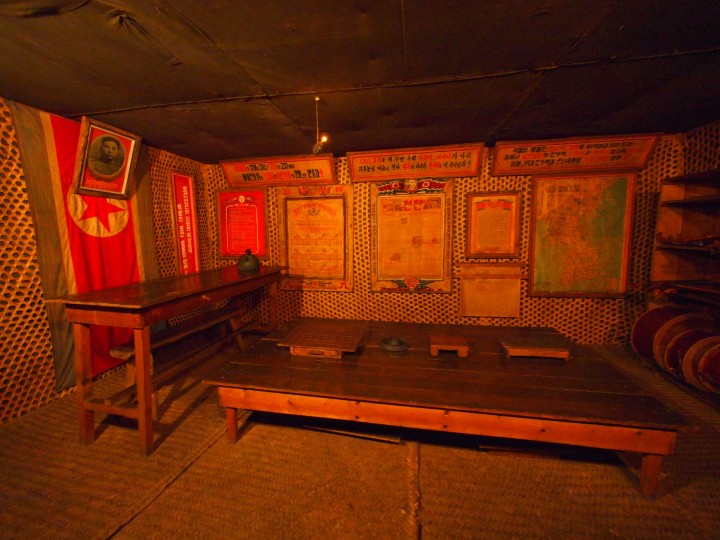
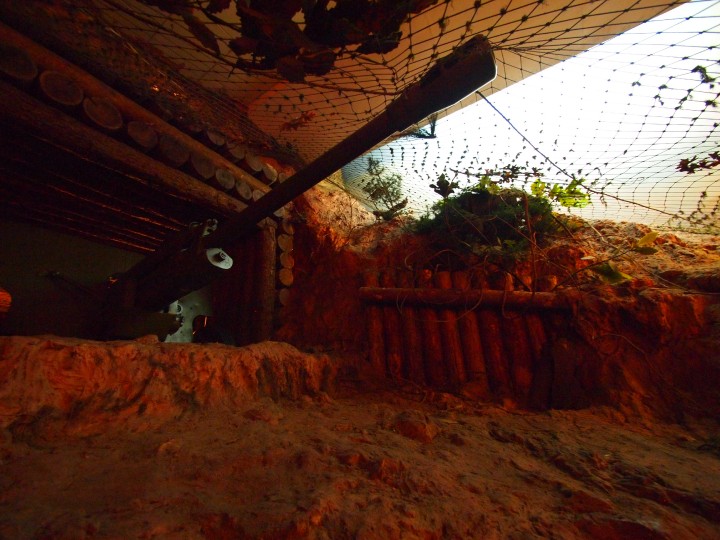
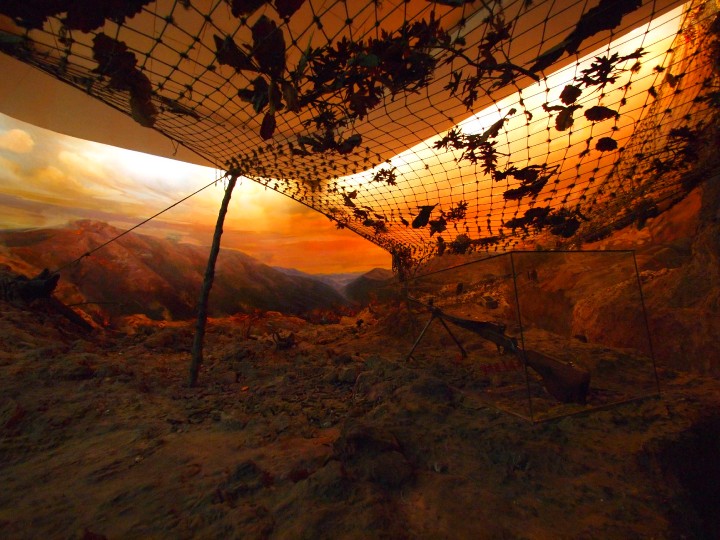
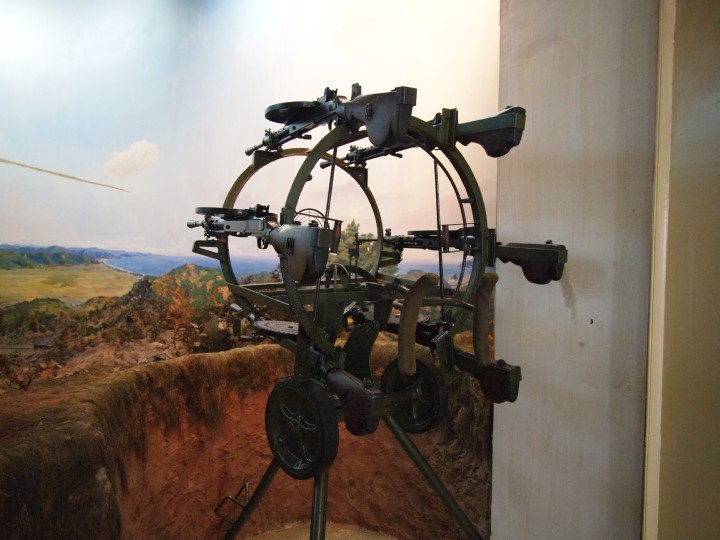
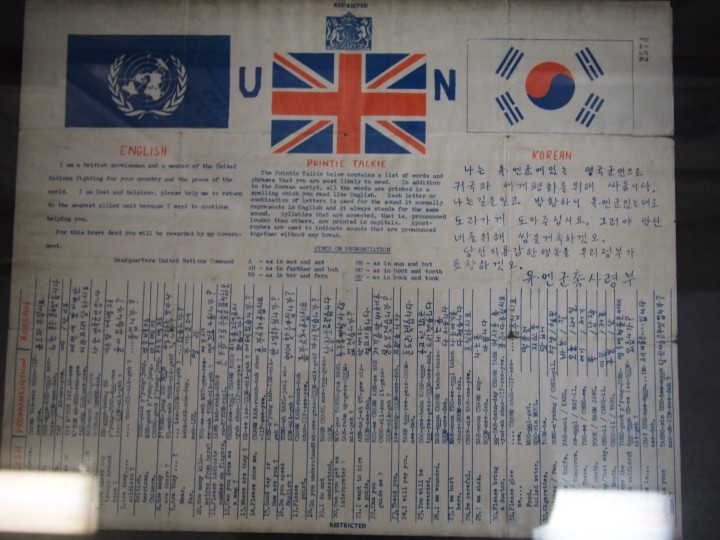
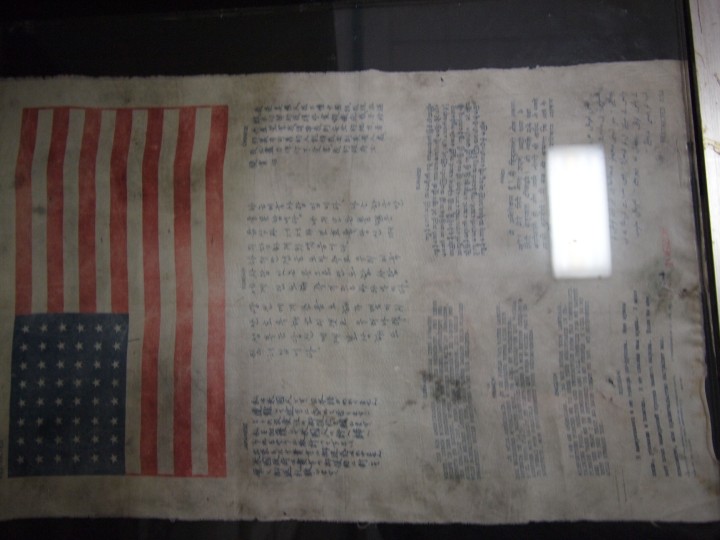
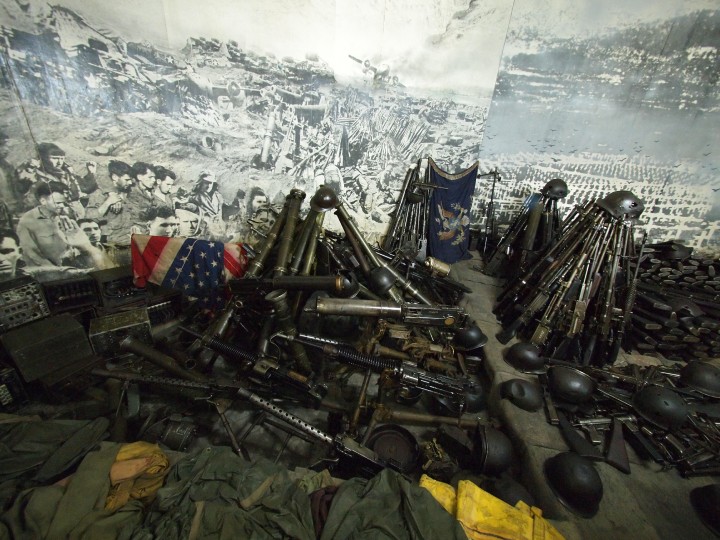
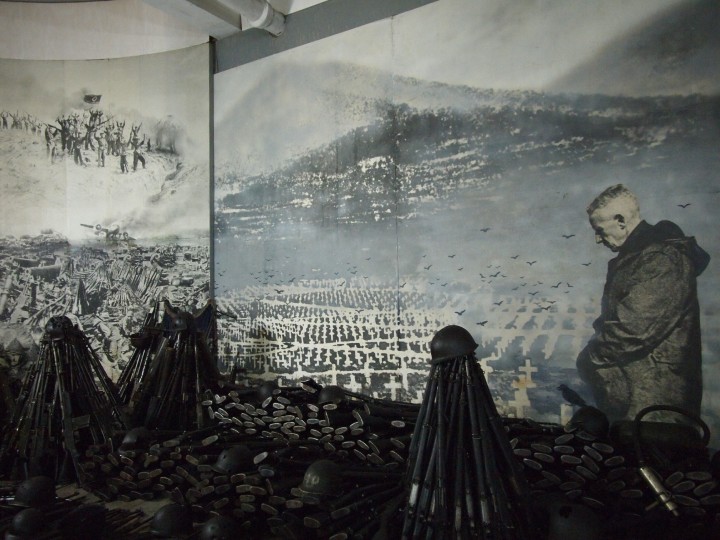
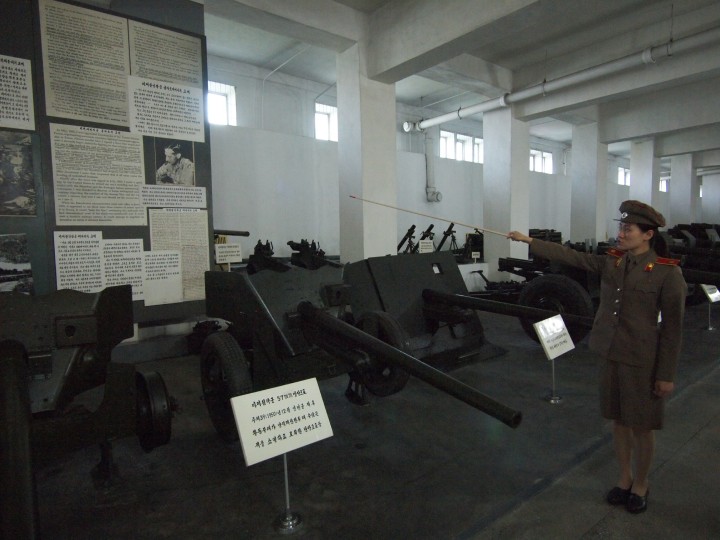
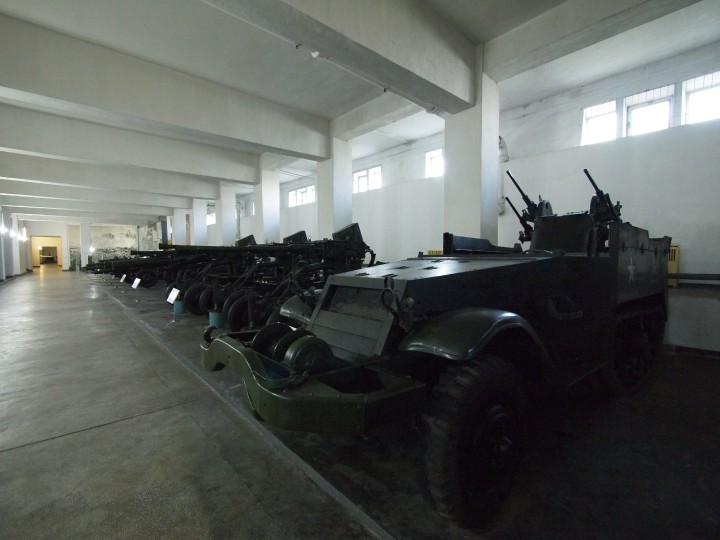
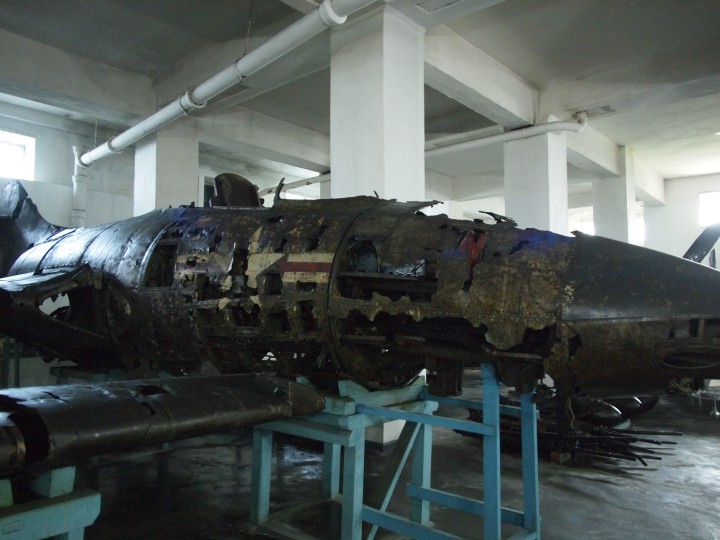
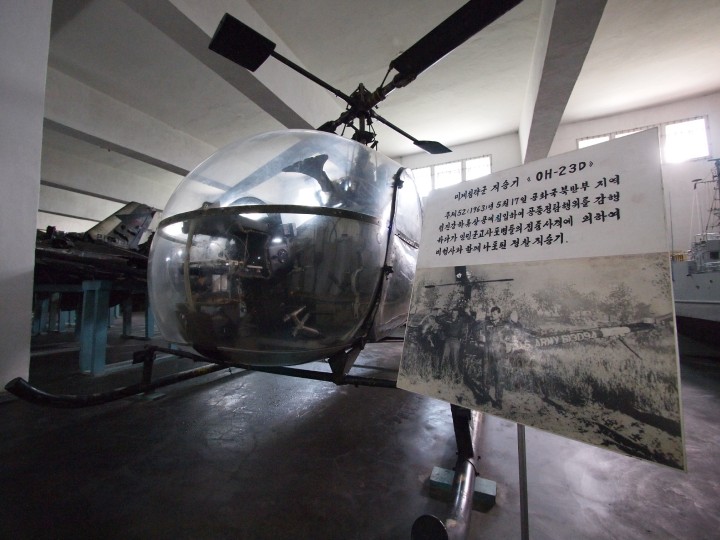
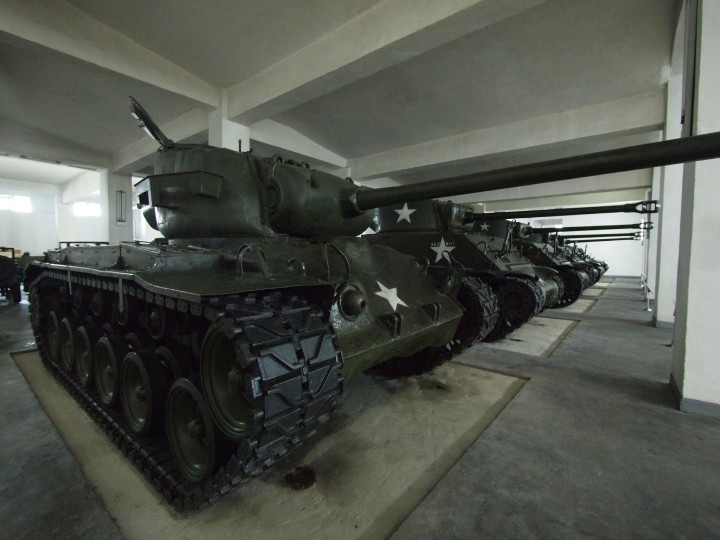
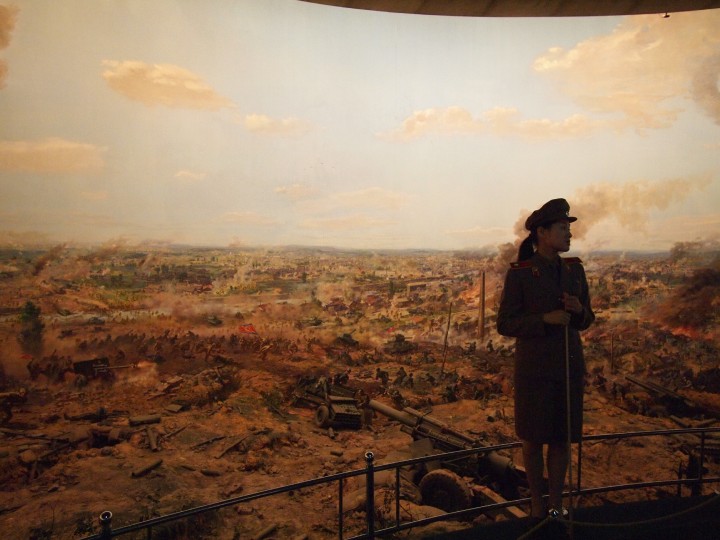
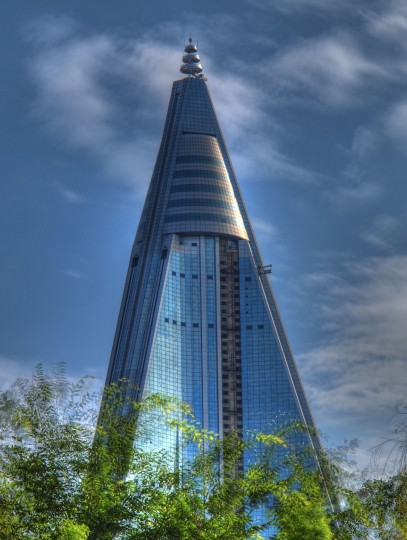
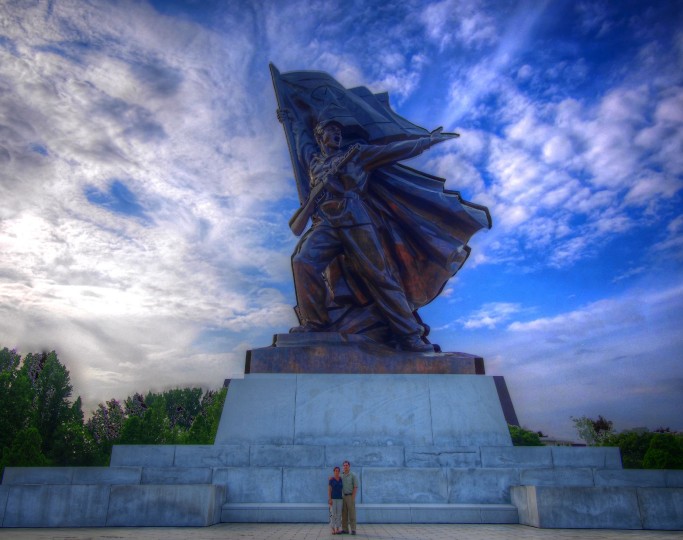
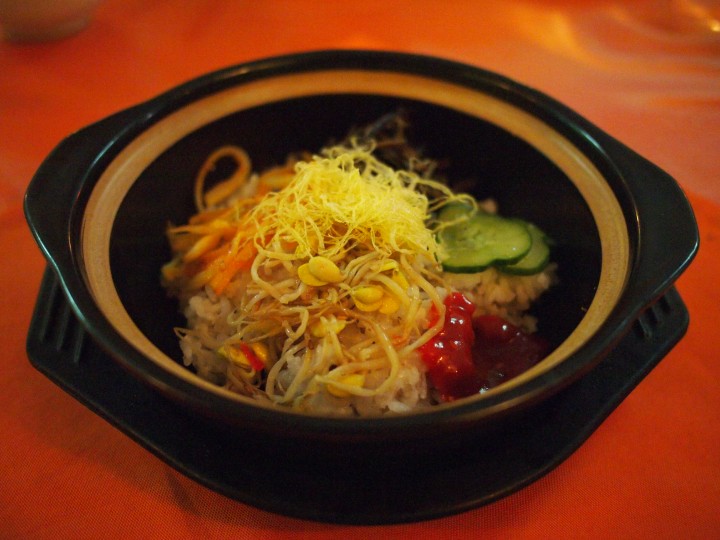
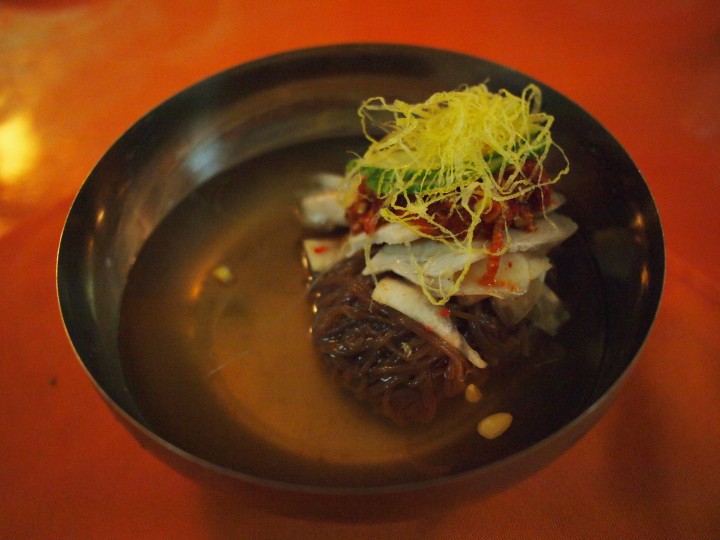
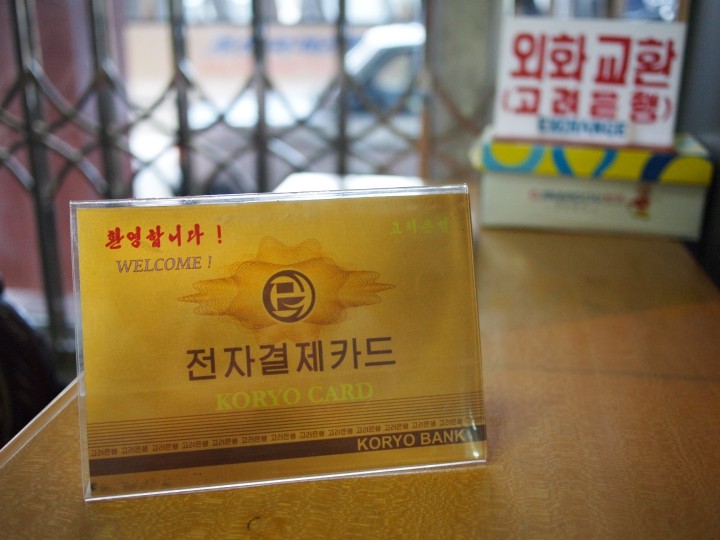
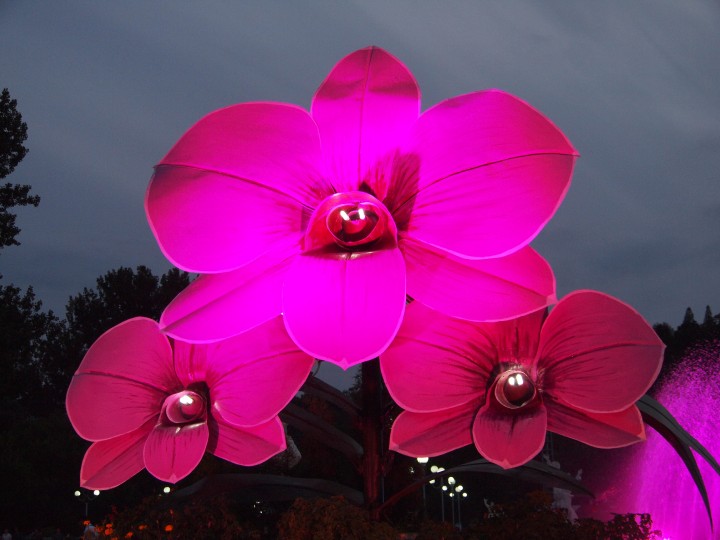
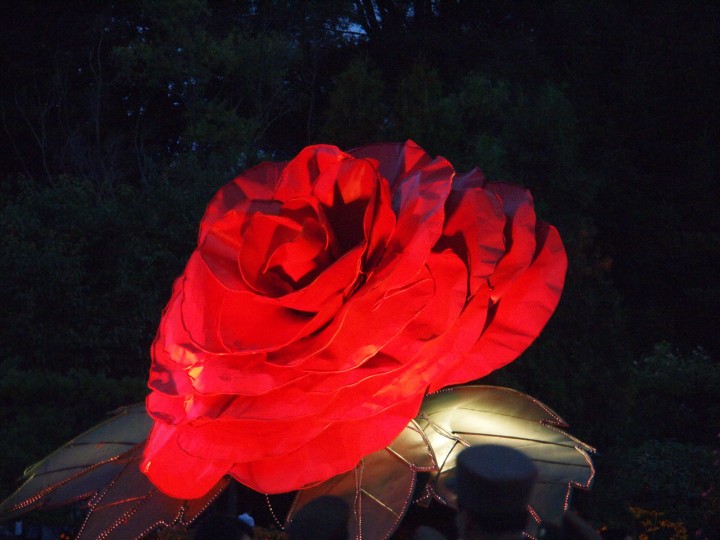
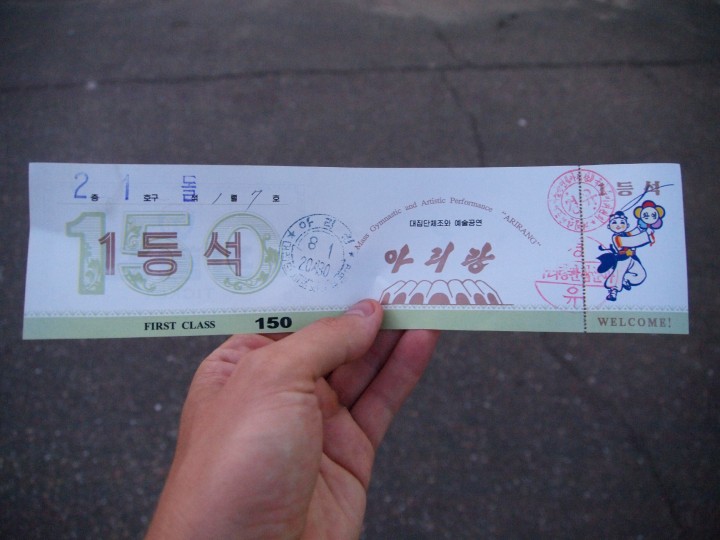
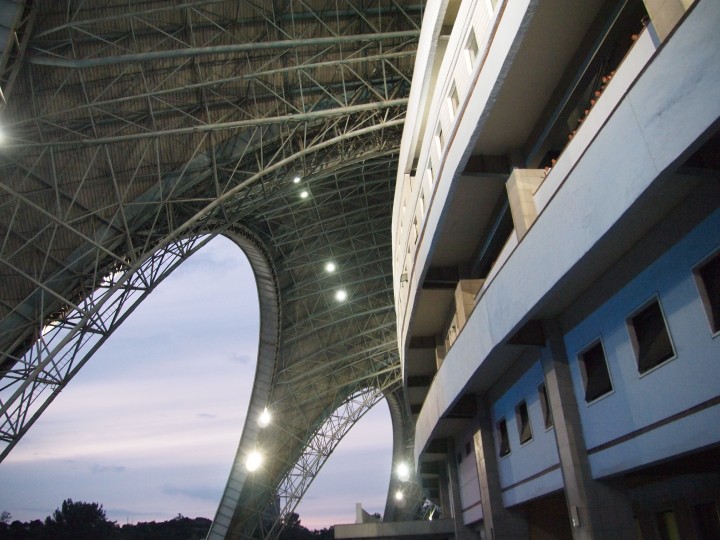
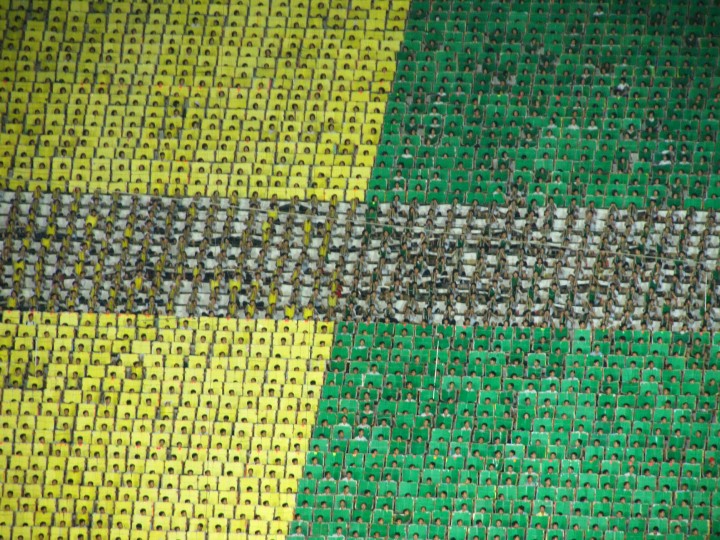
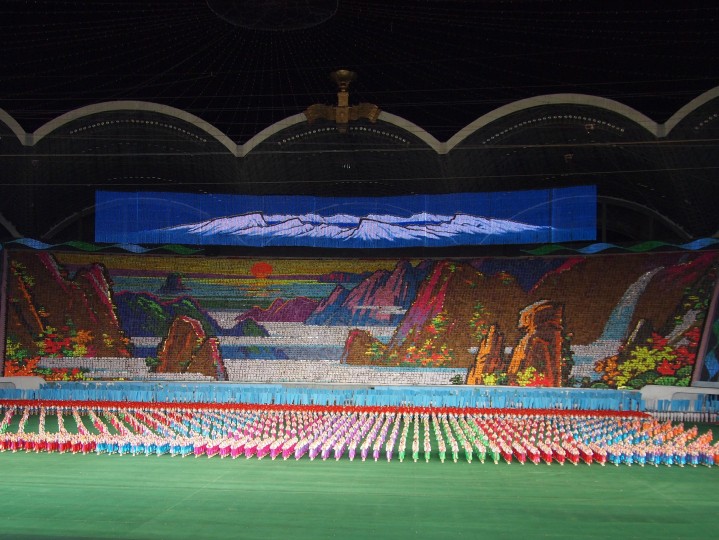
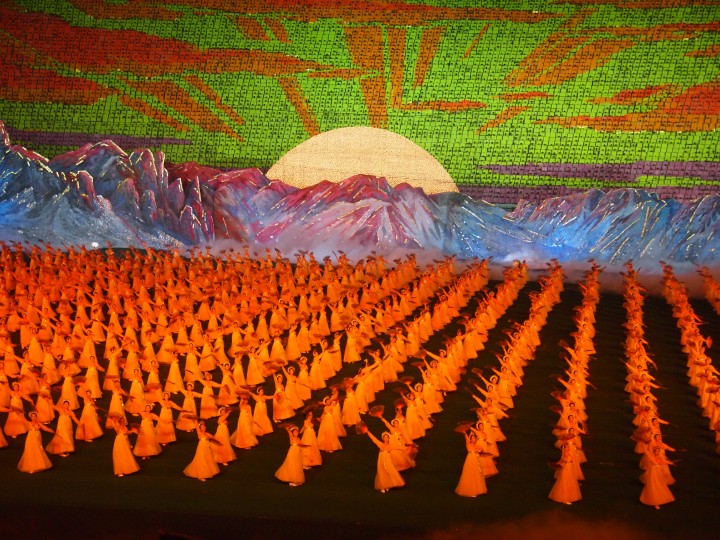
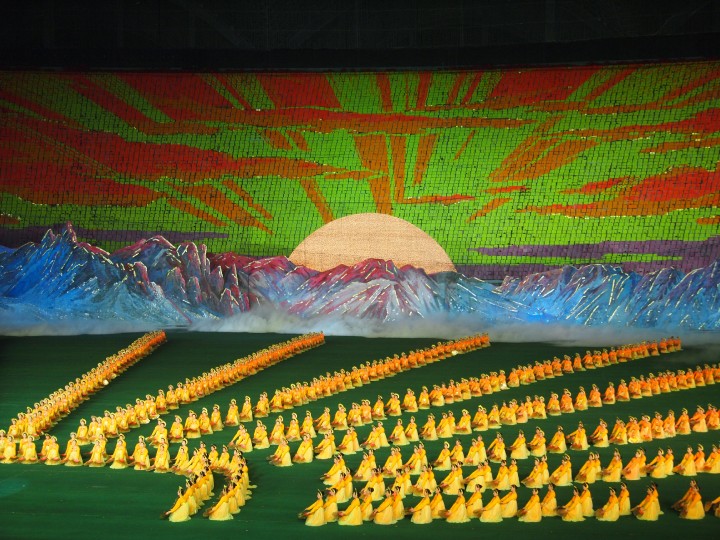
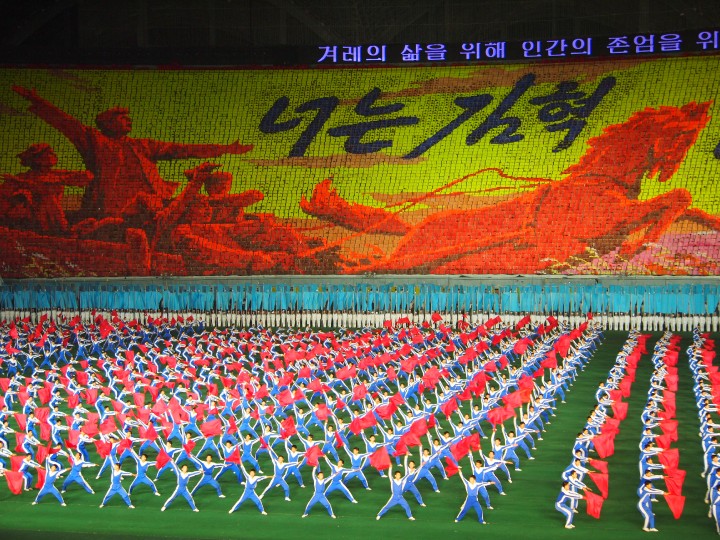
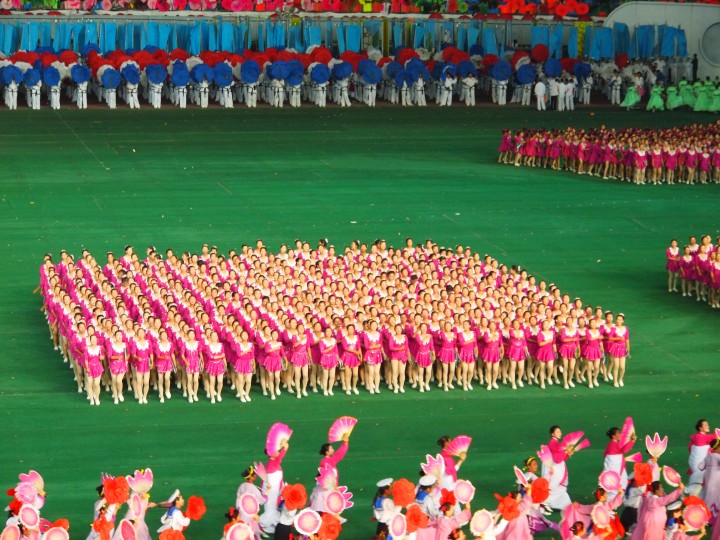
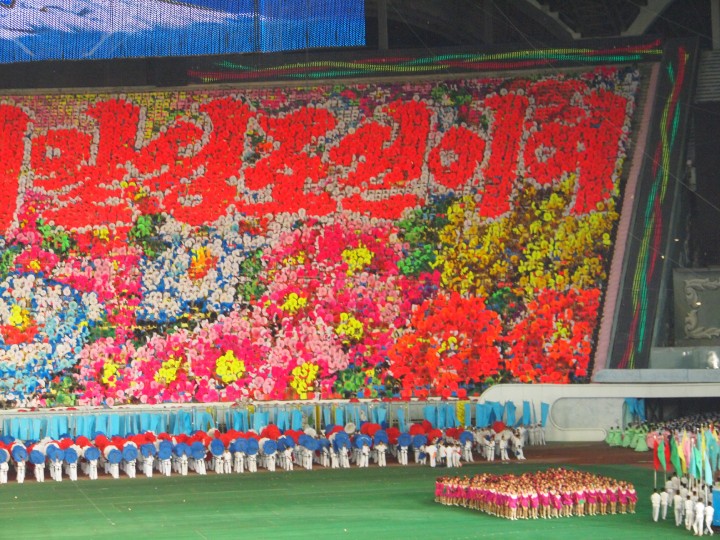
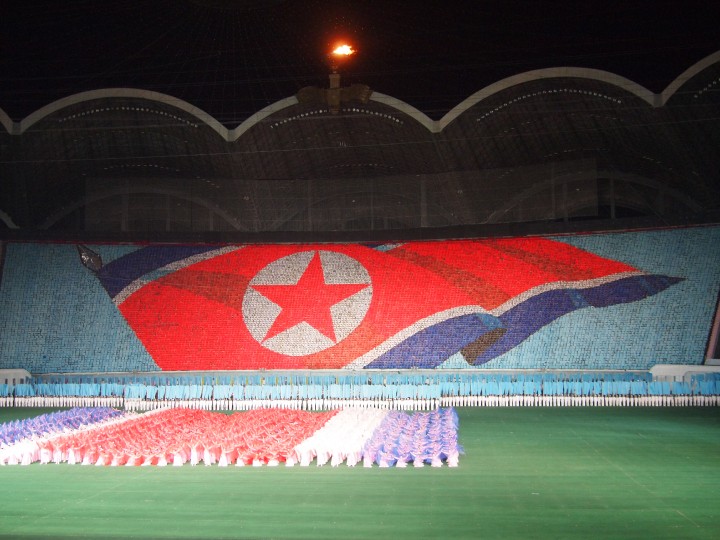
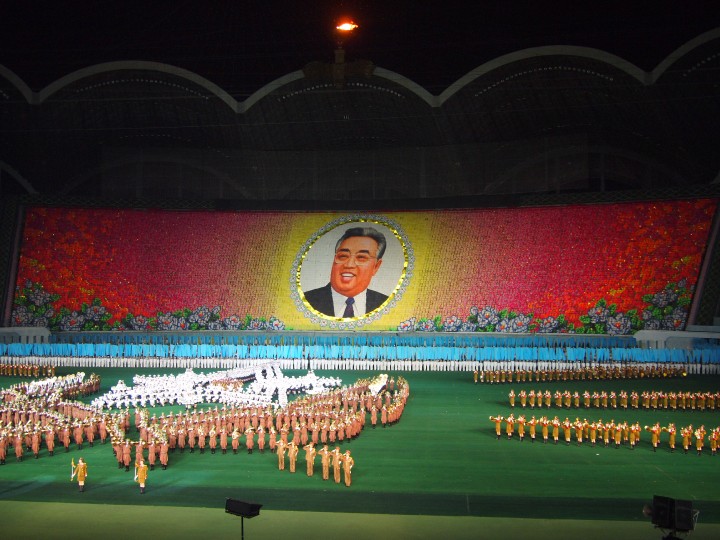
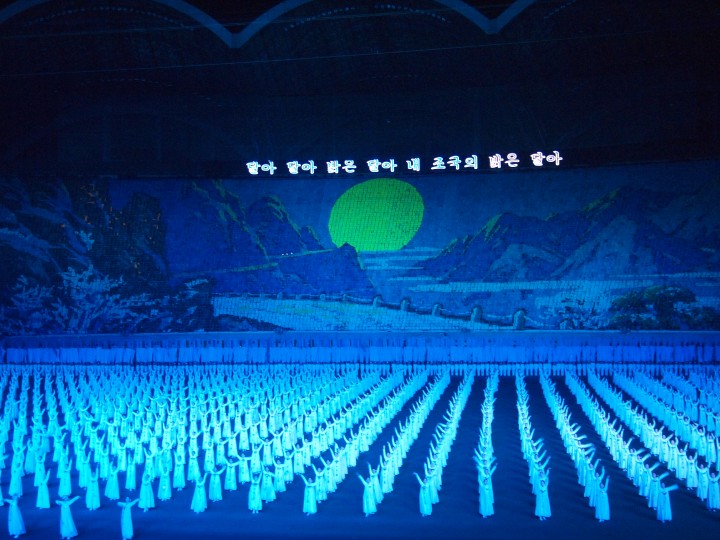
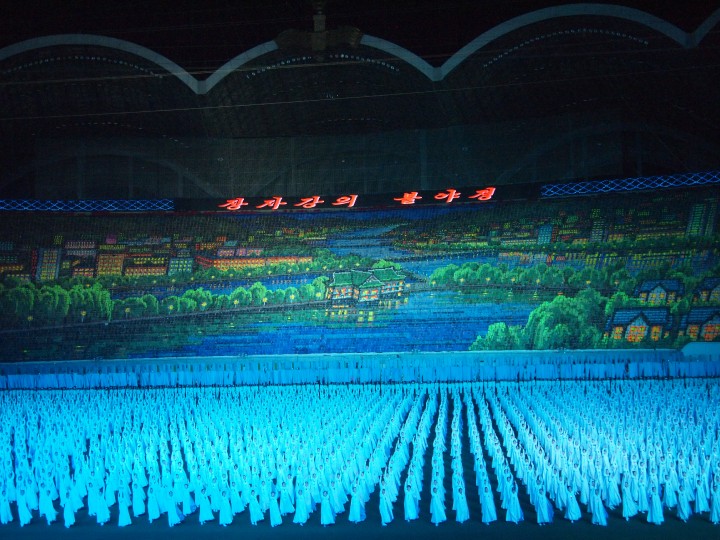
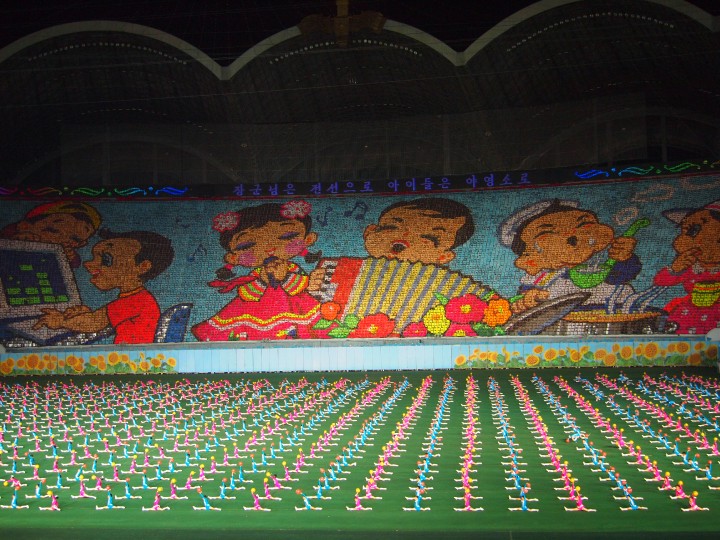
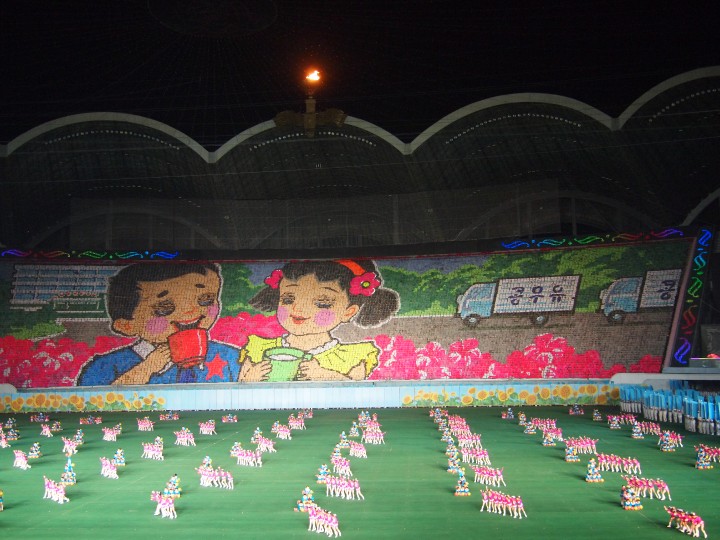
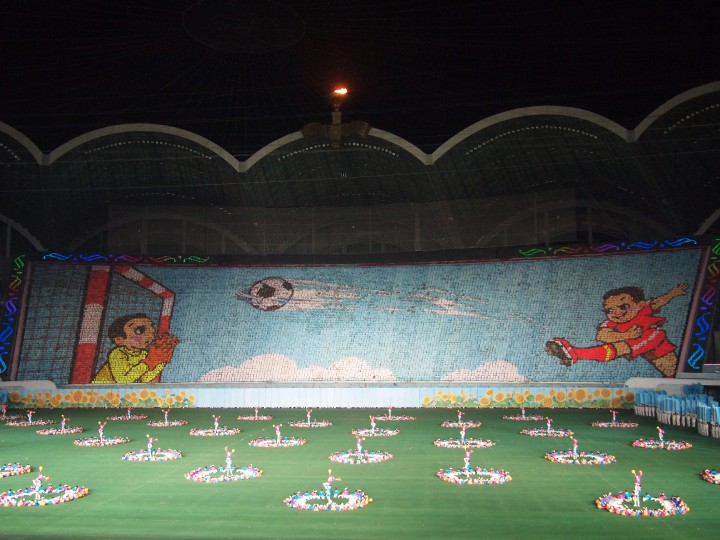
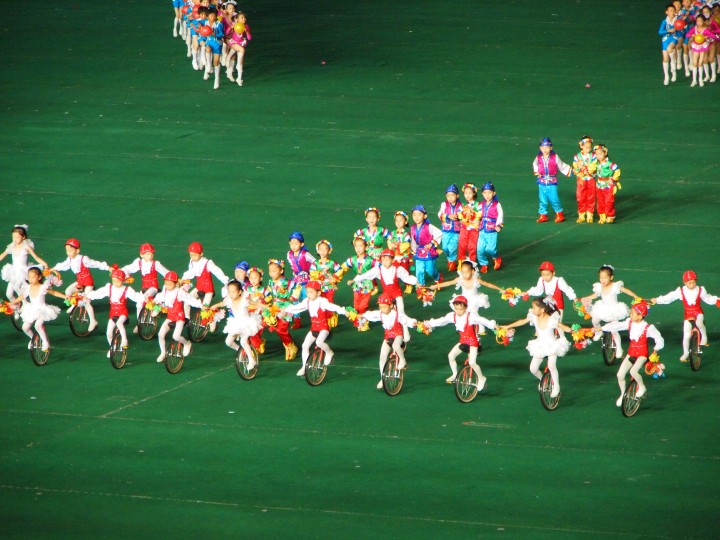
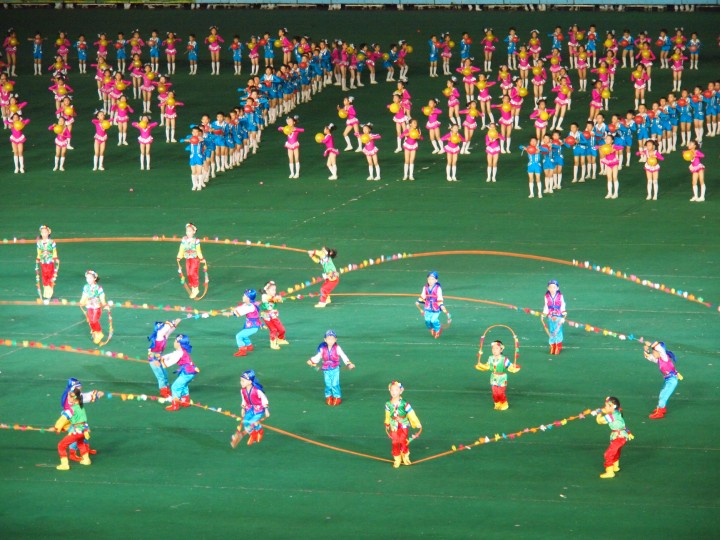
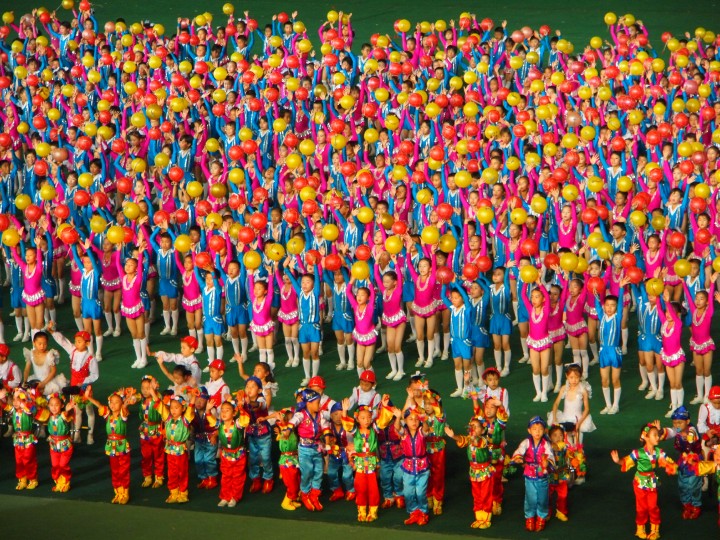
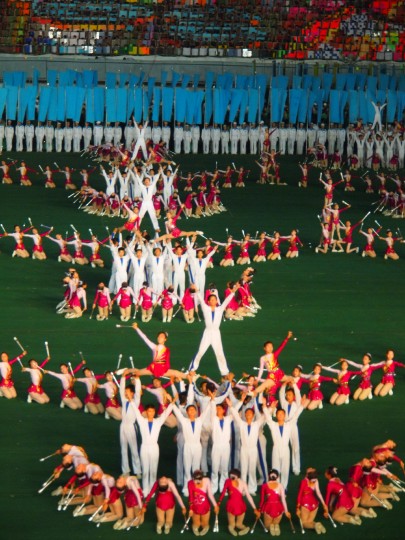
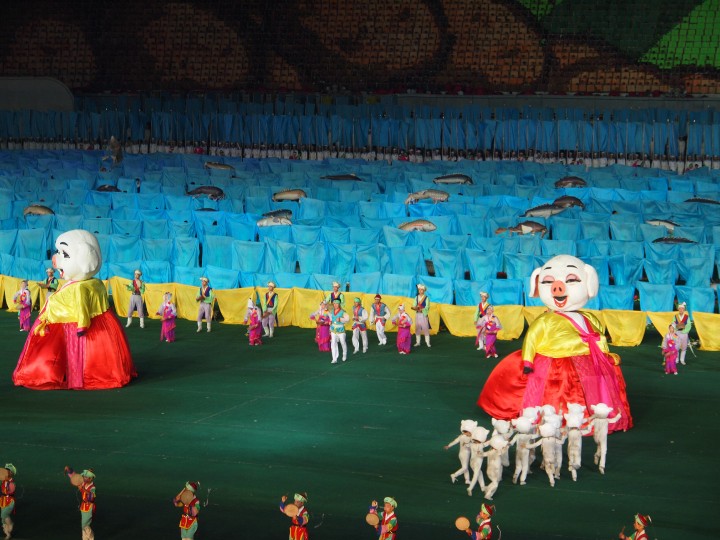
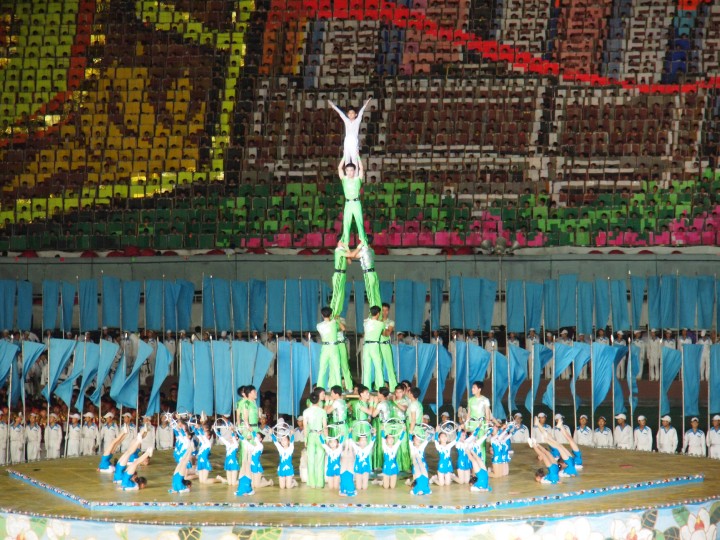
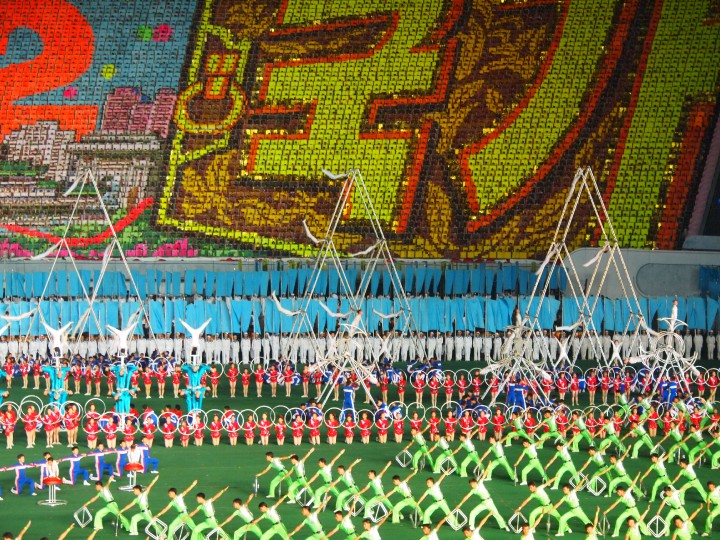
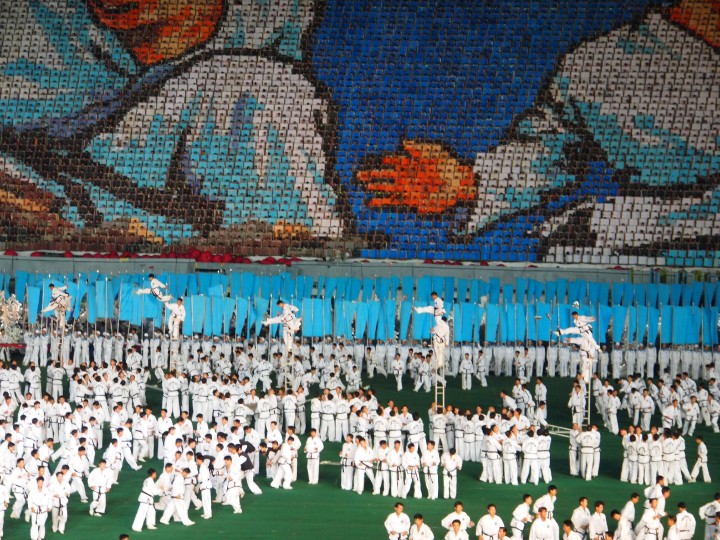
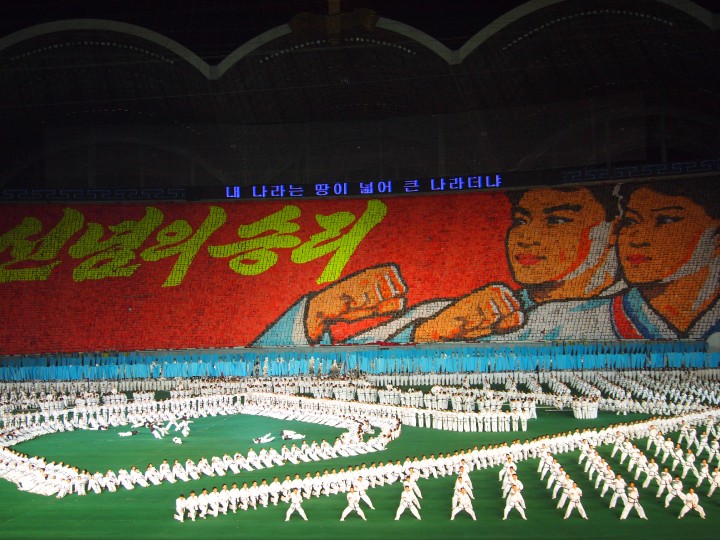
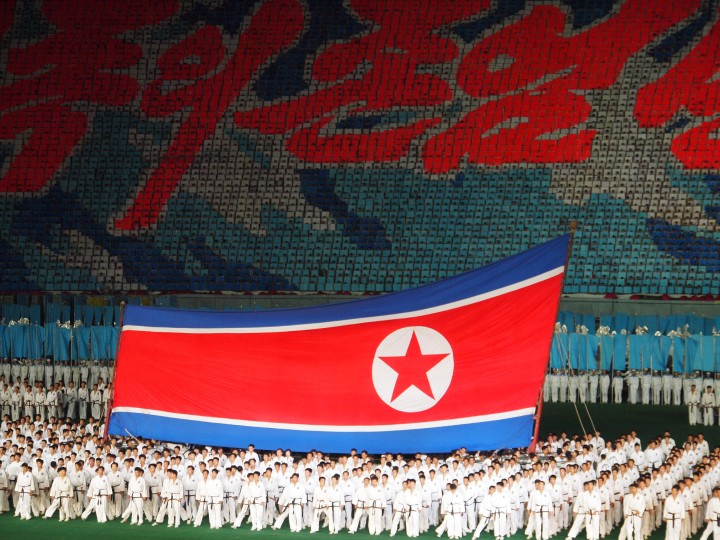
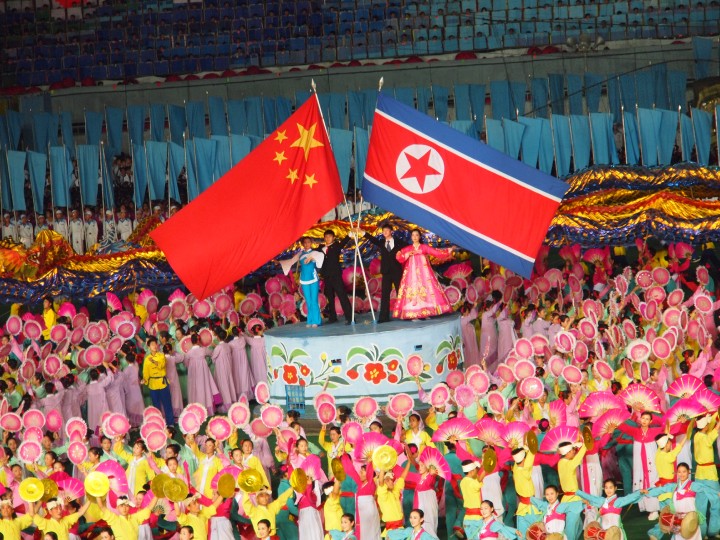
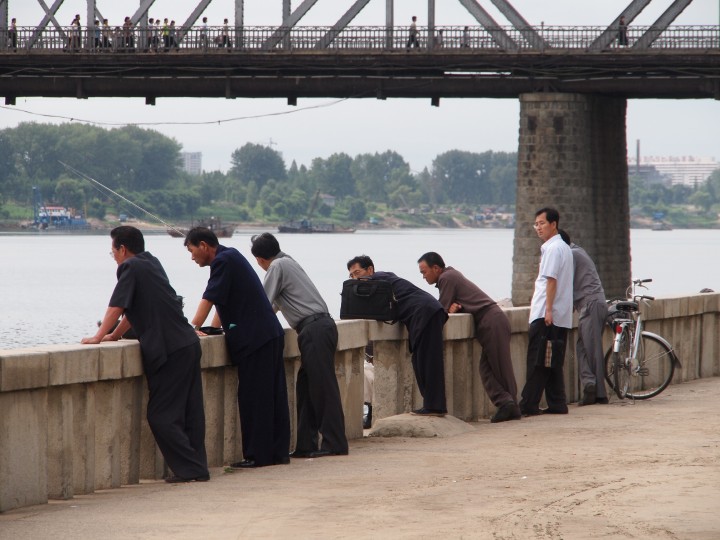
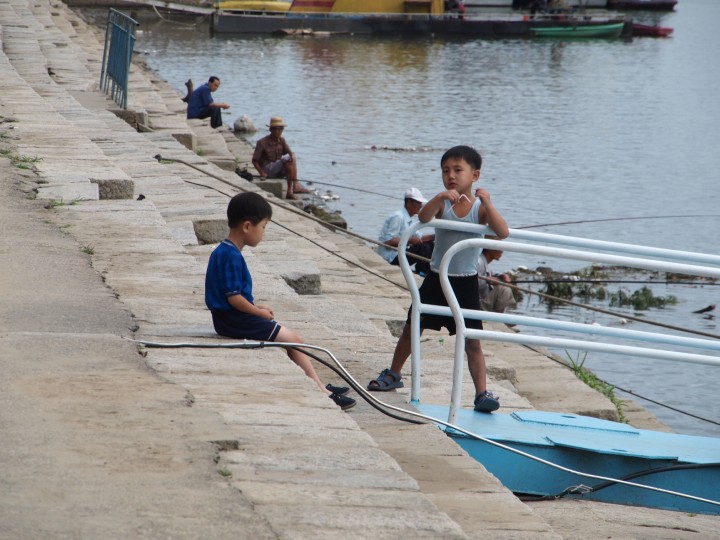
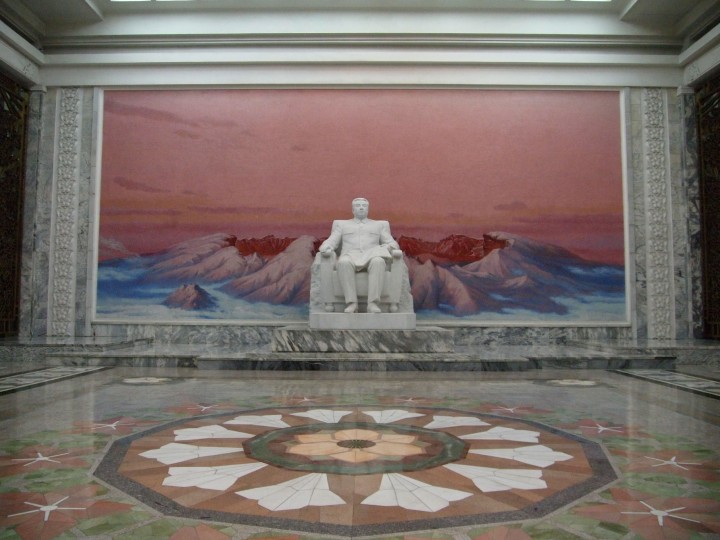
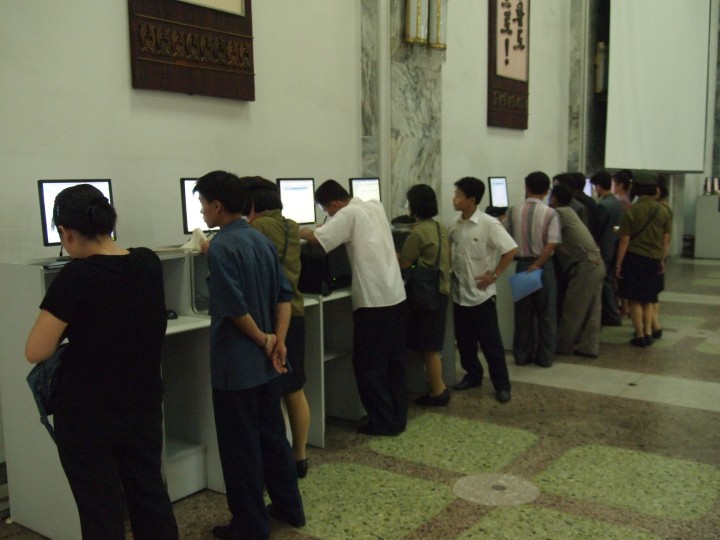
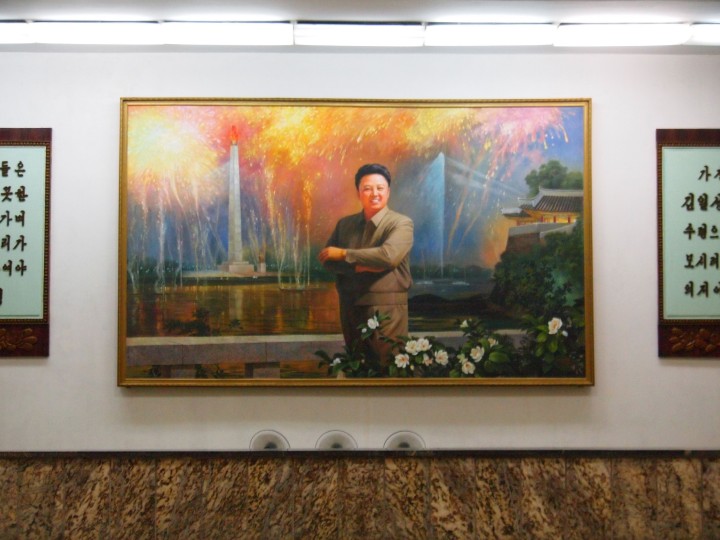
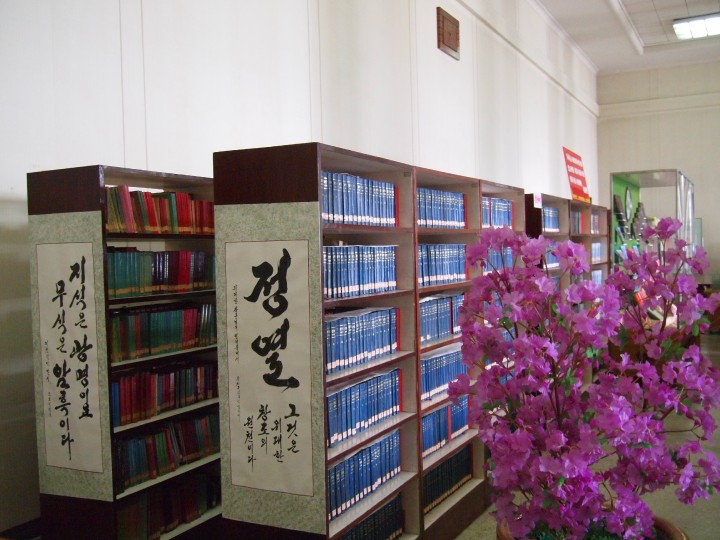
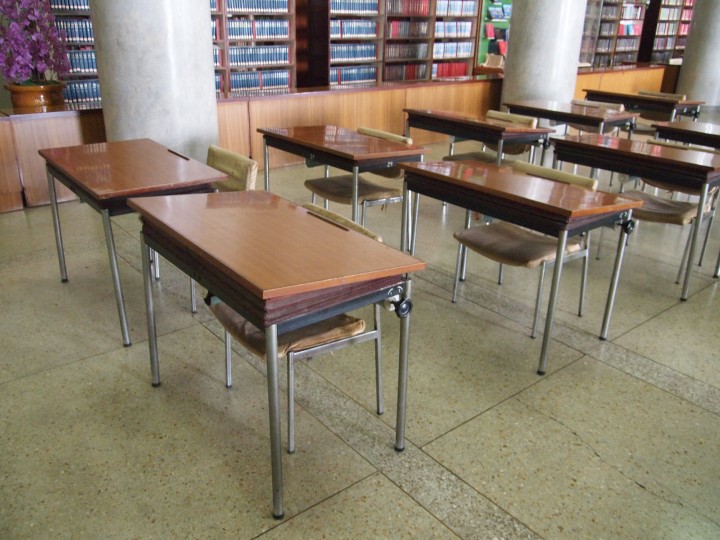
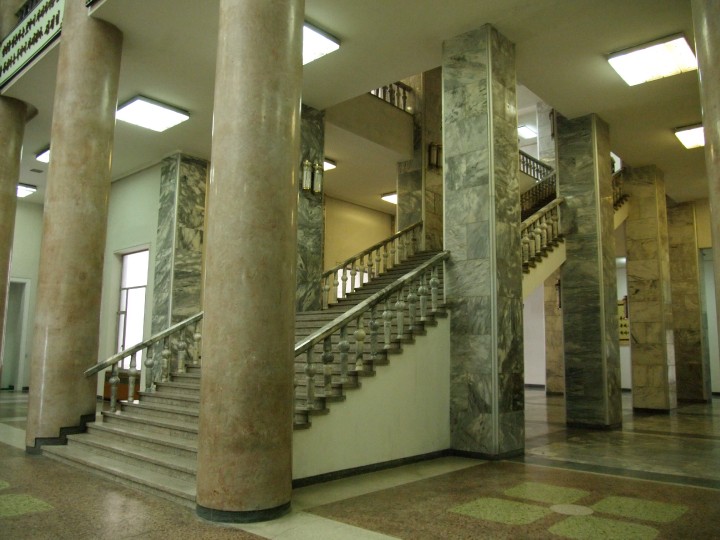
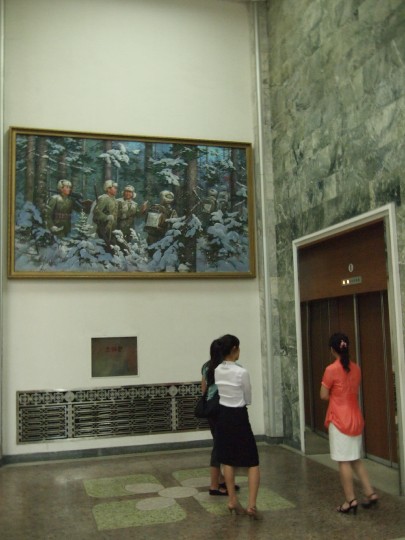
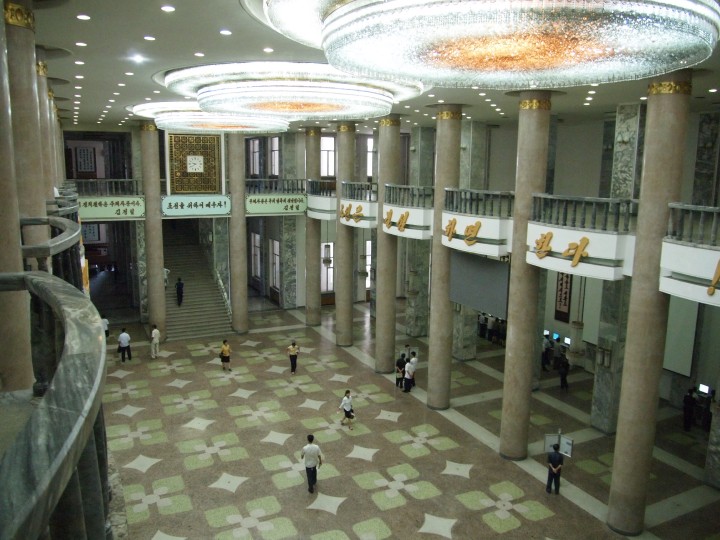
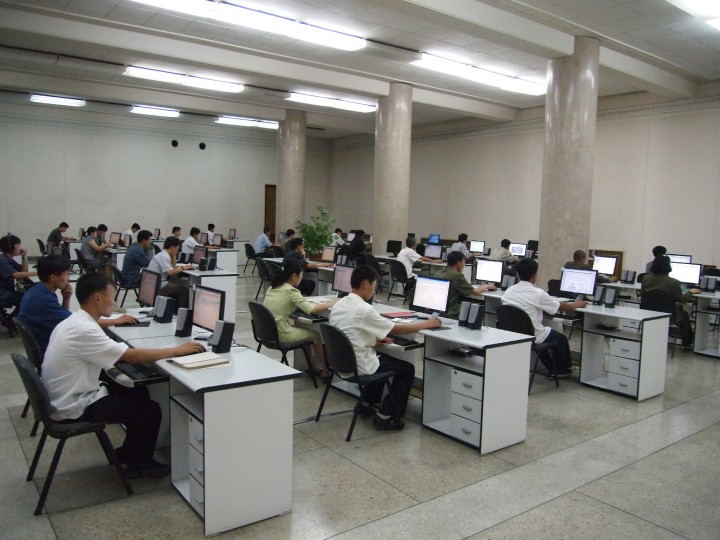
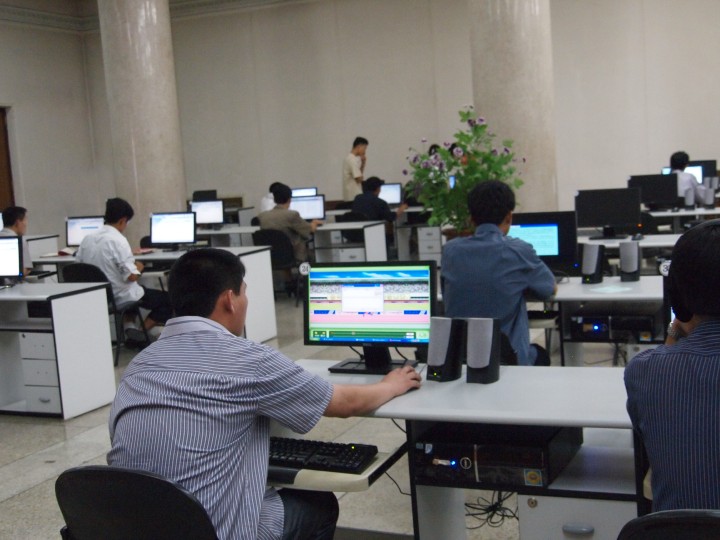
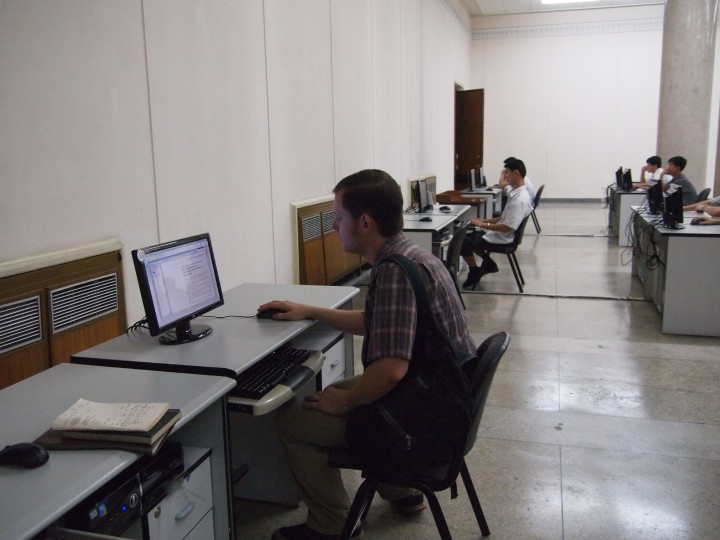
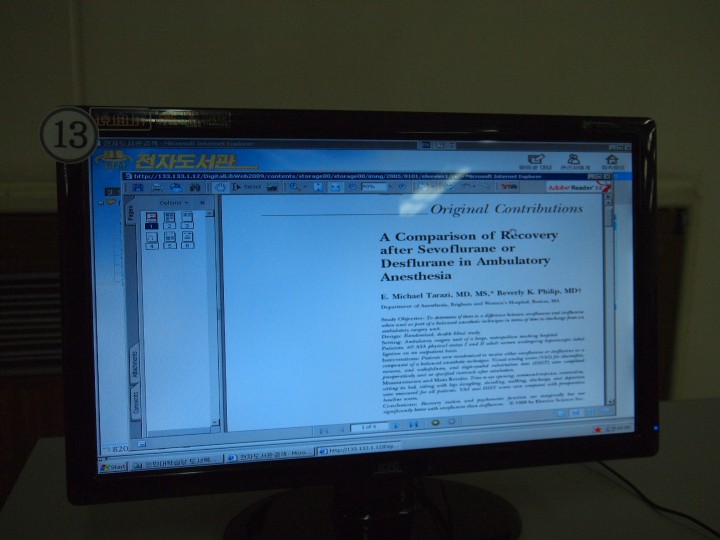
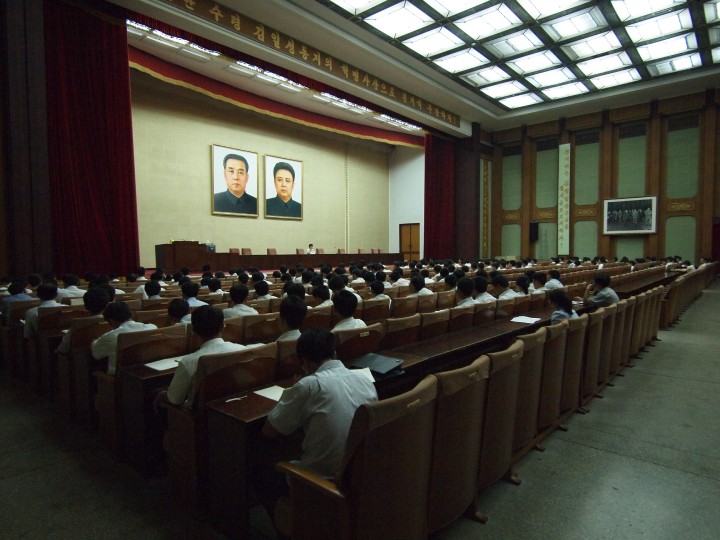
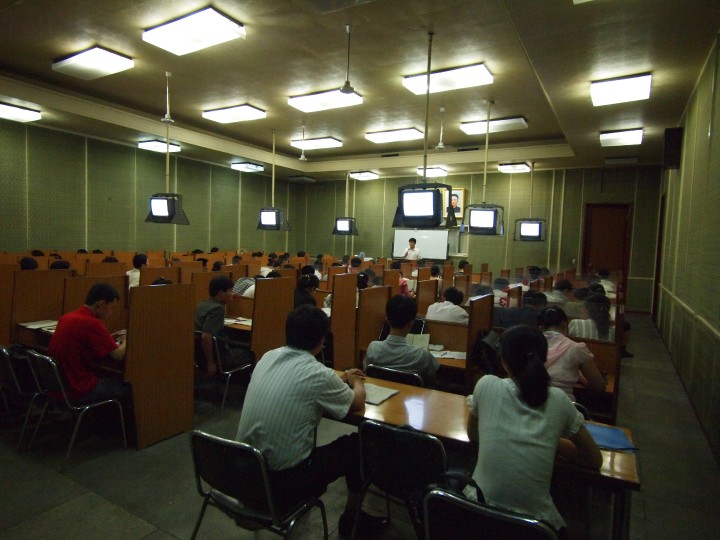
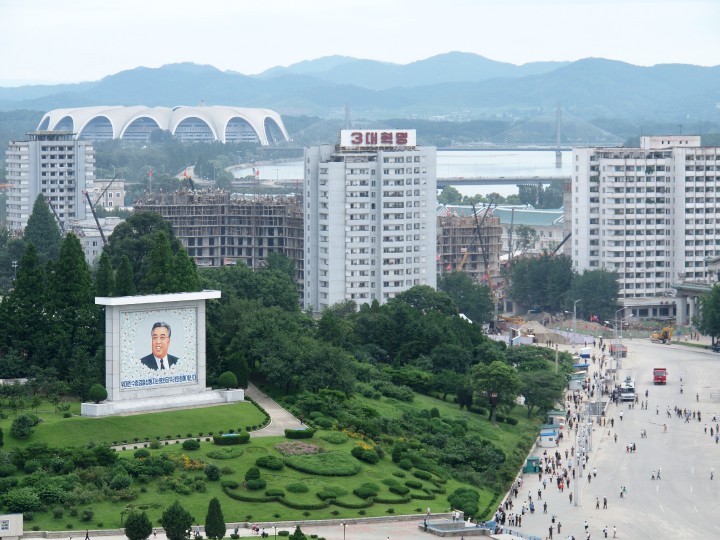
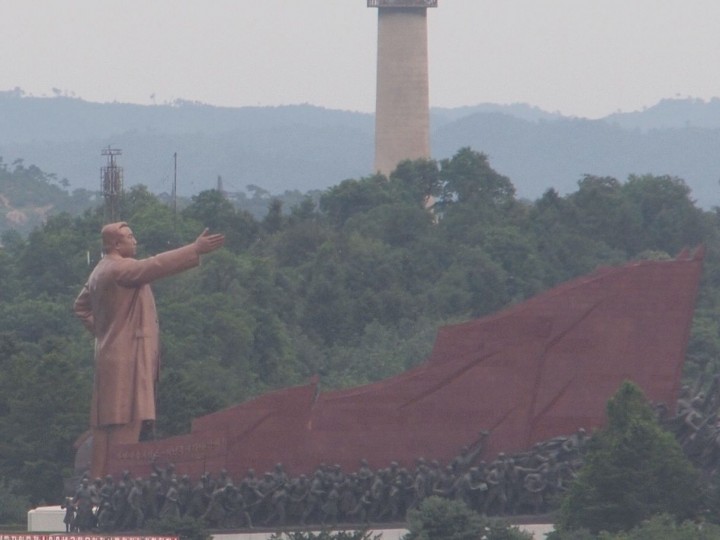
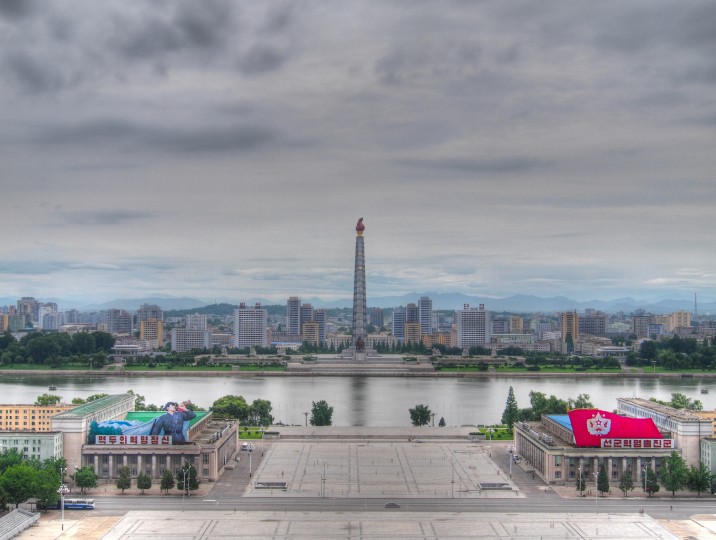
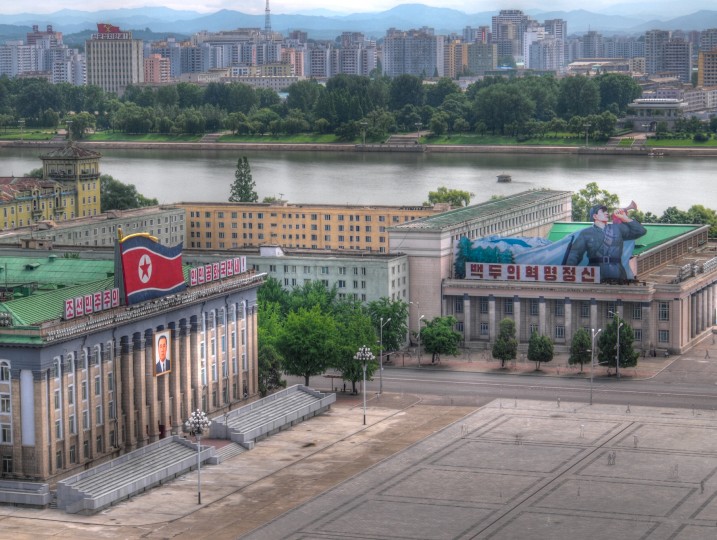
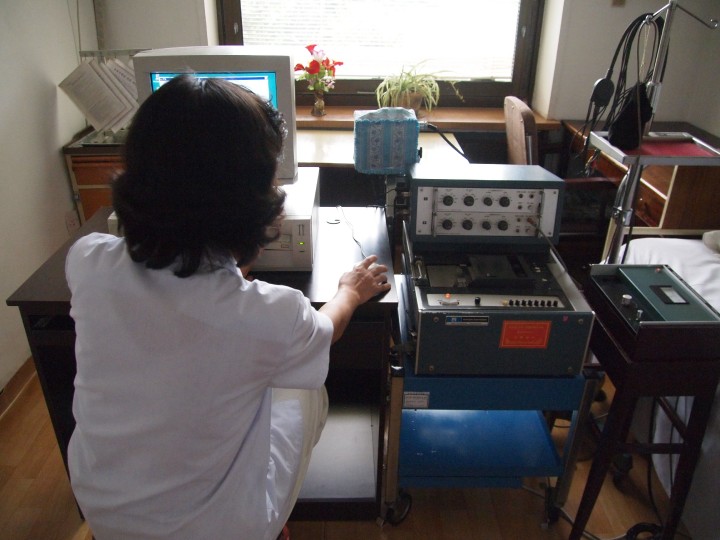
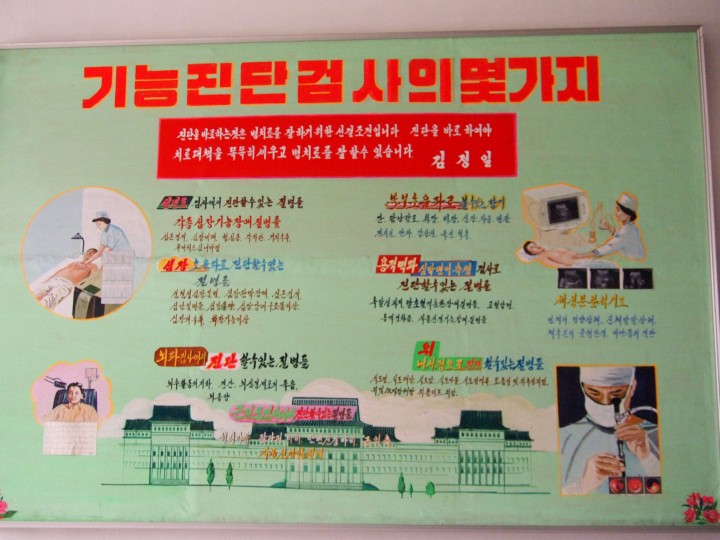
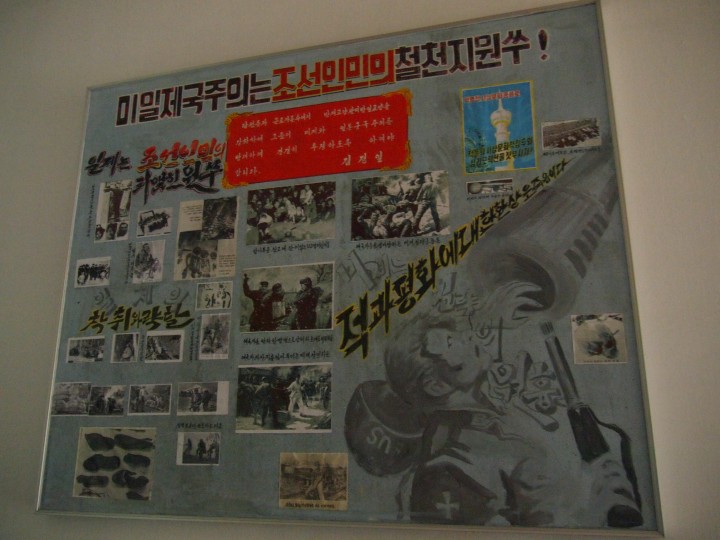
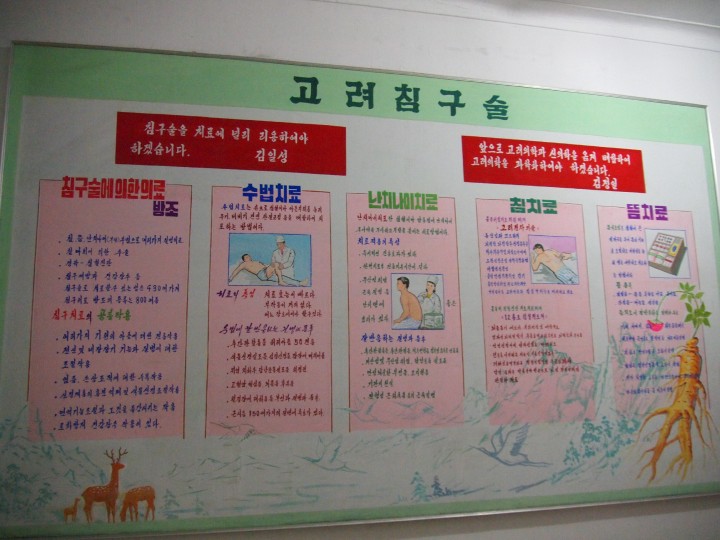
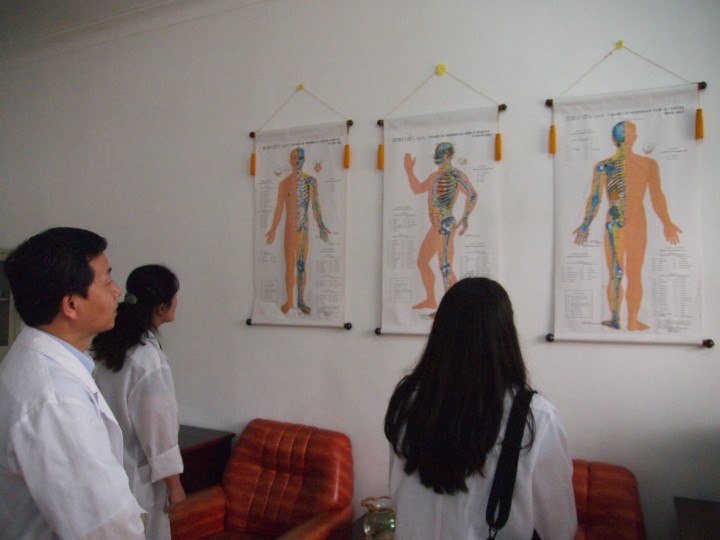
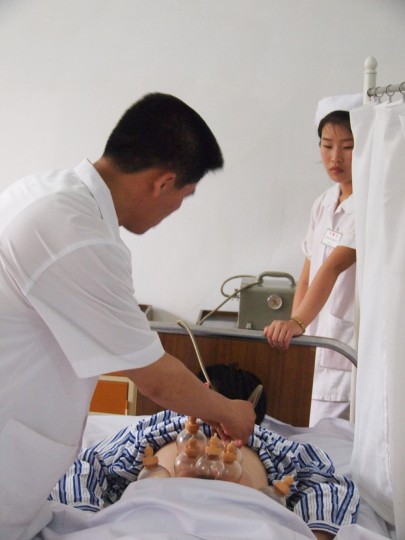
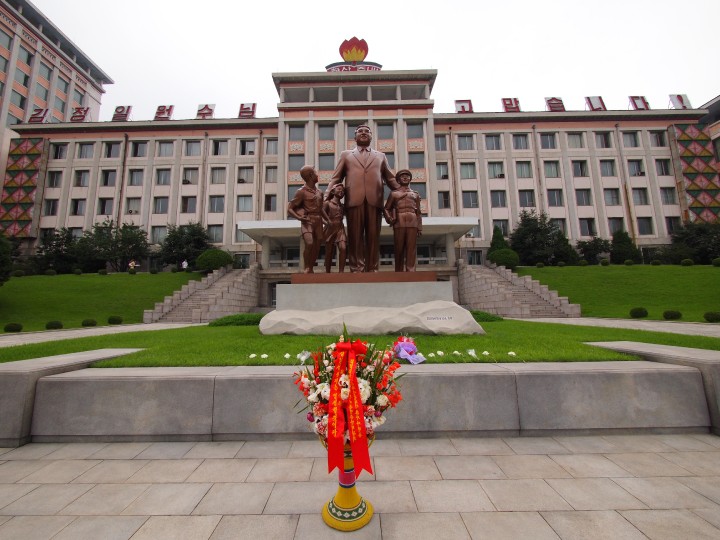
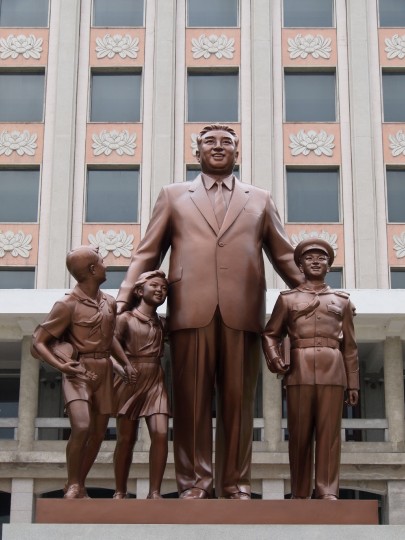
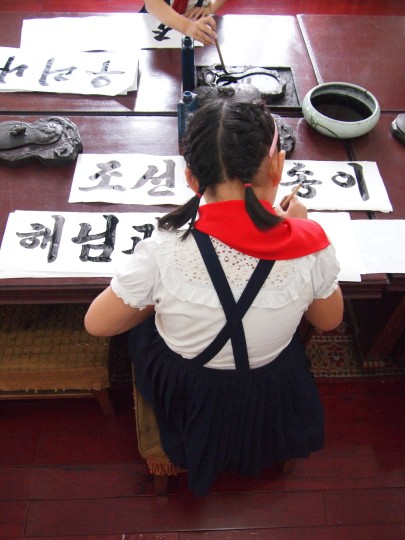
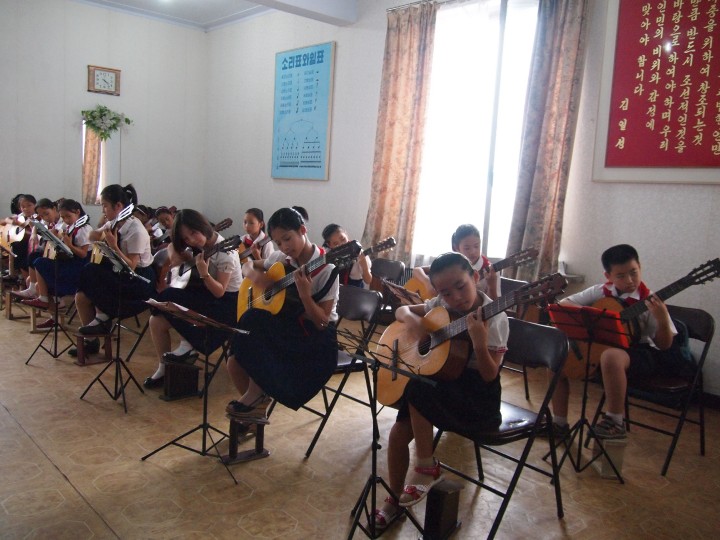
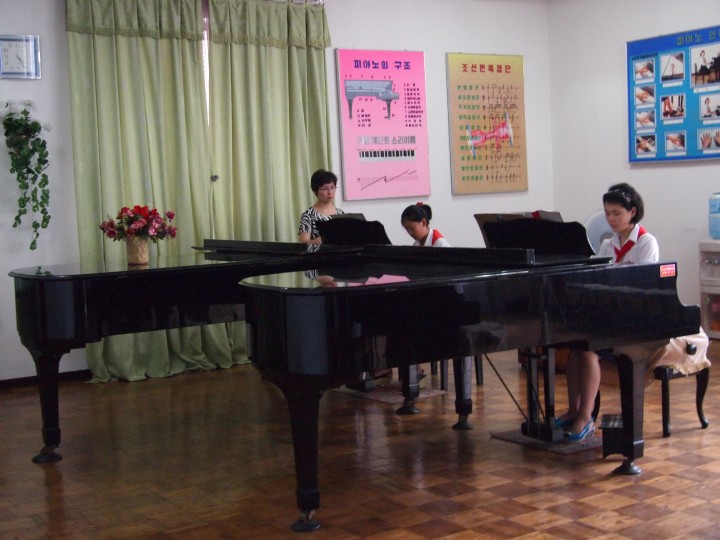
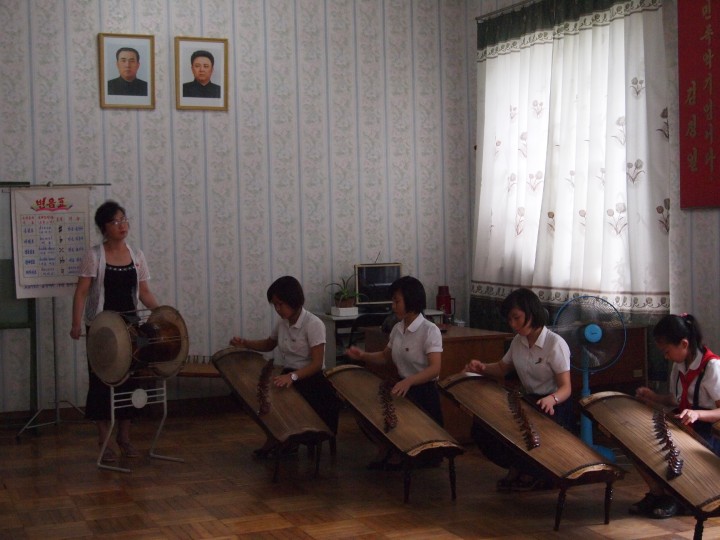
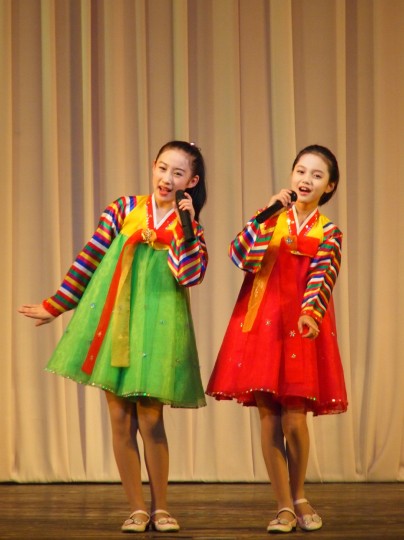
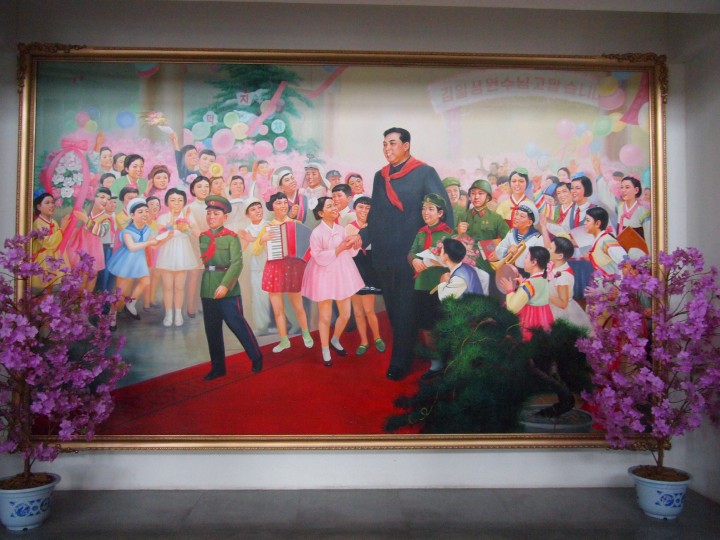
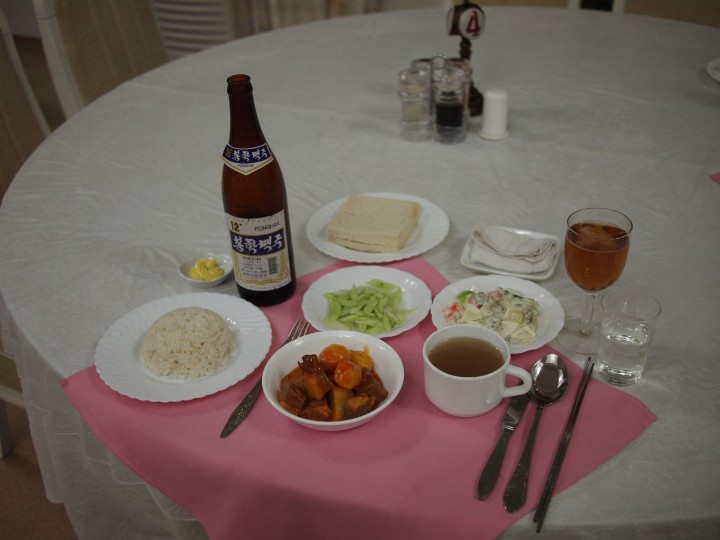
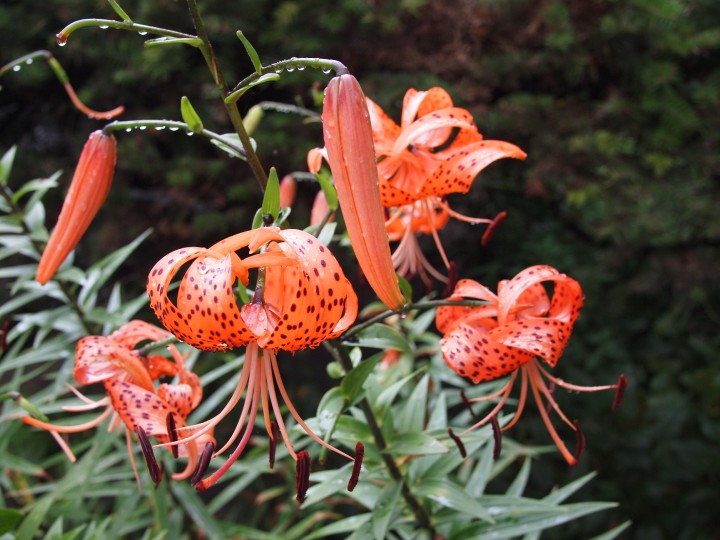
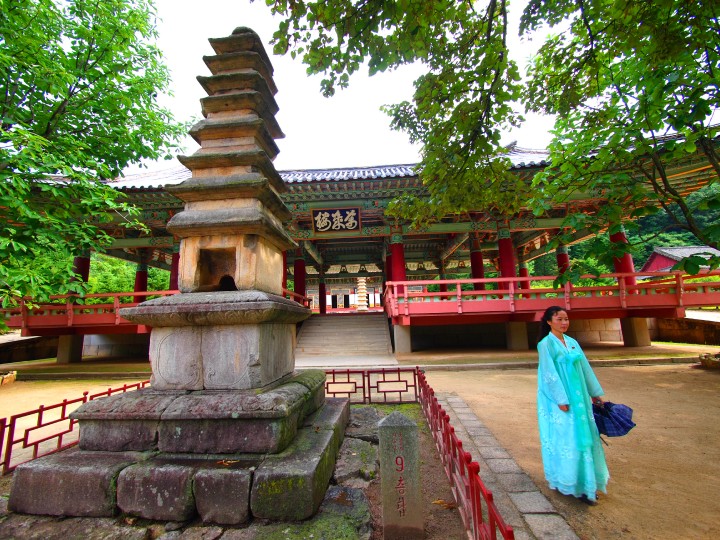
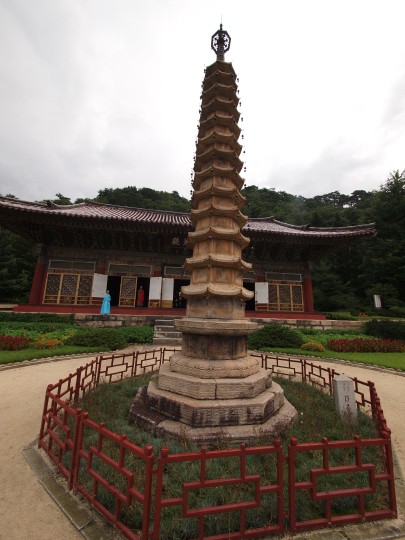
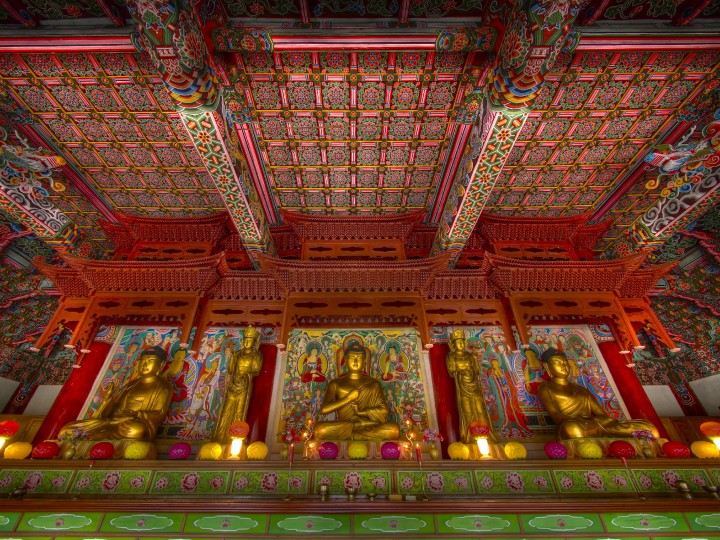
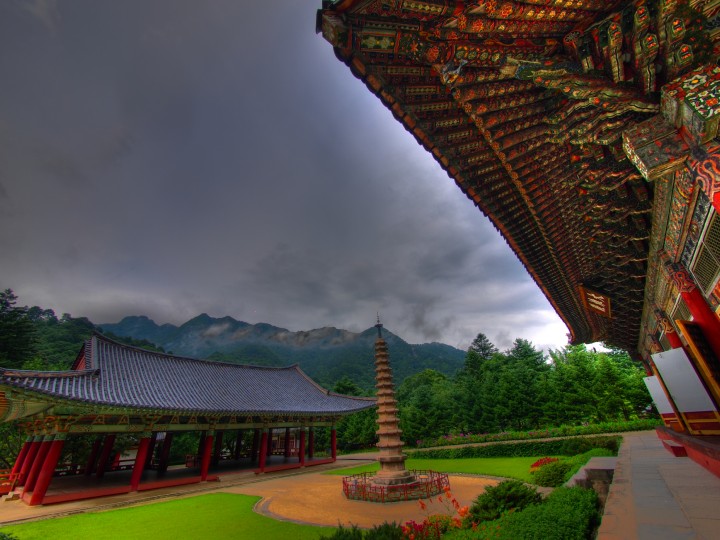
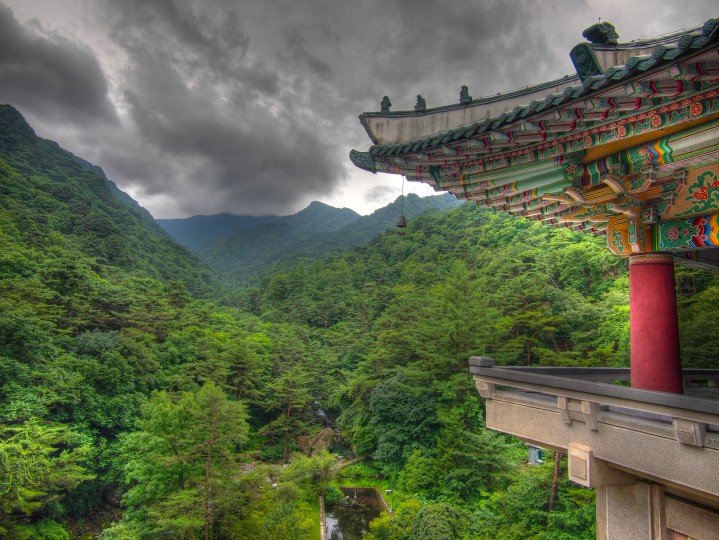
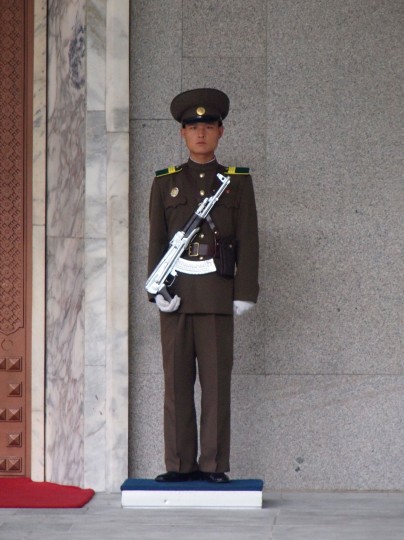
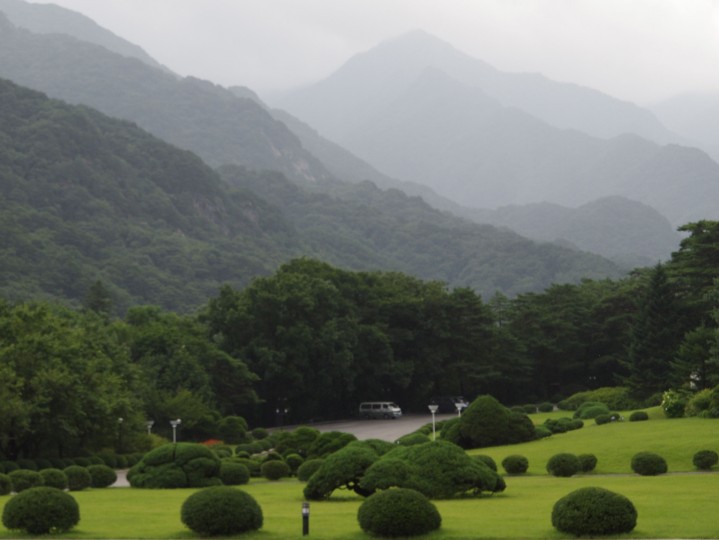
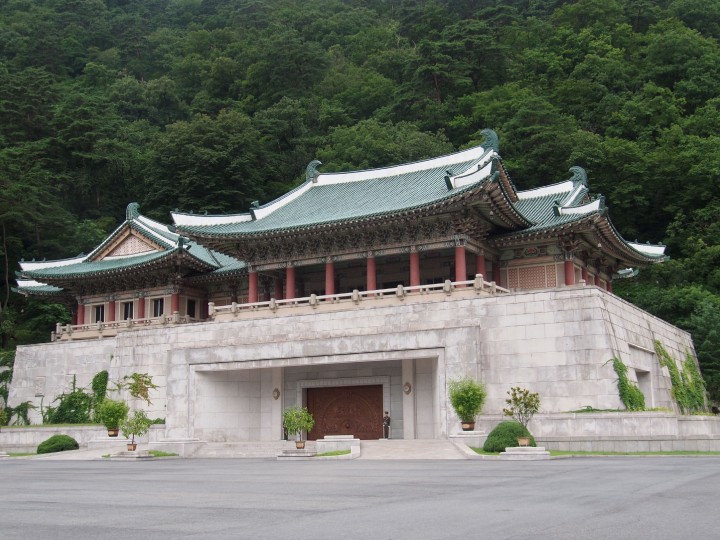
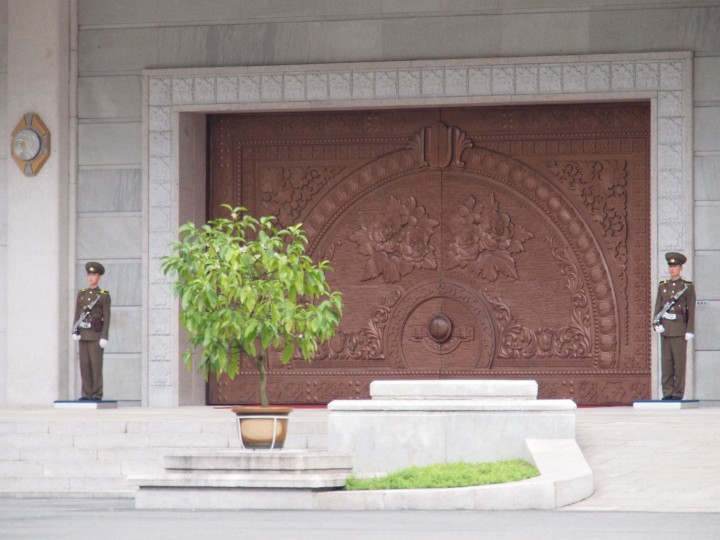
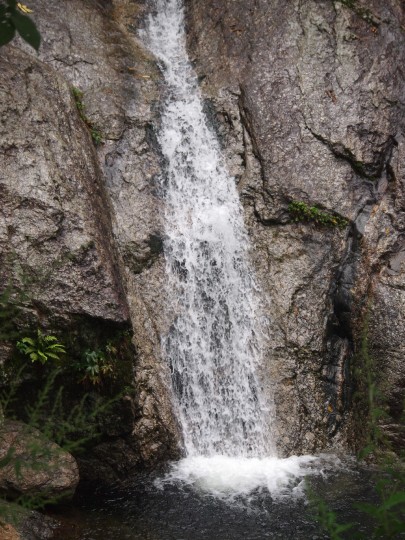
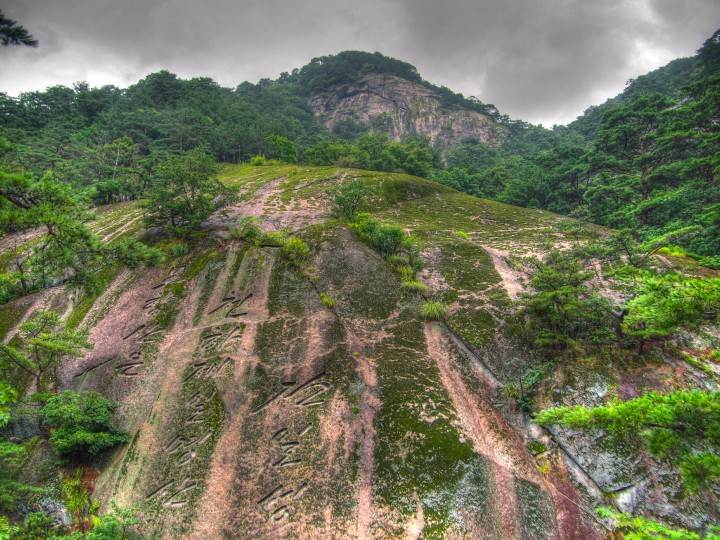
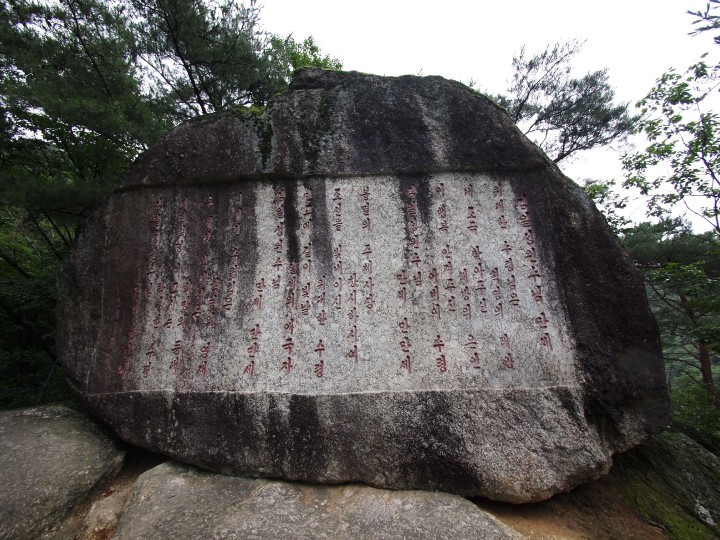
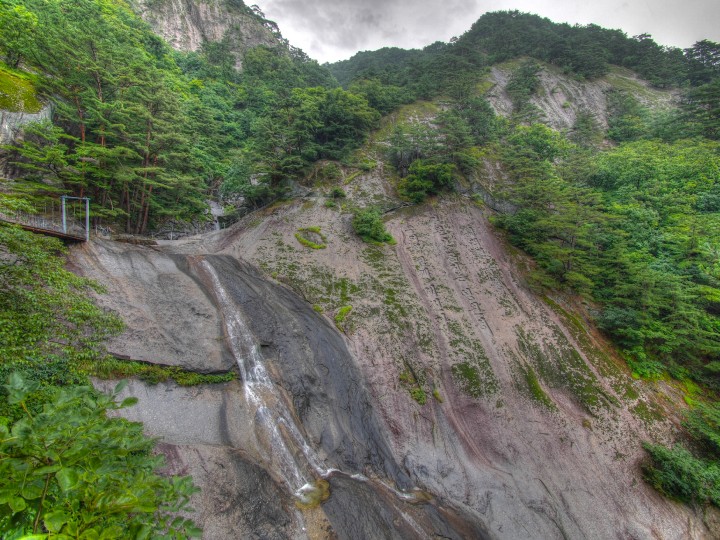
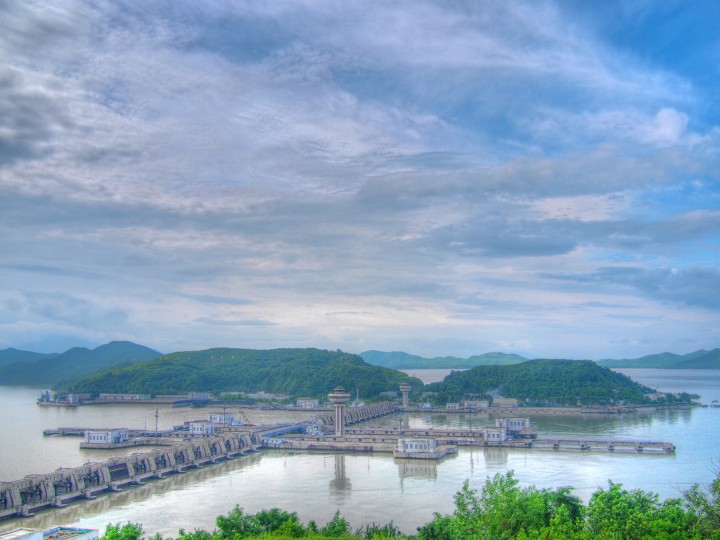
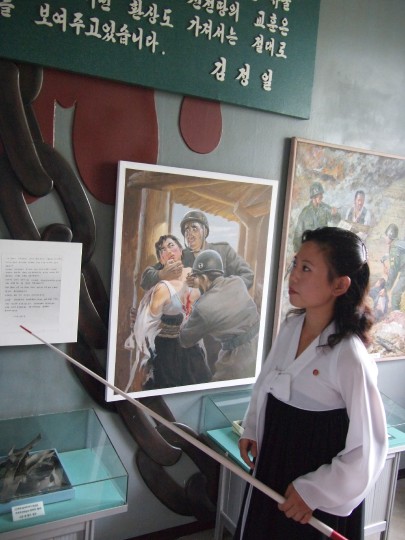
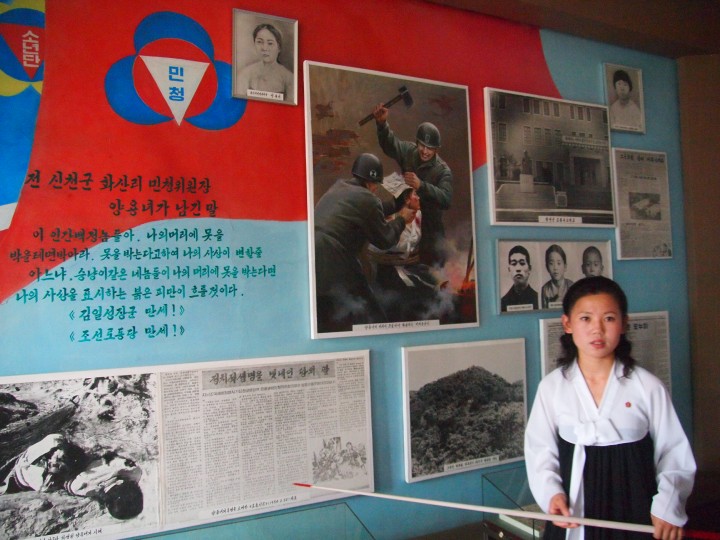
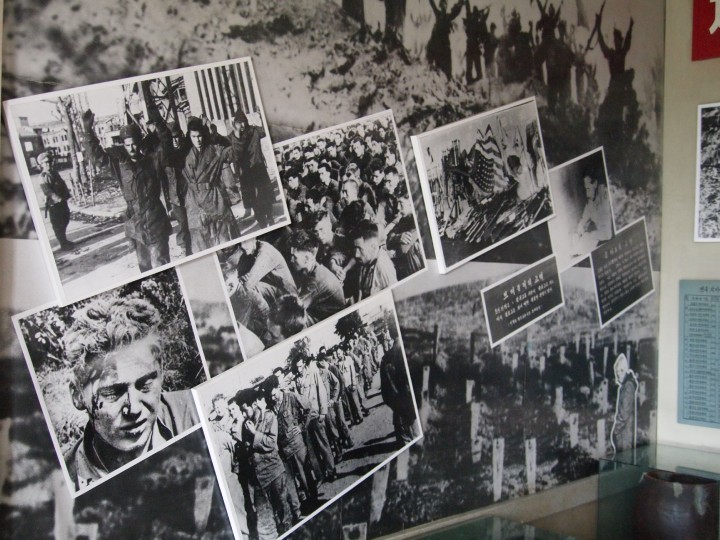
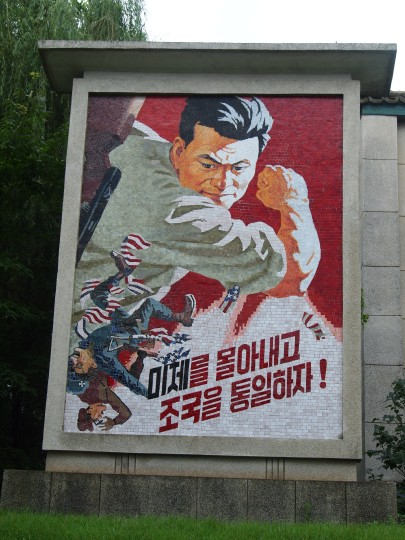
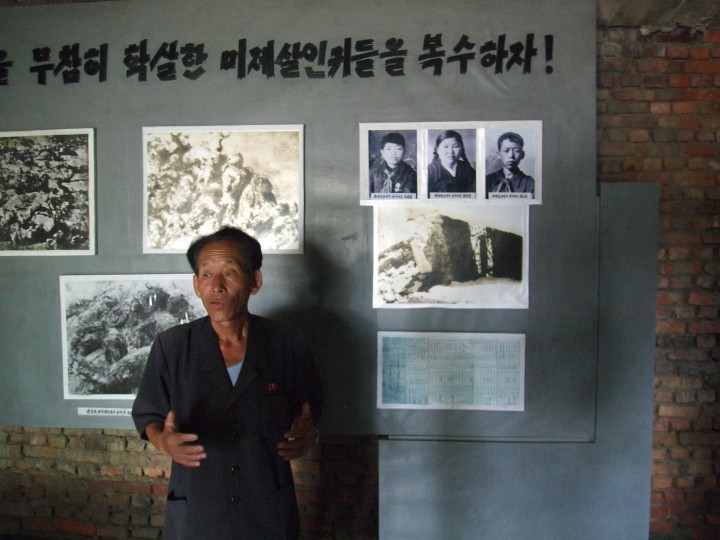
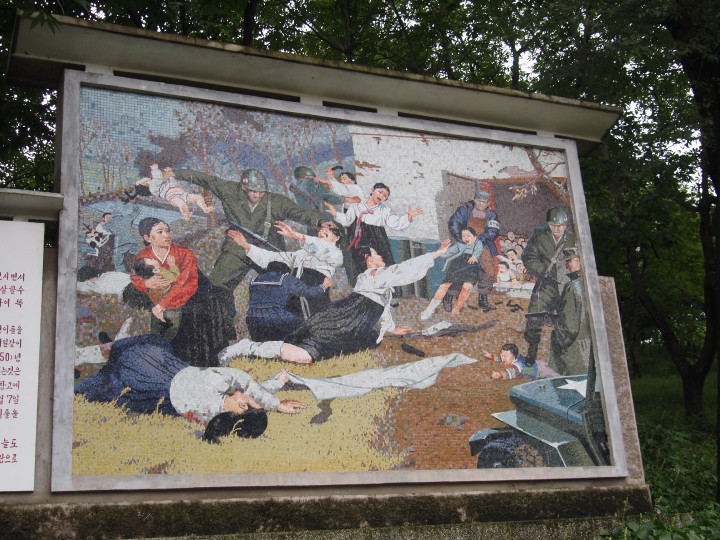
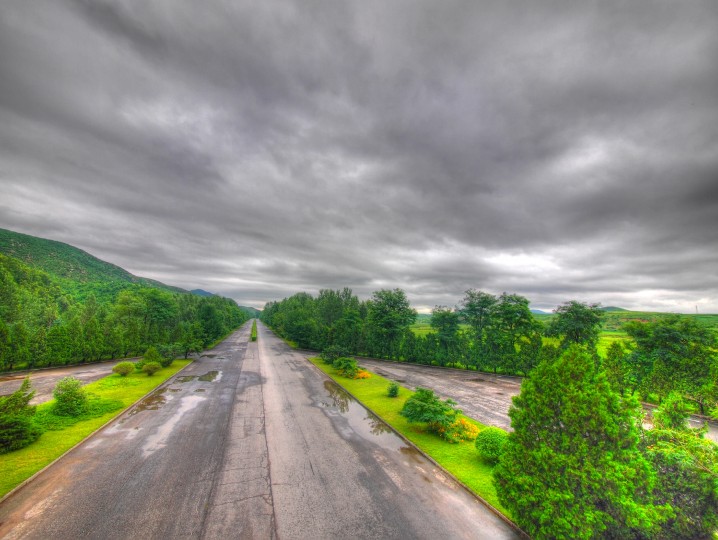
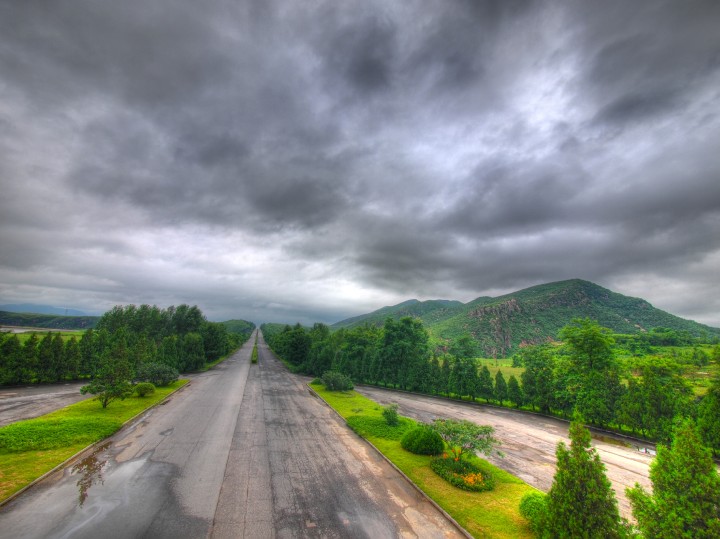
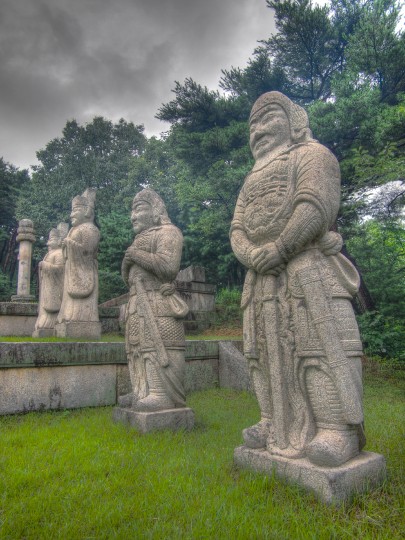
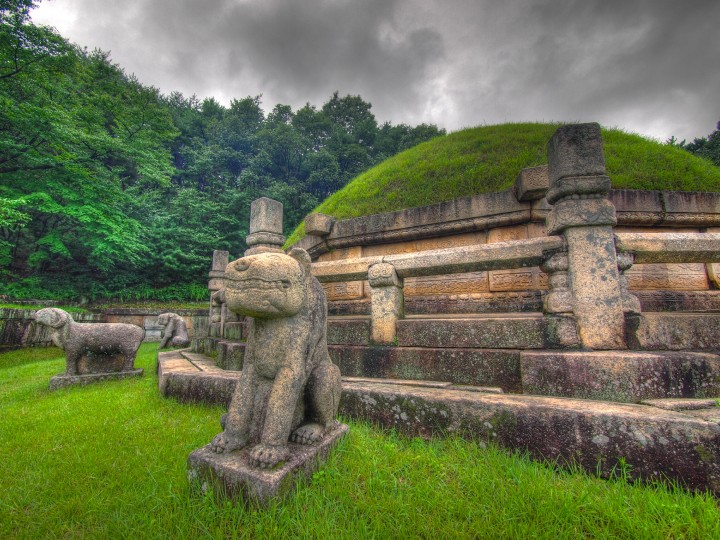
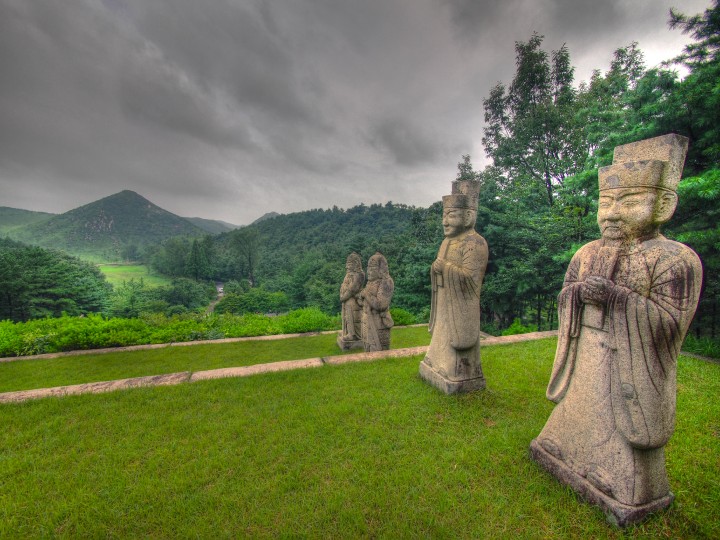
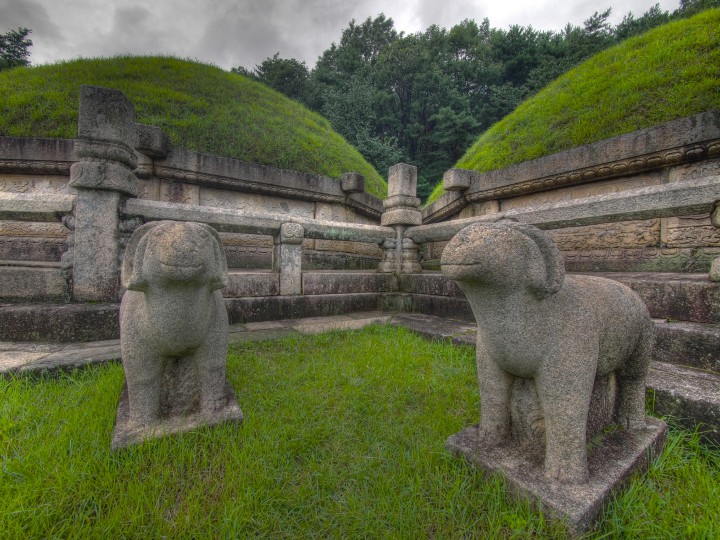
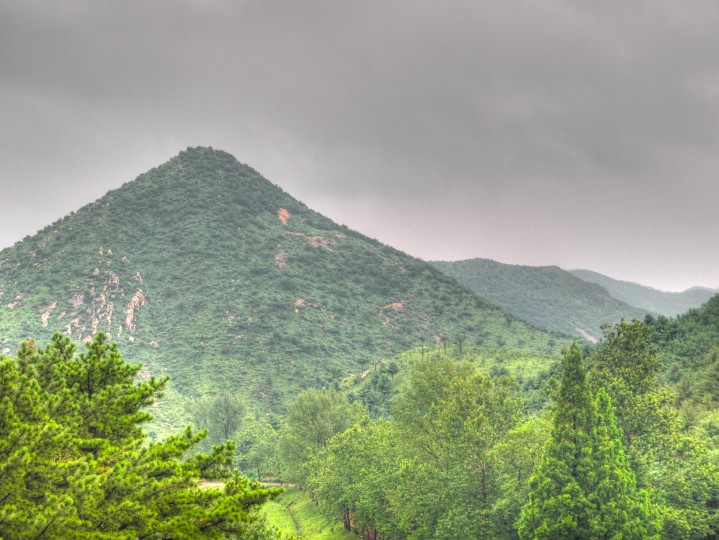
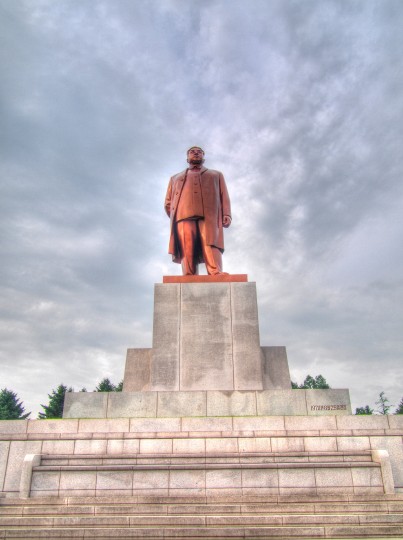
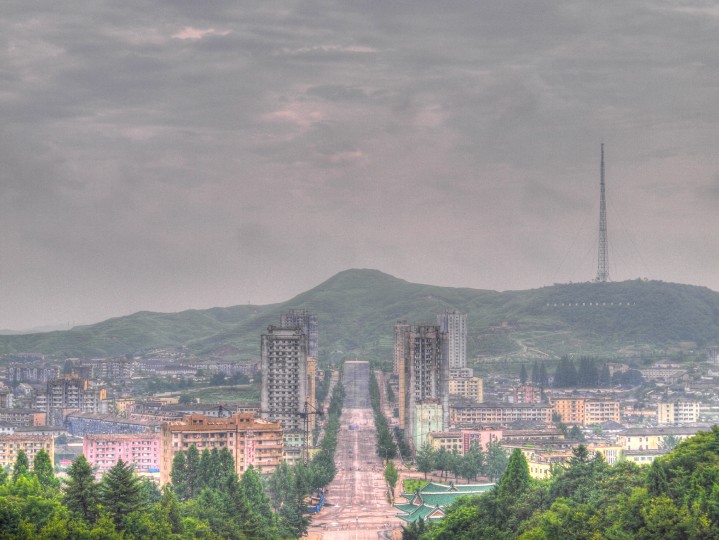
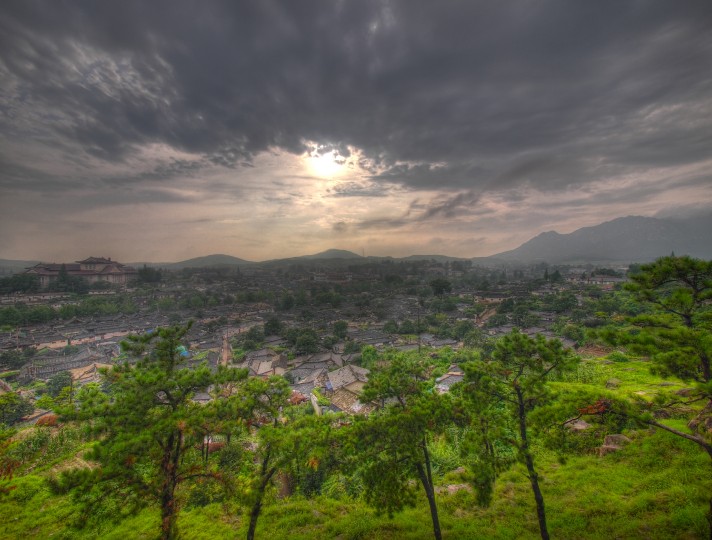
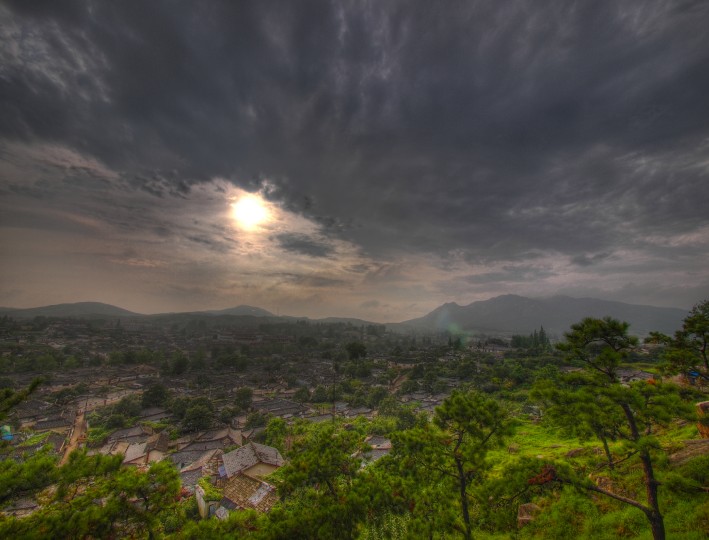
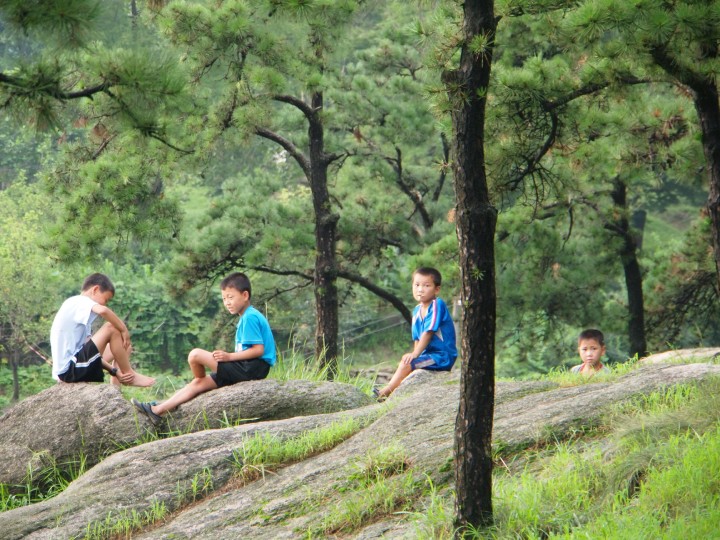
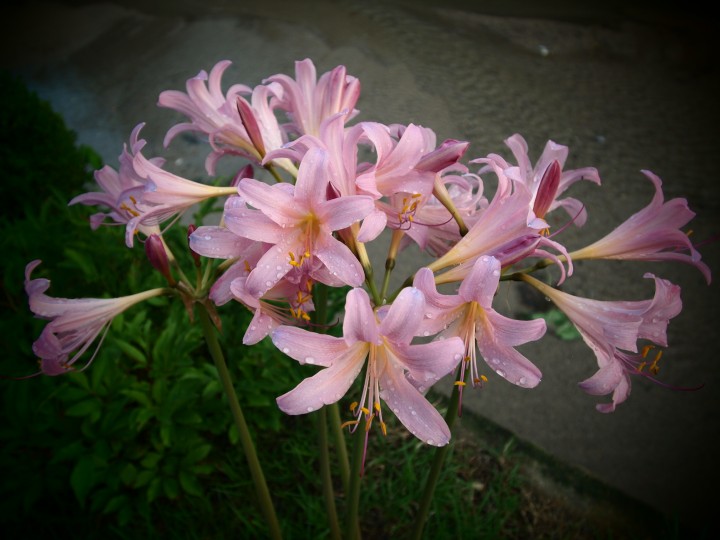
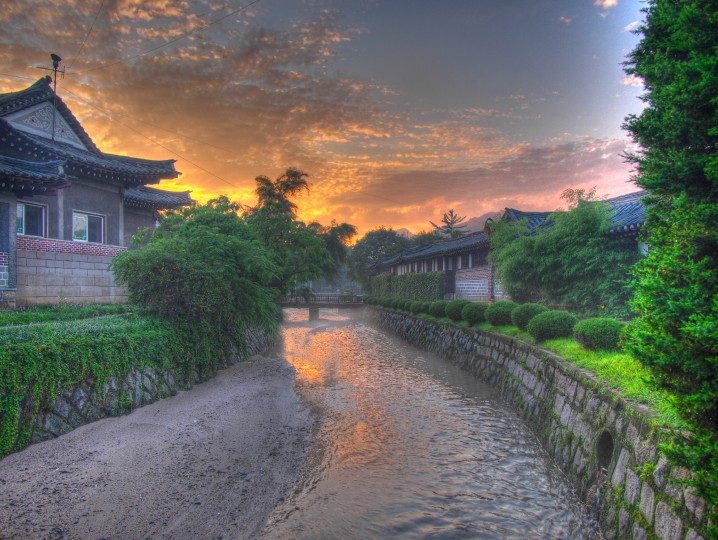
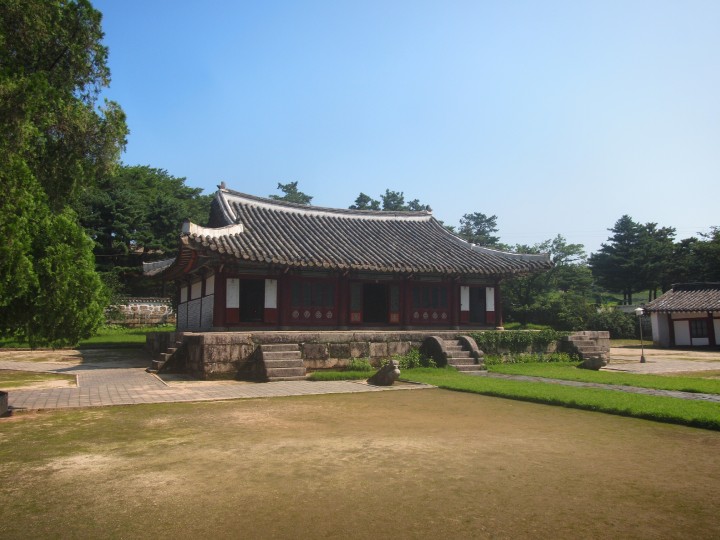
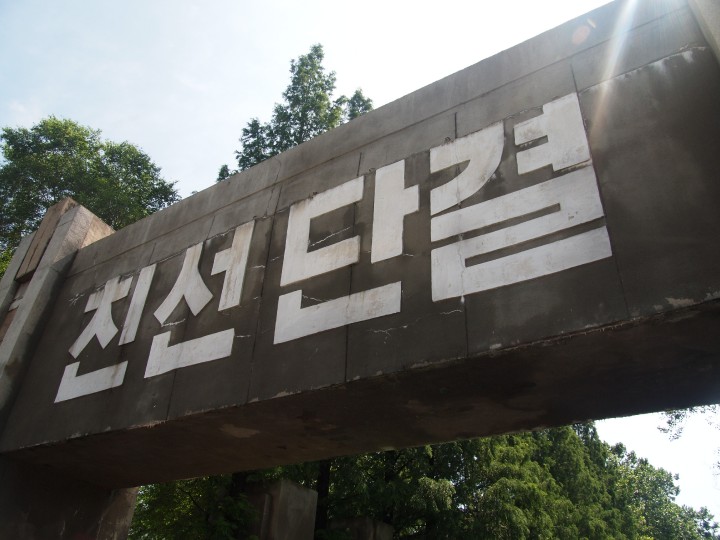
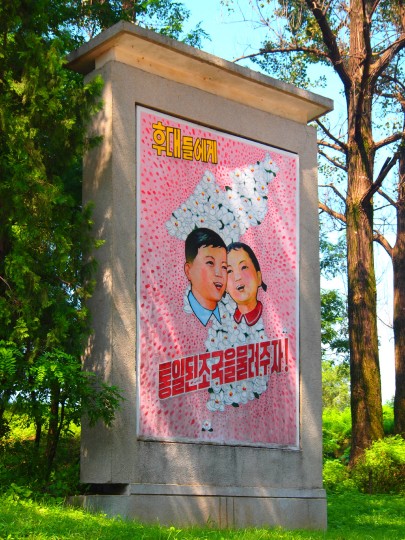
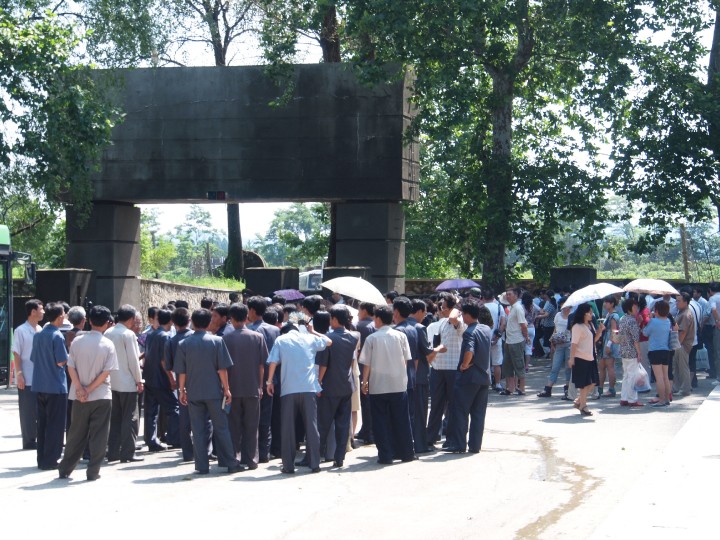
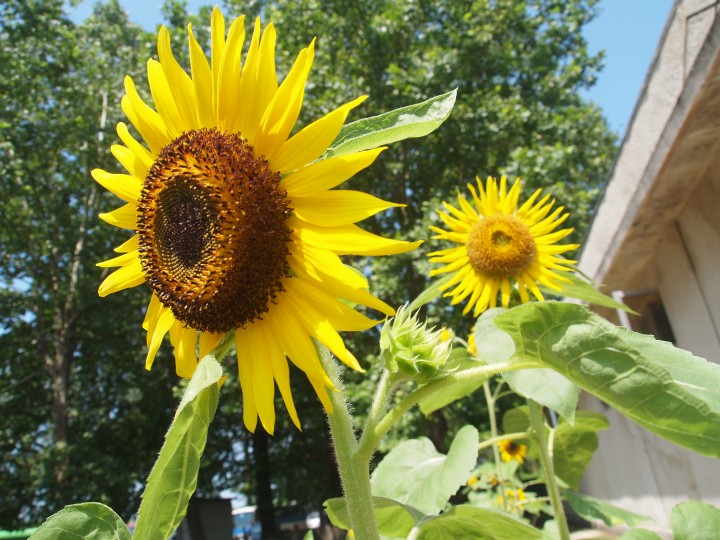
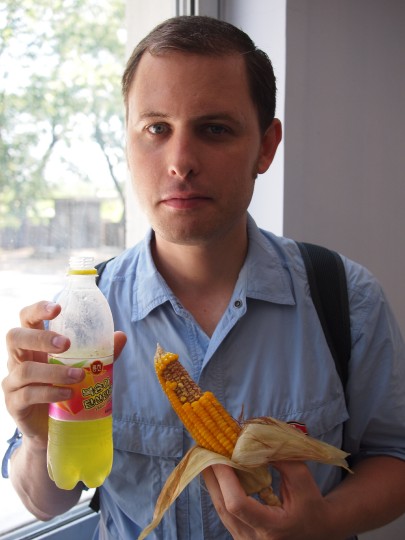
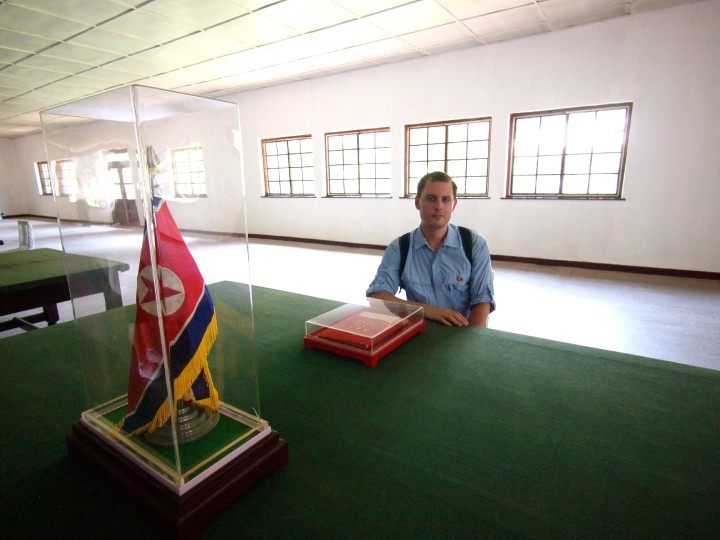
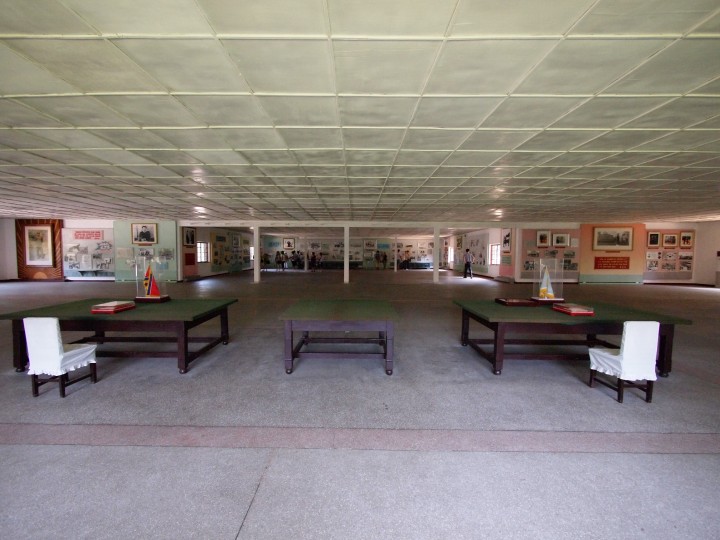
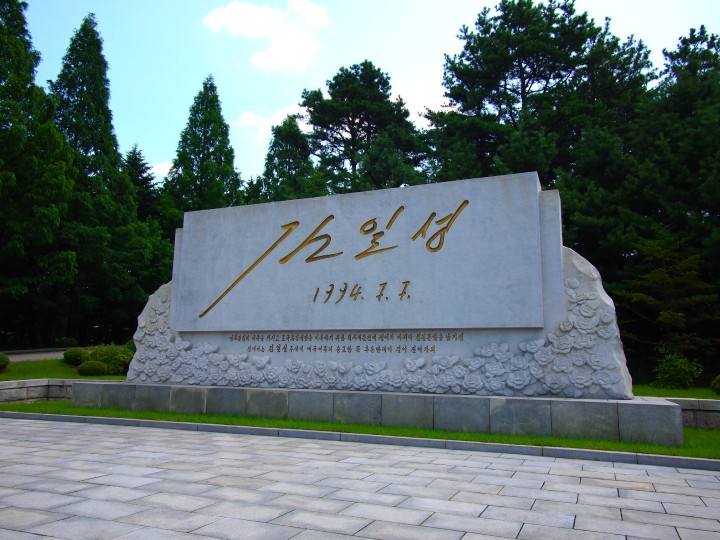
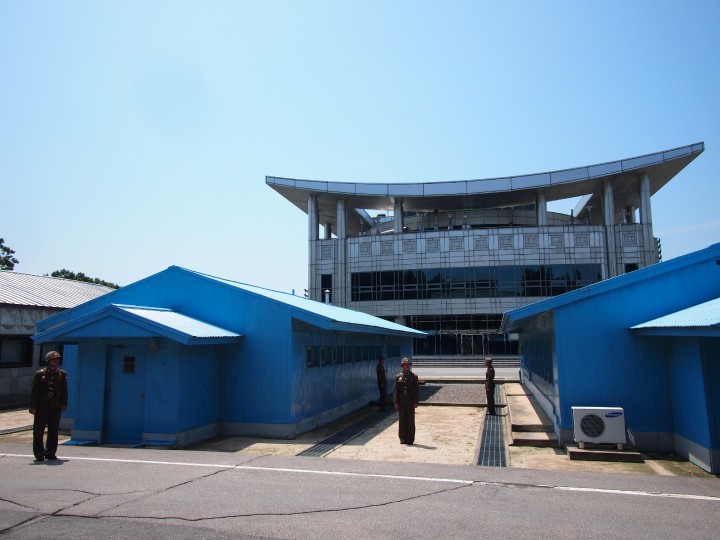
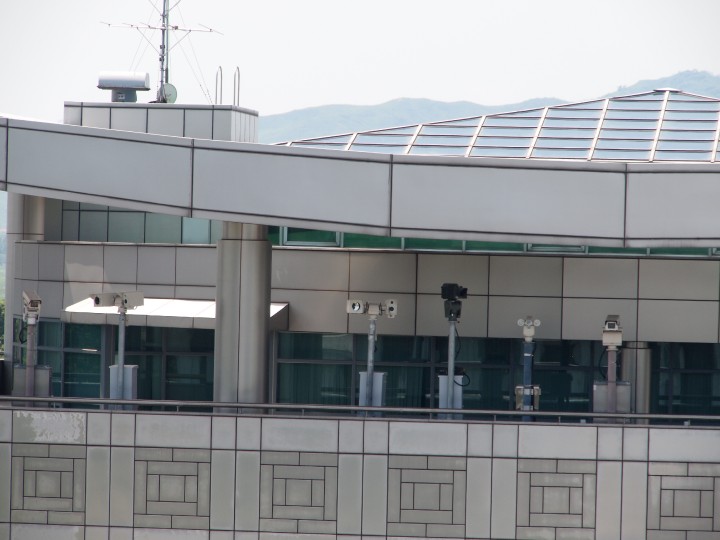
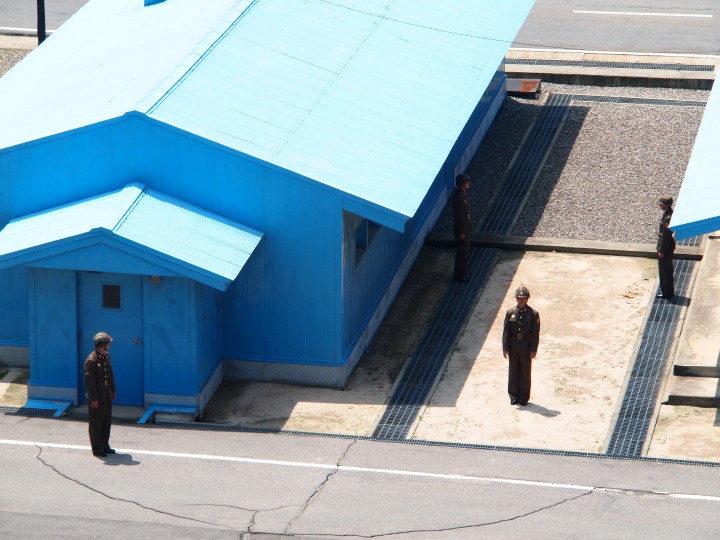
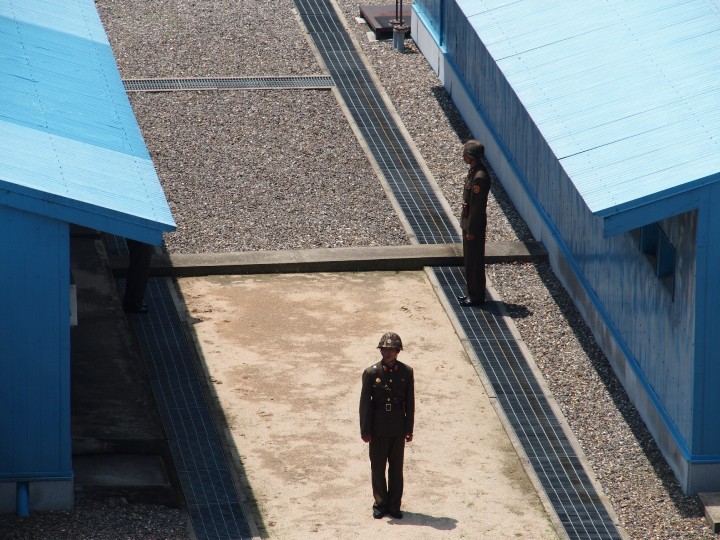
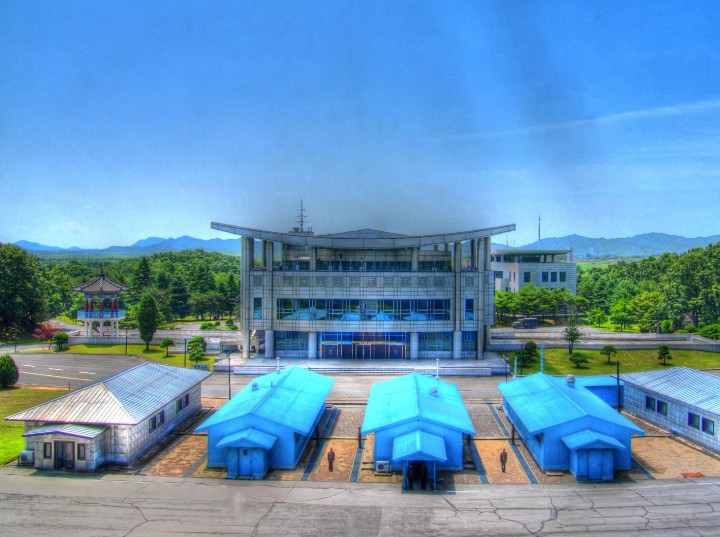
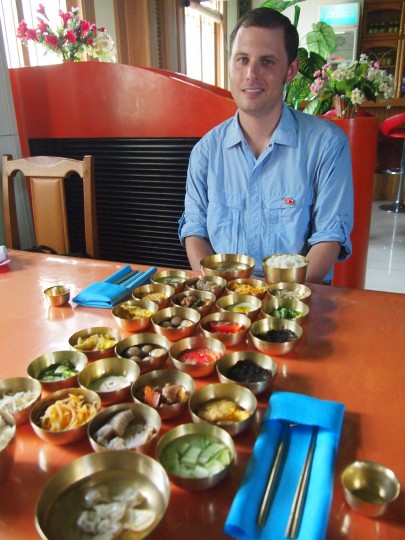
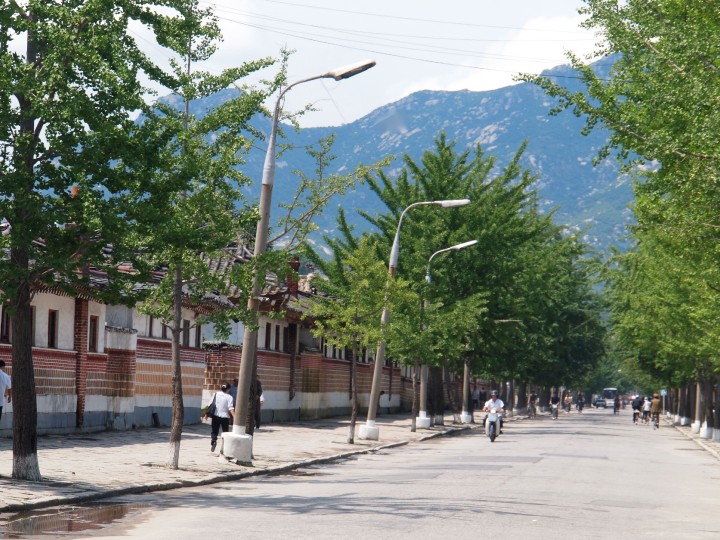
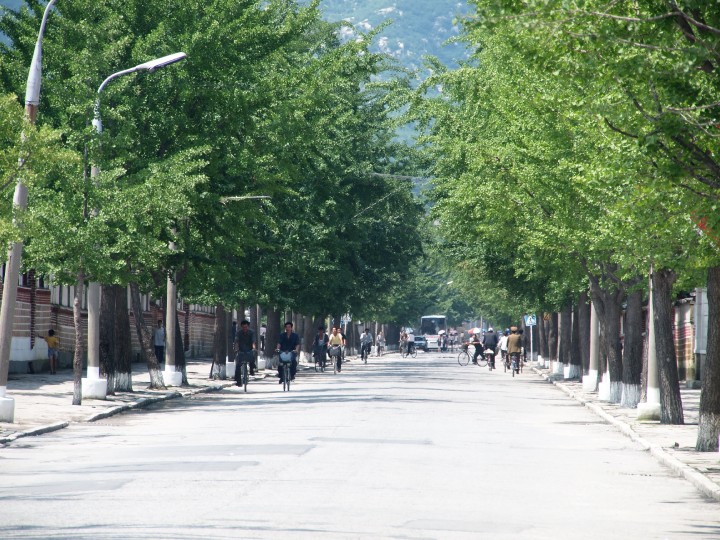
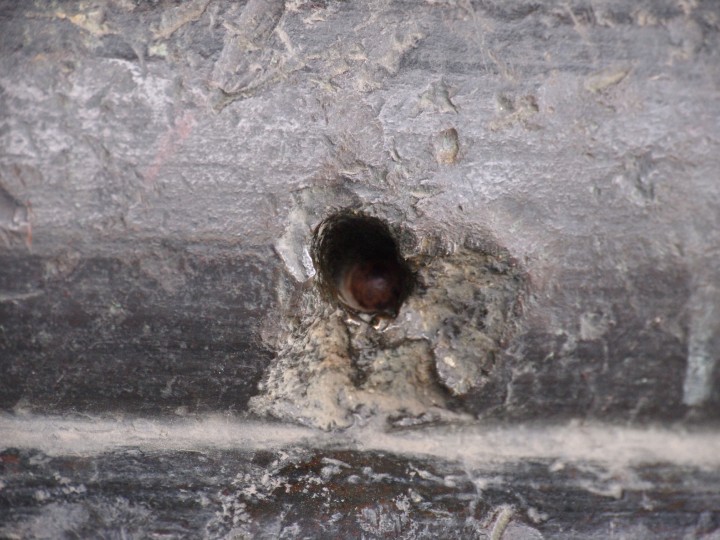
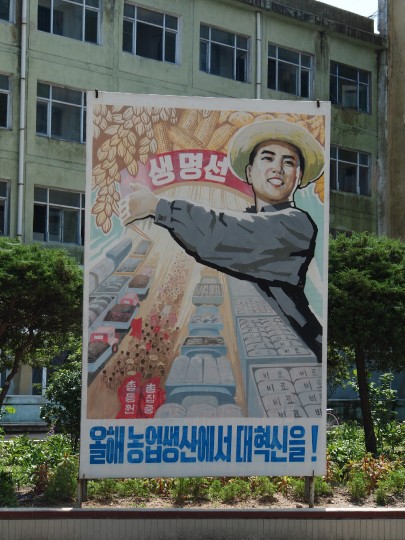
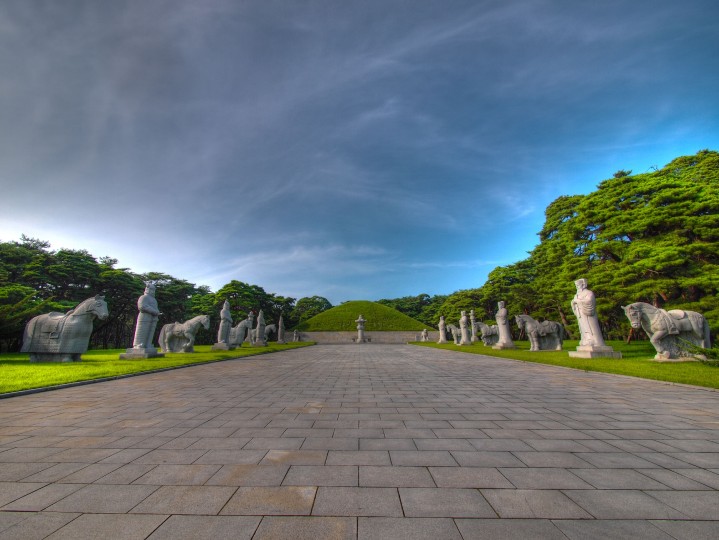
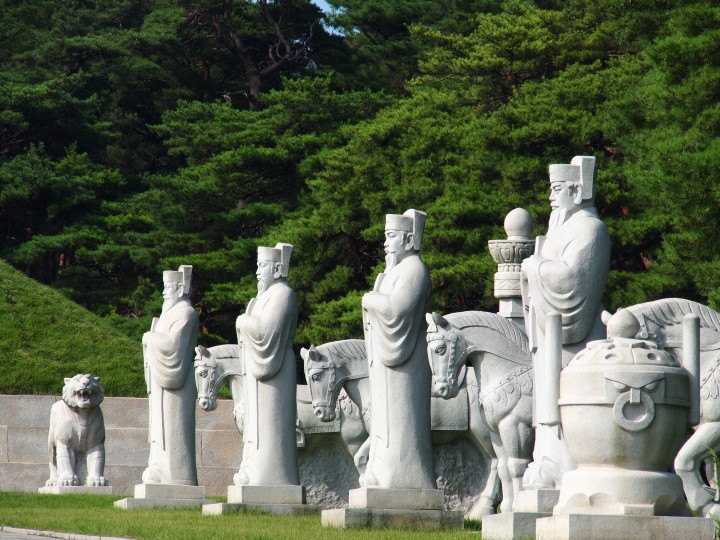
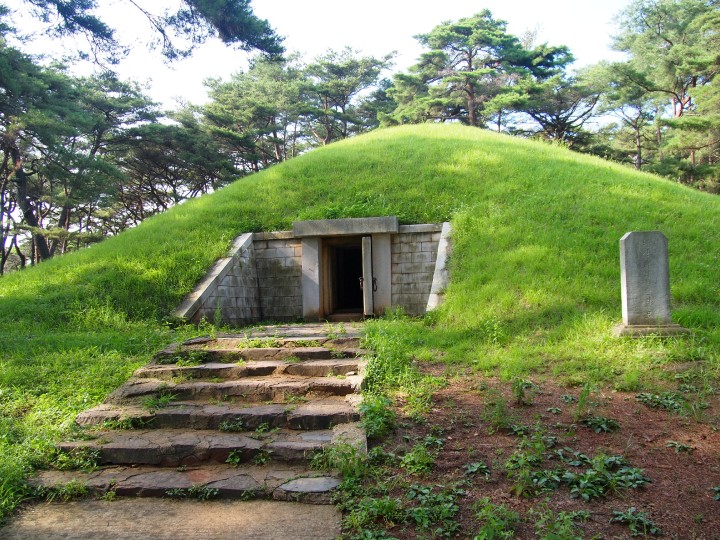
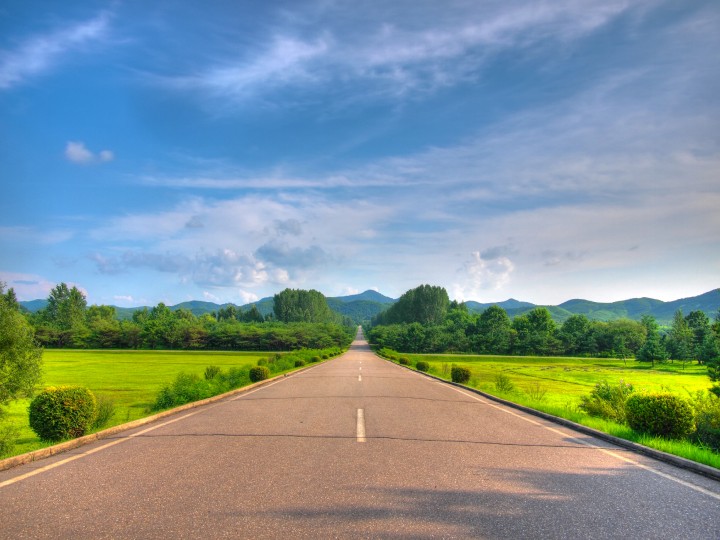
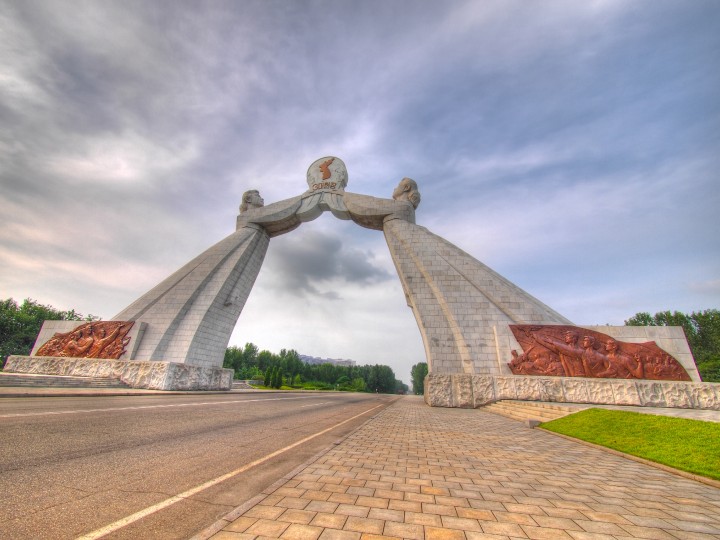
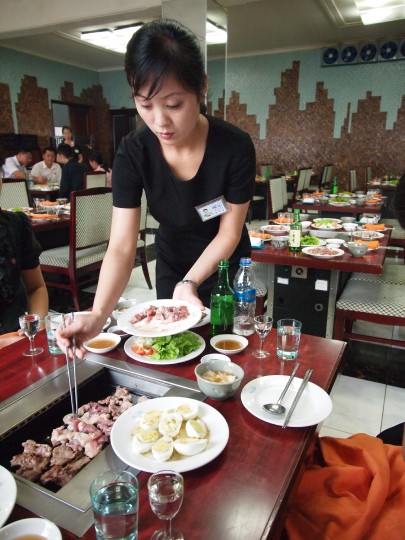
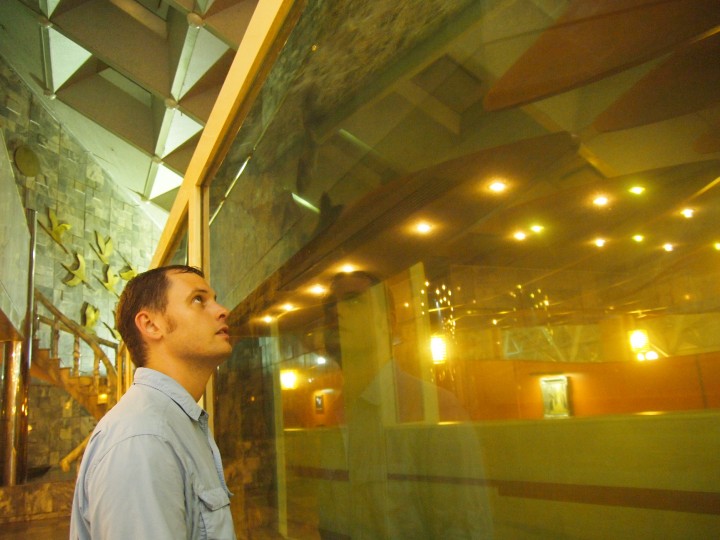
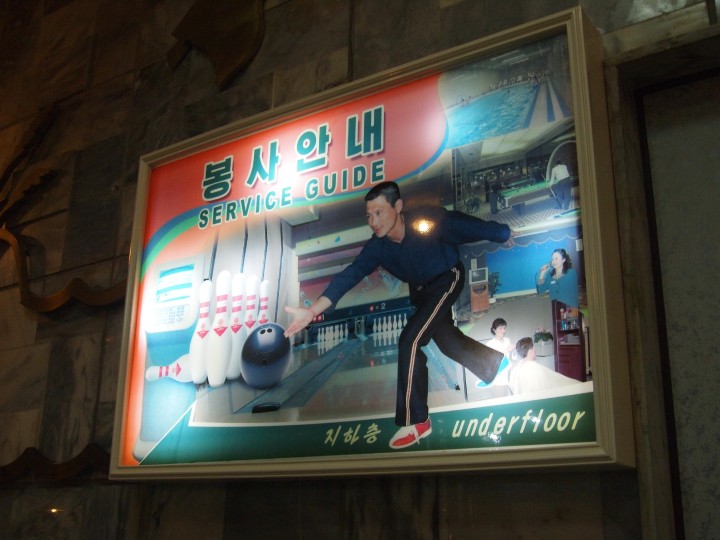
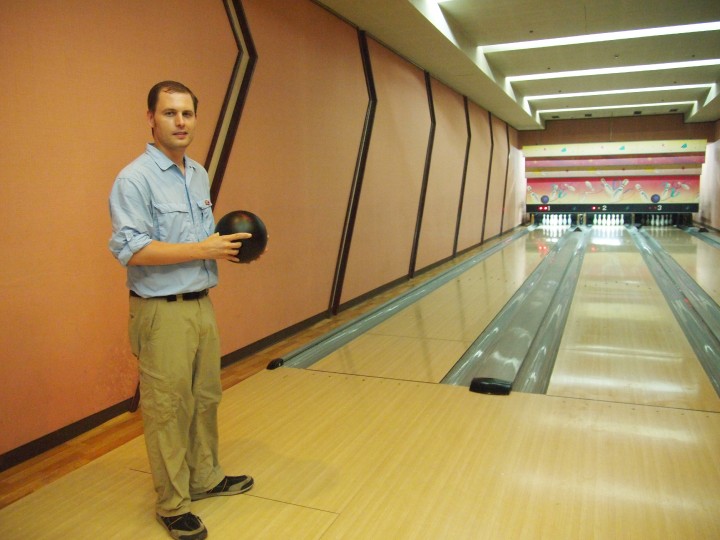
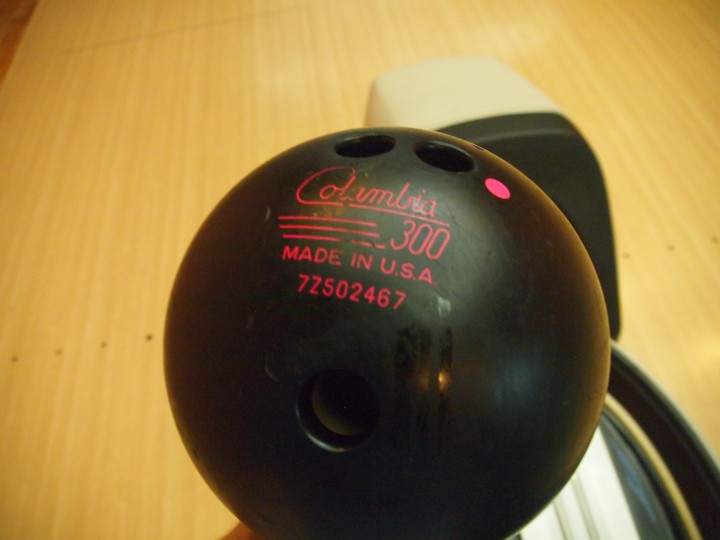
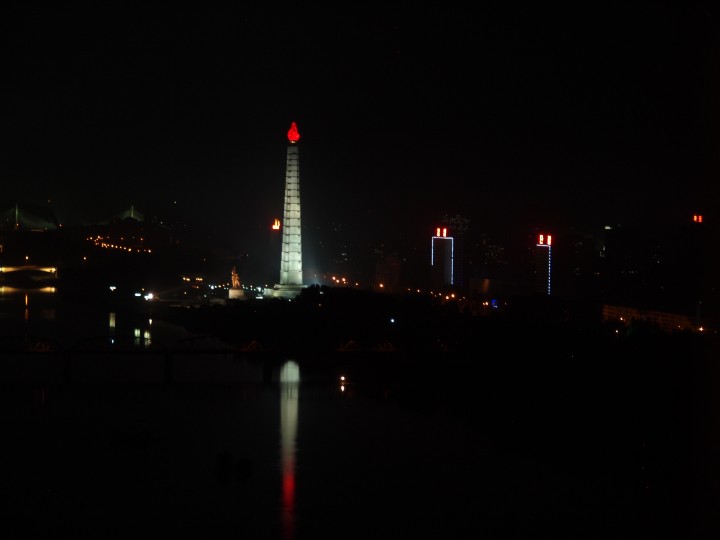
13 thoughts on “Two Americans in North Korea”
Pretty incredible! I’m now at almost an hour behind at work. Thanks for the entertainment!
Thanks! I tried to keep most of the blog entries reasonable in length, but this one is definitely the “unabridged” trip report. Glad it’s still readable =)
Wow, what an amazing experience. How many Americans visit N. Korea per year? Mannitol? Really? Why would they have Mannitol for sale, very strange. North Korea, I mean DPRK…….check ha ha
I think the short answer is “not very many.” There are a decent number of europeans and plenty of chinese tourists though. We only saw that weird “Hilton Mike” guy once, and at the end we saw an American family that had a kind of “missionary” air about them (not a good idea there). And yeah, we actually saw Mannitol at three different stores. No Tylenol/Ibuprofen/Aspirin/Naproxen….. but plenty of Mannitol! Apparently, the state pays for any care ordered by a doctor, but anything “extra” you have to pay for on your own. Anyone who’s had a stroke or bleed seems to have the idea that it’s a good idea to get regular infusions of Mannitol for several years afterward “to clean the blood for the brain.” This isn’t ordered by doctors there, but people think they need it (not sure who tells them this), so they buy the Mannitol and infusion supplies on their own, and then pay someone on their own to have it infused. Very weird for sure.
What an awesome experience! The details were great – I could kind of picture myself there too! So did you feel that the people there genuinely believed and felt the respect towards the leader or was it more out of fear? From what I’ve watched recently on DPRK, I felt that the reverence by the people were forced… so interesting and scary that you were being watched!
Rita, it’s really hard to tell how much of the behavior is genuine and how much is governed by fear. My impression (partly) was that their sense of identity, of national identity, is completely wrapped up in this kind of hero worship of their leaders. Also, I think that even though it’s not acknowledged as such there, the Juche “idea” that underlies much of the politics there is really a religion. And religion requires faith… So I really think that fills the void that exists in the total absence of authorized religious practices. All of that being said though, I did have a few interactions that had me thinking a particular person(s) maybe wasn’t completely “drinking the Kool-Aid” so to speak. Of course, I’ve elected to self-censor some of those things on the blog because I don’t want anyone getting in trouble.
What a great trip and experience! Did you set your trip up with a specific tour company that specializes in working with Americans in North Korea? Or did you do everything independently?
Thanks! As I understand it, it’s not currently possible to set up a tour to DPRK completely on your own. There are a few companies that specialize in this and work with the North Korean government travel agency (called KCNA, I believe). From my research, there’s really only ONE company that is well established. I don’t want to plug them specifically by name, but I’ll say that if you do a google search for “travel to north korea” they come up as the third result behind wikitravel and the consulate. They have created a few documentary films in addition to their work organizing tours. With this agency, (or any that operate there) it is possible to set up an “independent” tour. This means that the only people in the “group” are the ones in your party, and it can even be a group of one. We really enjoyed the trip there and will remember it forever. We also want to go back one day, I highly recommend a visit.
Correction to the above: the government-run travel agency that actually handles any tours (once inside the country) is called “KITC” (Korean International Travel Company). It’s not KCNA (Korean Central News Agency), lol. I guess I’ve seen that acronym in print more
Your story is very interesting! Thanks for shranig it. ^_^ I myself am half Hong Kong Chinese, half mixed of German, English, Irish, French, and Swiss, and my niece (my sister’s daughter) is like you, 1/4 asian and all those nationalities PLUS more! She has blue eyes and light reddish brown hair, and though she doesn’t LOOK very asian, she really embraces her asian side and is proud of it. She hasn’t had the chance to experience Asia, yet though. I hope she can go there someday That’s awesome that you can speak Korean! Is it your first language? Or is English your first language? Or French? hehe XD
!!!!! thanks so much for these
WOW just what I was searching for. Came here by searching for kim
The restaurants and shops are all non-smoking,
as are some hotel floors; but the casino
and common areas are giant ashtrays. York is also currently being promoted as a destination of choice to the Chinese as part of the year long, UK Now programme.
For starters, there’s the Dairy Guesthouse, a fully restored venue that
has all the original features of a Victorian house
yet is located a mere 200 yards from the city centre.